Introduction
Introduction – EVGA GTX 960 SSC Review
Nvidia launched the GTX 960 back in January adding another version of Maxwell below the excellent value GTX 970. The 750TI was our first taste of Maxwell back in February of last year. The reference design of the 750 Ti features a ridiculous TDP of 55W and doesn’t even require a single 6 pin power connector. Although it wasn’t part of the 900 series and wasn’t the flagship card, it got enthusiasts craving for more Maxwell because it performed so well (at such low power) for such a low end card. Now with the 900 series Nvidia has continued with their low power trend. The 980 and 970 were awesome cards. While the 980 TI dominates in terms of capability it certainly is no longer in the low power camp. The 960 with it’s low reference power of 120W definitely is in that camp.
EVGA provided our sample today, their EVGA GeForce GTX 960 SSC ACX 2.0+. As usual, EVGA is currently offering no less than eight different SKUs ranging from $199.99 to $259.99.
Below you will find tables for all of the higher end AMD & Nvidia GPUs from the past couple of years. Keep in mind that all cores are not created equal! CUDA Cores =/= Stream Processors performance wise, even Kepler Cores =/= Maxwell Cores.
Now let’s delve into what options we can get from EVGA for the GTX 960:
So there are a few different versions of the GTX960. The version we are reviewing is the SuperSC ACX 2.0+. Most notable are the 4GB versions – we will be monitoring VRAM to see if 2GB really is enough for this card. Then we have essentially two different PCB/coolers with different VRM designs. The better (bigger PCB with more VRM phases) design also has a better cooler (ACX 2.0+). Then lastly there are choices such as backplates and how much of a factory overclock you are willing to pay for.
Now let’s open up that box and take a look at the card itself!
The EVGA 960 SSC ACX2.0+
The EVGA 960 SSC ACX2.0+
As the name suggests the EVGA GeForce GTX 960 SSC ACX 2.0+ comes with EVGA’s latest revision to their ACX line of coolers. EVGA first introduced the ACX line back in May of 2013 with the launch of their 780 lineup. The latest revision promises even quieter and more power efficient cooling than its predecessor. We saw EVGA showing off a demo of this latest revision at CES and we’ve since reviewed it as part of the 970 SSC review. Thanks to Nvidia’s extremely power efficient architecture EVGA was able to design a cooler that doesn’t even have to turn on unless under heavy stress! Coined “dBi” or dB Noise Inverter, it turns off the fans of the cooler if the card is below 60C, which with no additional OC, we found is an awful lot of the time.

EVGA put these marketing slides and videos together for their new ACX2.0 coolers, later on in the review we’ll discuss our findings.

(Courtesy of EVGA) New Features:
- dBi – dB Noise Inverter turns fans off below 60C, generating 0dB of noise during idle!
- QSD BIOS – Quick Switch Dual BIOS allow you to switch to secondary BIOS with the flick of a switch.
- MMCP – Memory MOSFET Cooling Plate reduces MOSFET temps by 47% and Memory by 14%.
- OPT – Optimized Power Target offers 33% more power over reference.
- SHP – Straight Heat Pipes reduce GPU temperature by almost 5C!
Marketing aside, lets get this GPU unboxed:
The 960 SSC comes in now standard EVGA packaging.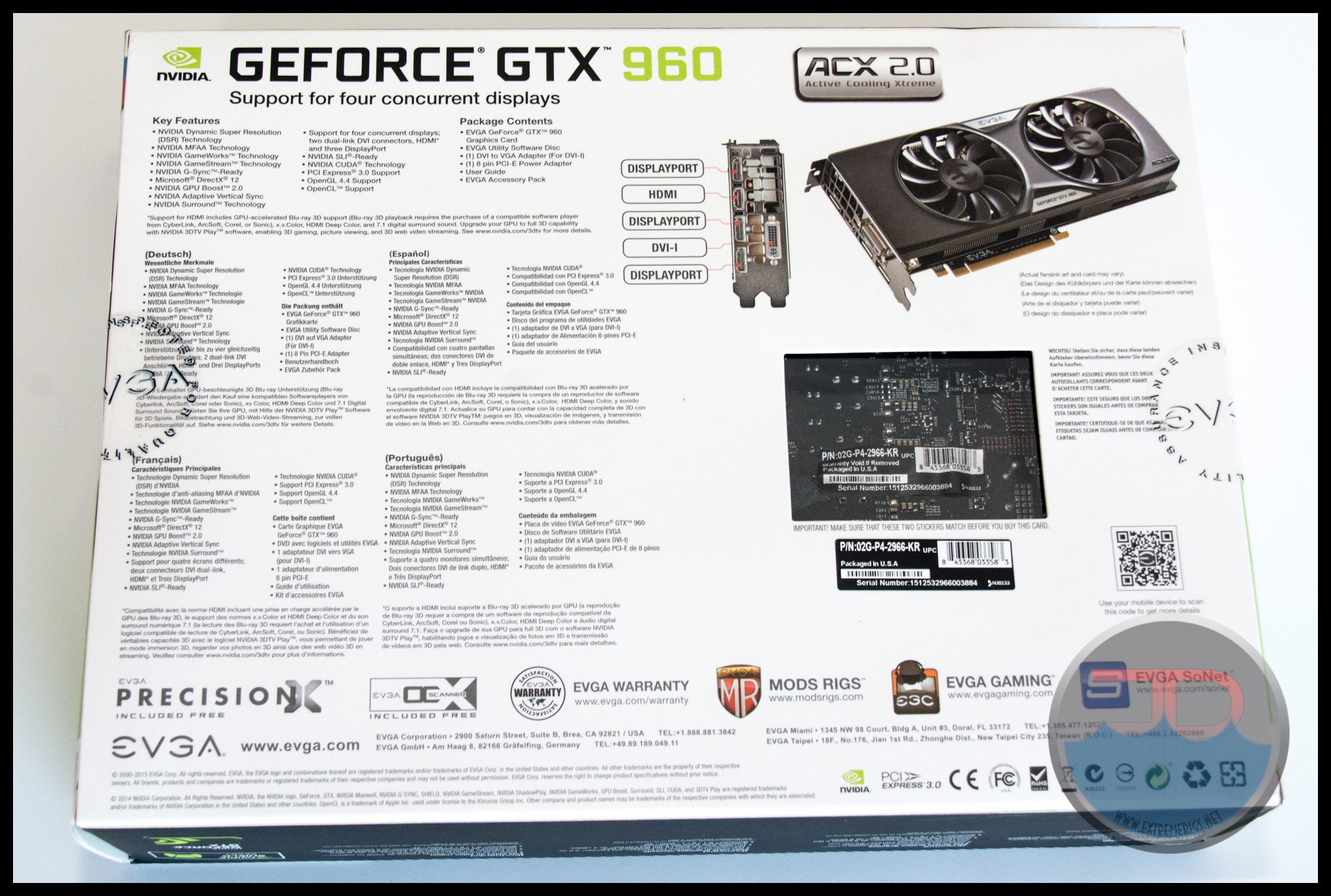
Inside the box you’ll find the usual suspects of goodies from EVGA:
- A large poster
- Several stickers
- Driver disk
- Instructional Manual
- Additional marketing handouts
- DVI->VGA Adapter
- Dual 6 pin -> 8 pin power adapter
Nothing particularly exciting but still more than most vendors send.

While at this point we are well aware that the fans will not turn on before the GPU hits 60C, we definitely don’t blame EVGA for wanting to throw this in the box for those that may not be aware of this feature. We can only imagine someone who’s building their computer for the the first time freaking out because their fans aren’t turning on. Take note others vendors, small handouts like this can save you a lot of trouble in the future.

Although it’s nice to see that the cables are black, we would have much preferred to see them individually sleeved like the PSU cable sets EVGA offers. These glossy, and sort of sticky, cables are not our favorite.
Finally, the card itself! We do miss the protective foam that EVGA used to ship their GPUs in.
The molded plastic did its job and the GPU arrived in perfect condition with plenty of additional plastic protection on the card itself. Read on for a look at EVGA’s ACX2.0+ cooler!
Up Close & Personal
Up Close & Personal
Once the plastic was removed the elegance of the card really shone. The shroud has a textured matte black finish while the fans are a slightly shinier black.
Lots of reviewers were complaining that the SSC didn’t come with a backplate. EVGA offers so many different models at different price points for a reason. If a backplate is a deal breaker for you then you can simple drop another $10 and get the FTW version that is essentially otherwise the same but for a slightly higher core clock. At least EVGA offers backplates at all, unlike some GPU vendors.
We aren’t sure if Nvidia took customer feedback into account but they’re finally hopping on the display port bandwagon and we’re huge fans. For years AMD has been the king when it comes to display output, starting with their ATi 5870 Eyefinity Edition GPU that had no less than six mini Display Port outputs. Sadly, despite that GPU coming out six years ago, AMD seems to be going backwards, now only offering one DVI-D, one DVI-I, one HDMI, and one Display Port. You may be thinking, “well that sounds like a lot of different outputs, why is that bad?” Now that 4K/UHD displays are more common, bandwidth of a display output is actually a deciding factor. You can’t simply plug an HDMI 1.4 or a DVI cable into a 4K monitor and get the maximum resolution or Hz that the monitor is rated for. Every monitor that has a greater resolution than 1920×1200 at 60Hz requires more bandwidth than DVI-I can offer. DVI-D can support resolutions up to 2560×1600 at 60Hz but falls short when it comes to faster displays or UHD displays. HDMI 1.4, the most commonly HDMI spec before the GTX900 series would allow you to display the entire 4K resolution but you would be limited to 30Hz, which we found to be a lot more obnoxious than one might think.
Luckily, Nvidia has taken all of this into account and now supplies us with probably the best configuration we can possibly hope for. While we personally don’t use DVI or HDMI and wish GPU vendors would only use a bunch of Display Ports, we understand that a large majority of users still use DVI and/or HDMI and don’t want to have to buy adapters in order to use their new GPU. Nvidia Surround is only capable of working with three monitors though so for the time being three Display Port outputs is plenty. It’s also worth clarifying that point – games can be played across three screens, but Nvidia drivers only output to four per card, meaning that you shouldn’t assume that 5 output options means they can all be used at the same time.
Engraved in the corner is some text that “ACX 2.0”- worth noting that this is the ACX 2.0+ which is defined by straighter flatter heatpipes inside the cooler itself.
Overall, EVGA did really well with designing the ACX series of coolers. They’re simple, sleek, and look really good in a case.
This will be your view when the GPU is resting in the motherboard, assuming you have a standard ATX case. For cable management, having the power connectors in the middle of the PCB isn’t our favorite, but it’s not end of the world.
Lastly, at the end of the cooler there’s some orange text that reads “SSC” and glows when the card is turned on. It should be noted that while there are small mini PCB versions of the 960 – this one is designed to cool well and so is as large as the 970 from EVGA:
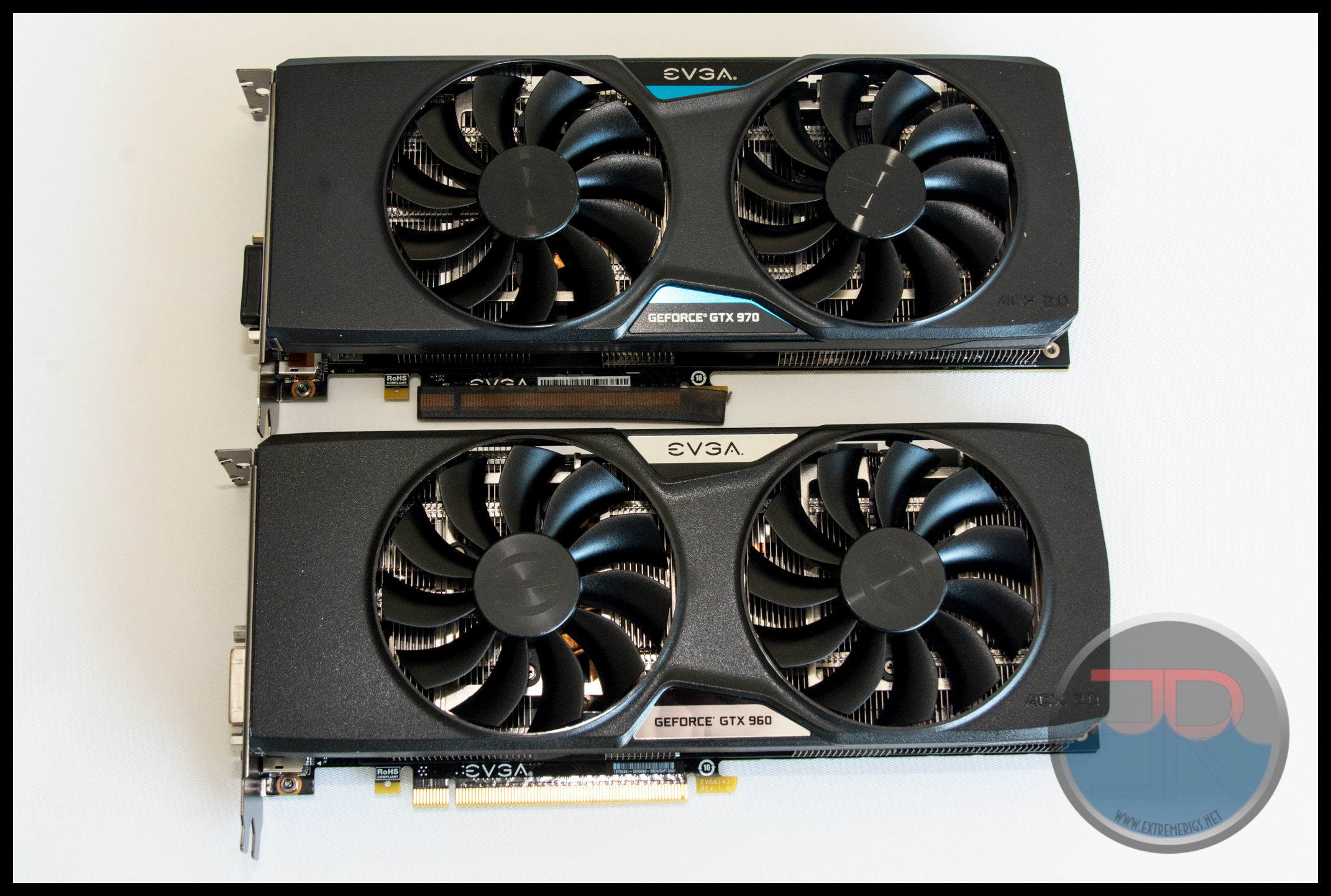
At first glance they look almost identical and if anything the 960 looks more suave!
Without the product marking you’d need to know to look for differences such as SLI and power connectors to really know which was which.
Read on as we remove the cooler and expose the PCB!
Removing the Stock Cooler
Removing the Stock Cooler
To remove the ACX cooler all we had to do was have a phillips head screwdriver and remove the four screws around the core, couldn’t be simpler than that!
Upon inspection, we were incredibly impressed with the amount of TIM EVGA has used with their GPUs. GPU vendors have built up a reputation of putting an obnoxious amount of TIM on the GPU cores that is a huge mess when you take the two apart. However, EVGA did great. Maybe a little more than the average user may apply, but compared to their competition, this is the best stock TIM spread we’ve seen!
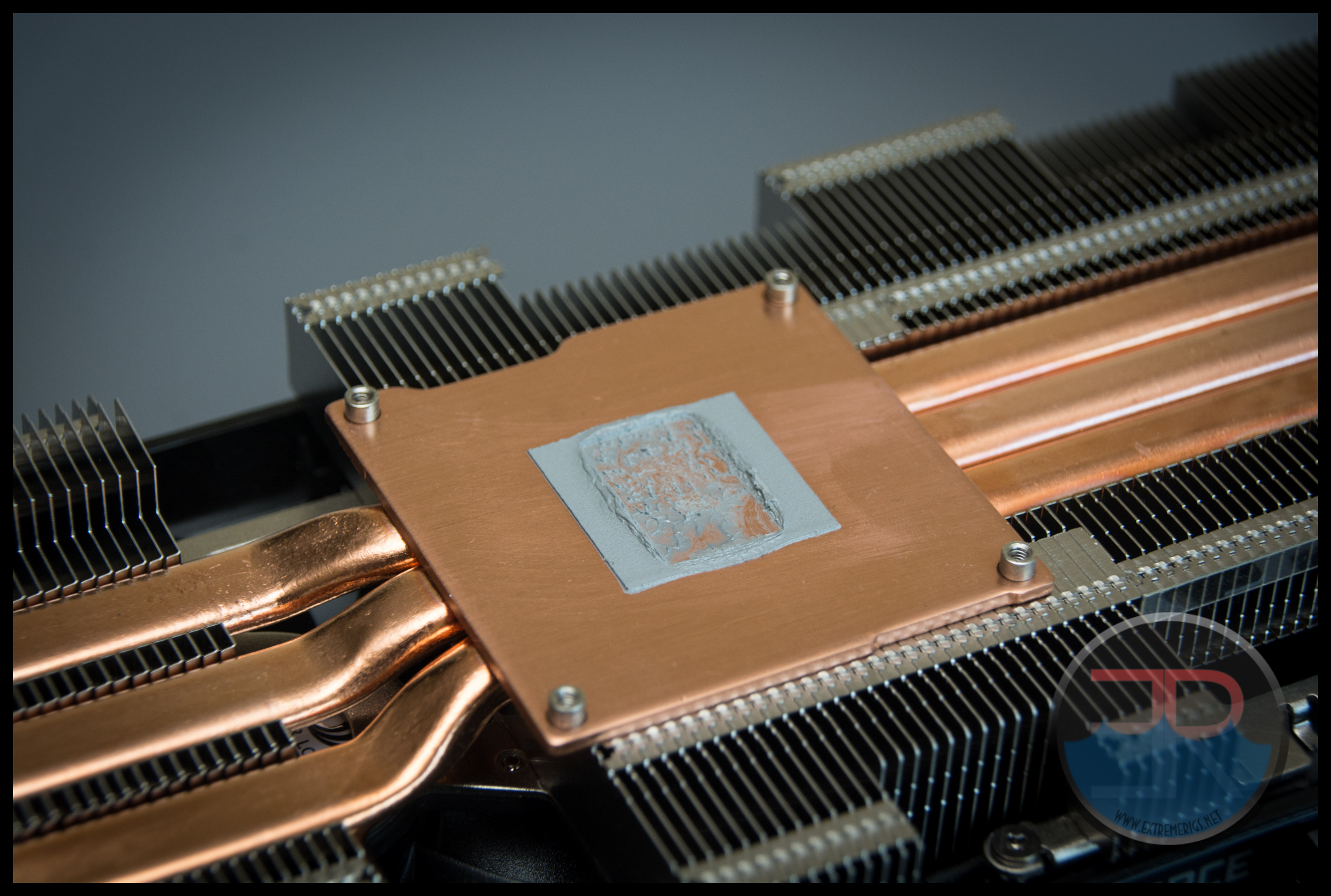
While the core is directly cooled by the main heatsink the rest of the board components are shielded by a brushed aluminum style heatsink plate:
The metal plate cools the VRMs & memory chips and it looks beautiful! Granted, we are pretty partial to the brushed metal look, but it’s nice to see a manufacturer go the extra mile and make sure all aspects of the card look great.
It also has the added bonus of making the card more friendly to use with after market AIO coolers and universal water blocks.
Removing the cooling plate takes a little more work than the ACX cooler due to the relatively large amount of screws that are involved, but it’s still nothing more than whipping out your phillips head screw driver.
We checked the thermal pads to ensure good contact was being made, which it was.
Here we can see also now see the VRM phases – 6 on the left side of the card for the core, and 2 on the right side for the memory.
Overall, the GTX 960 ACX2.0+ is a great looking card. Considering how relatively short the lifespan of ACX has been, EVGA have developed it into a great looking cooler that performs great!
Now let’s see how well the card performs!
Test Setup
Test Setup Configuration
For our setup we used Asus’s Maximus VI Impact board along with Intel’s flagship CPU, the 4790k is watercooled inside a CaseLabs S3 with an decent overclock of 4.8GHz. Memory is 2x4GB of Corsair Dominator GT running at 2133 CL9. Power is provided by an AX 850. Storage is provided by a 960GB Crucial M500 SSD.
We will be running tests both at 1920 x 1080 (1080p) & 3840 x 2160 (UHD or 4k) using a Dell P2715Q monitor. Despite the high cpu overclock there may be occasions at 1080p where the CPU may limit performance and so we show total CPU load also. Bear in mind that poorly threaded games that do not utilize multiple cores well may not read 100% across all cores despite effectively throttling.
We use HWiNFO to record all of our data. Windows 8.1 was used as well as the 355.82 WHQL drivers.
While the reference GTX 960 has a boost clock of 1178MHz EVGA have increased the stock clocks of the SuperSC up to 1342MHz. In our testing however the card boosted higher still. The 960 typically ran 1380-1390MHz on average. We also ran the 1080p tests with an overclock on the GPUto 1498MHz and 8200MT/s on the memory – this was achieved using EVGA Precision X and a voltage bump. We had issues with MSI’s afterburner for overclocking on this card so we would definitely recommend Precision X instead. Despite the extra power of the overclock, the higher power limit on this version of the card (160W) meant that we were never even close to power throttling. The ACX 2.0+ with it’s default fan profile was also able to keep the card virtually silent (<1200RPM) even when loaded for hours when overclocked and overvolted.
While the games were also benchmarked at 4K we do of course know that the card will struggle there. We included this to prove out the data so that we can back up our opinions but we didn’t run the card in an overclocked state at 4K simply because it won’t make an unplayable game suddenly playable.
Now let’s see some results!
Futuremark Benches
Futuremark Benchmarks
"Futuremark creates benchmarks that enable people to measure, understand and manage computer hardware performance. Our talented team creates the industry's most authoritative and widely used performance tests for desktop computers, notebooks, tablets, smart phones and browsers."
Since 1997 Futuremark has been pumping out a variety of benchmarks that can used to test nearly every aspect of your PC. They have kindly provided us with the software necessary to kickoff our GPU reviews!
3DMark11
While 3DMark11 isn’t the newest benchmark around it’s a classic that has been used for ages and we figured we may as well bring you the numbers! We tested on the “Extreme” preset, no other modifications were done.
While 3DMark11 isn’t the newest benchmark around it’s a classic that has been used for ages and we figured we may as well bring you the numbers! We tested on the “Extreme” preset, no other modifications were done.
For the most part the 960 fills in a nice spot between the 750 TI and the 970 SSC. It also trades blows with the 280X which is pretty impressive as that is still a great card. Below you can see a graph that details the GPU usage, max CPU thread usage, and the FPS during the benchmark. The drops are the loading screens between the individual benchmarks that make up 3DMark11.
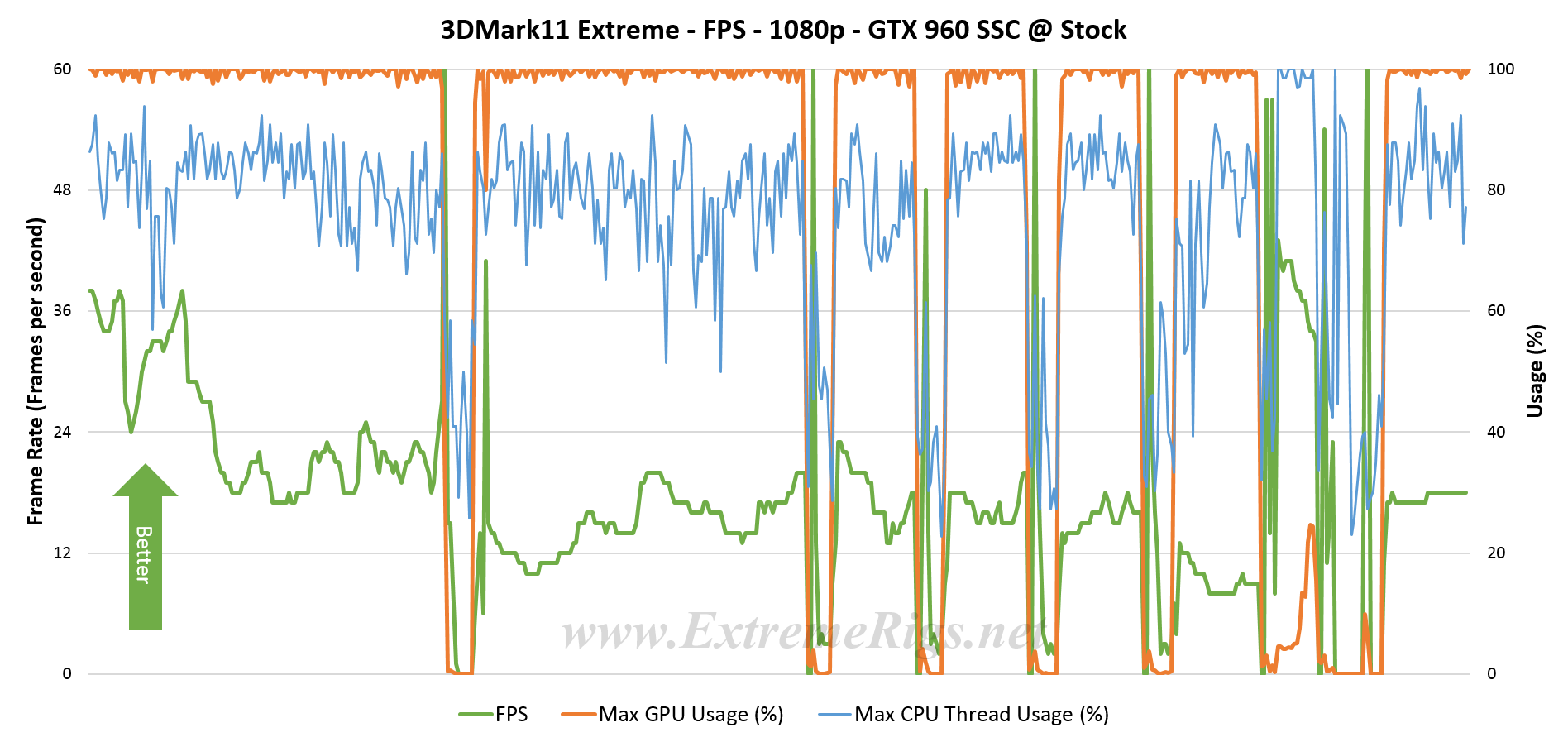
Fire Strike Ultra
Getting into the more modern benchmarks from the guys at Futuremark, we have their latest one next, Fire Strike Ultra. Similar to the ever popular Fire strike and Fire Strike Extreme, Ultra turns it up to 11 and runs at 3840×2160.
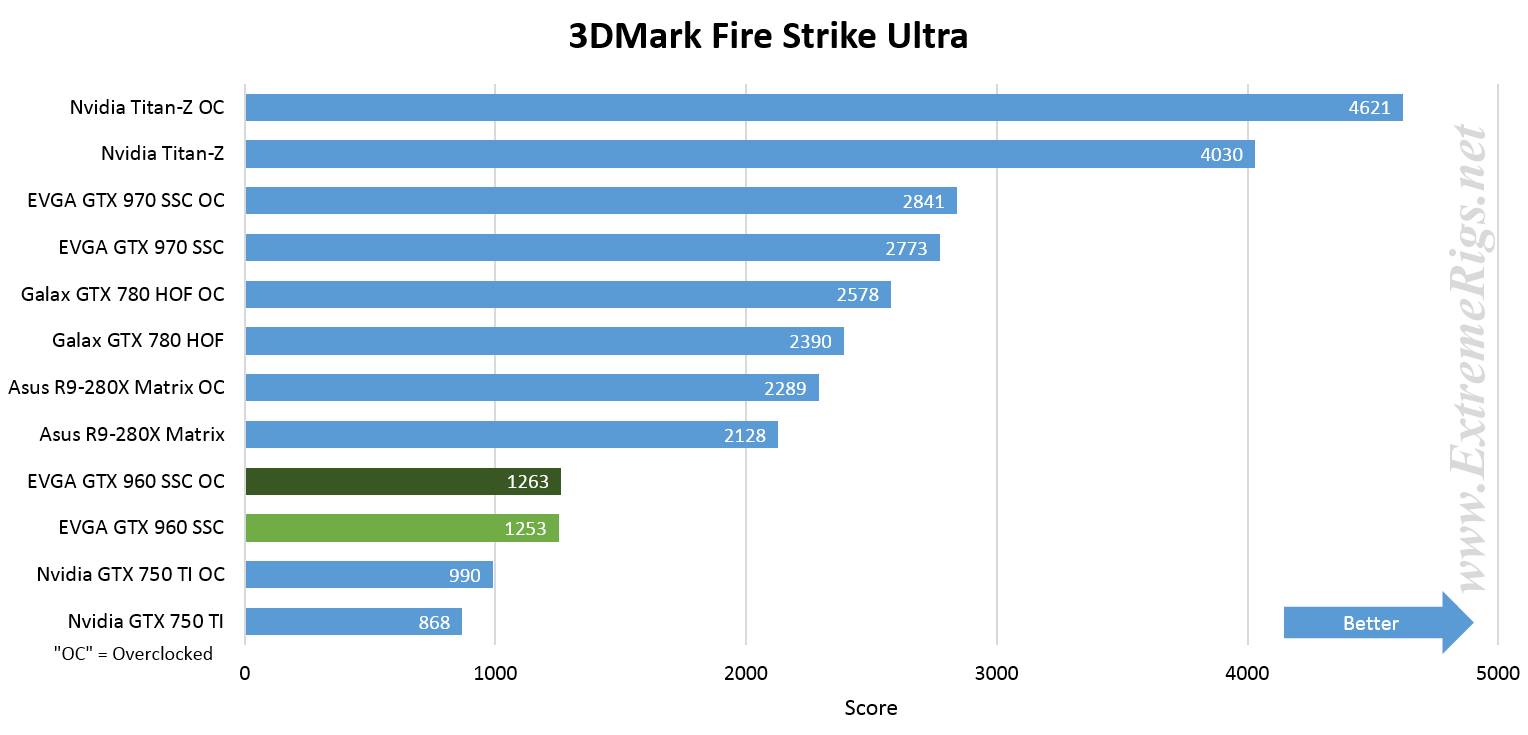
Compared to the first two older benchmarks, Fire Strike is one of the best benchmarks for measuring performance numbers in a controlled manner. Because this “ultra version” runs at 4K you can see that the 960 is not really evenly spaced between the 970 and the 750TI. Analyzing the memory usage we see that the memory is really maxed out and so we do believe that the 960 4GB version would do better on this benchmark. Below you can see the Usage/FPS report. The drops are again transitions in the benchmark to different tests.
Fire Strike Extreme
Fire Strike Extreme is next, instead of running at 3840×2160 like Ultra, it runs at a resolution of 2560×1440.
Unlike Ultra we see the 960 pull away from the 750TI now that memory is less of an issue. The memory logs show memory usage peaking at 2025MB – only 23MB below the amount on the card. This means that there may be cases where the GPU is still having to swap stuff out of VRAM rather than just leaving it in cache and focussing on rendering.
If we compare the GPU usage you can see that it’s closer to 100% than it was on Ultra.
Sky Diver
Sky Diver was also introduced recently but Futuremark recommends it mostly for testing laptops and mid-range PCs hence frame rates with good GPUs will be high! Here are the numbers for your reference though.
Cloud Gate
Similar to Sky Diver, Cloud gate is meant for notebooks and home PCs. Numbers for your reference:
Usage/FPS Report:
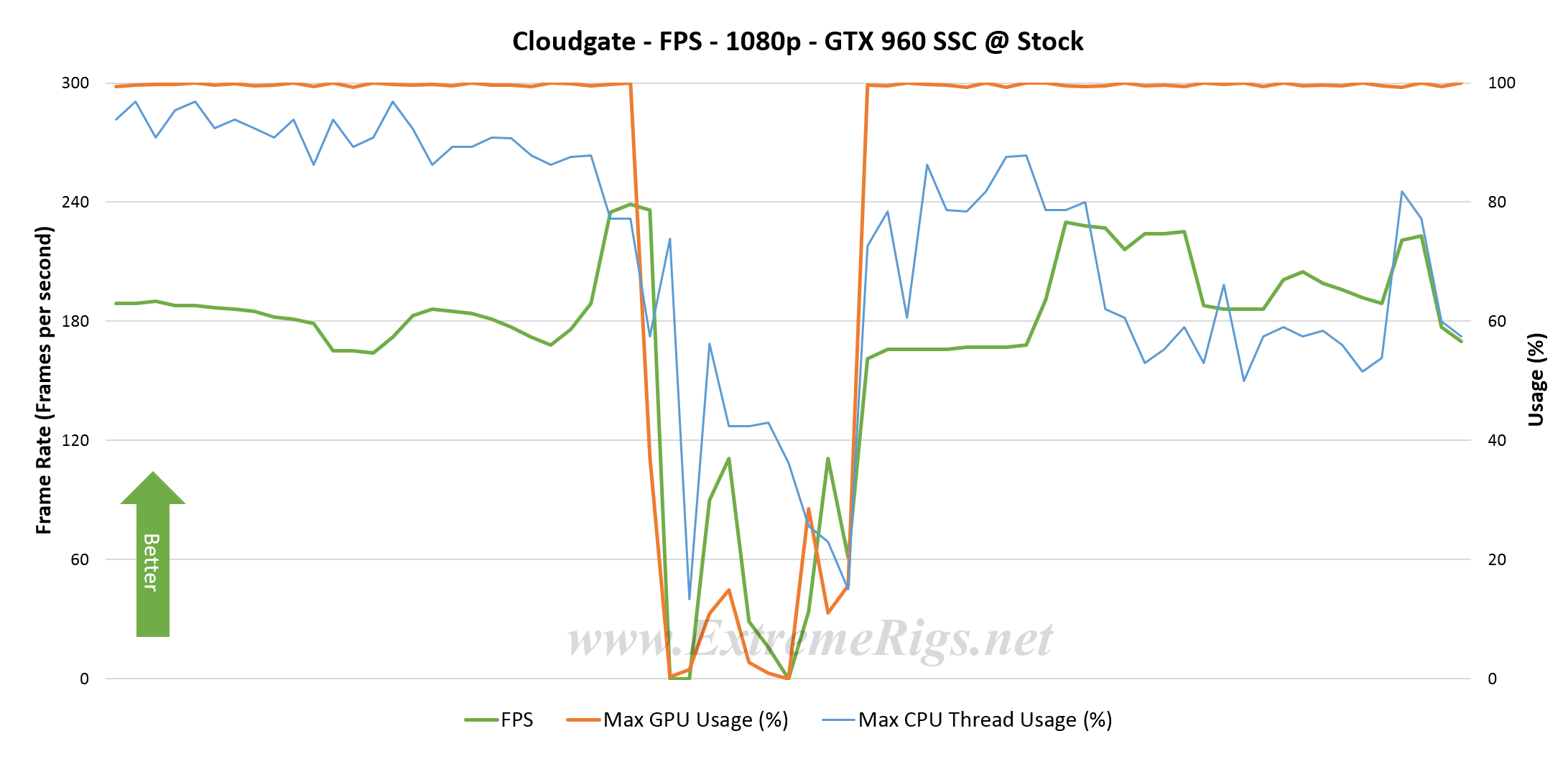 While we ran most of the benchmarks included in the 3DMark package, the Fire Strike series are the most accurate for testing high end GPUs. The scores represented there will provide users with the most accurate measurements. The rest of the benchmarks are for your reference only if you want to compare against your own hardware, systems, or mobile devices.
While we ran most of the benchmarks included in the 3DMark package, the Fire Strike series are the most accurate for testing high end GPUs. The scores represented there will provide users with the most accurate measurements. The rest of the benchmarks are for your reference only if you want to compare against your own hardware, systems, or mobile devices.
As the first benchmarks we ran, we became aware that the 2GB limit may be problematic going forwards. Typically we don’t expect VRAM to limit synthetic benchmarks, but Fire Strike Ultra proved us wrong.
Read on for Heaven & Valley benchmarks!
Heaven & Valley
Heaven & Valley
Another benchmark that needs no introduction, both Heaven and Valley are known for the beautiful “journeys” that they take you on. Of the two, Valley is the more recent benchmark, however neither have a preset that allows it to run at 4K and we had to set the resolution manually.
Unigine Valley
First we set it to the highest default settings, Extreme HD, which runs at 1920×1080.
Again we see the 960 performing in between the 750TI and below the 970. It’s also still lagging behind the 280X. See the usage/FPS report below:
Next we turned the resolution up to 3840×2160 and left all other settings the same.
As expected 4K is again simply too much for the 960 to handle with only 2GB – memory was maxed out and so it’s no surprise that it’s significantly behind the 970. The real surprise though was that the overclocked 750 TI was beating it. However the setups were very slightly different as well as driver versions so it’s not a perfect apples to apples comparison.
Unigine Heaven
First up we ran Heaven at the highest preset available, Extreme.
Usage/FPS Report:
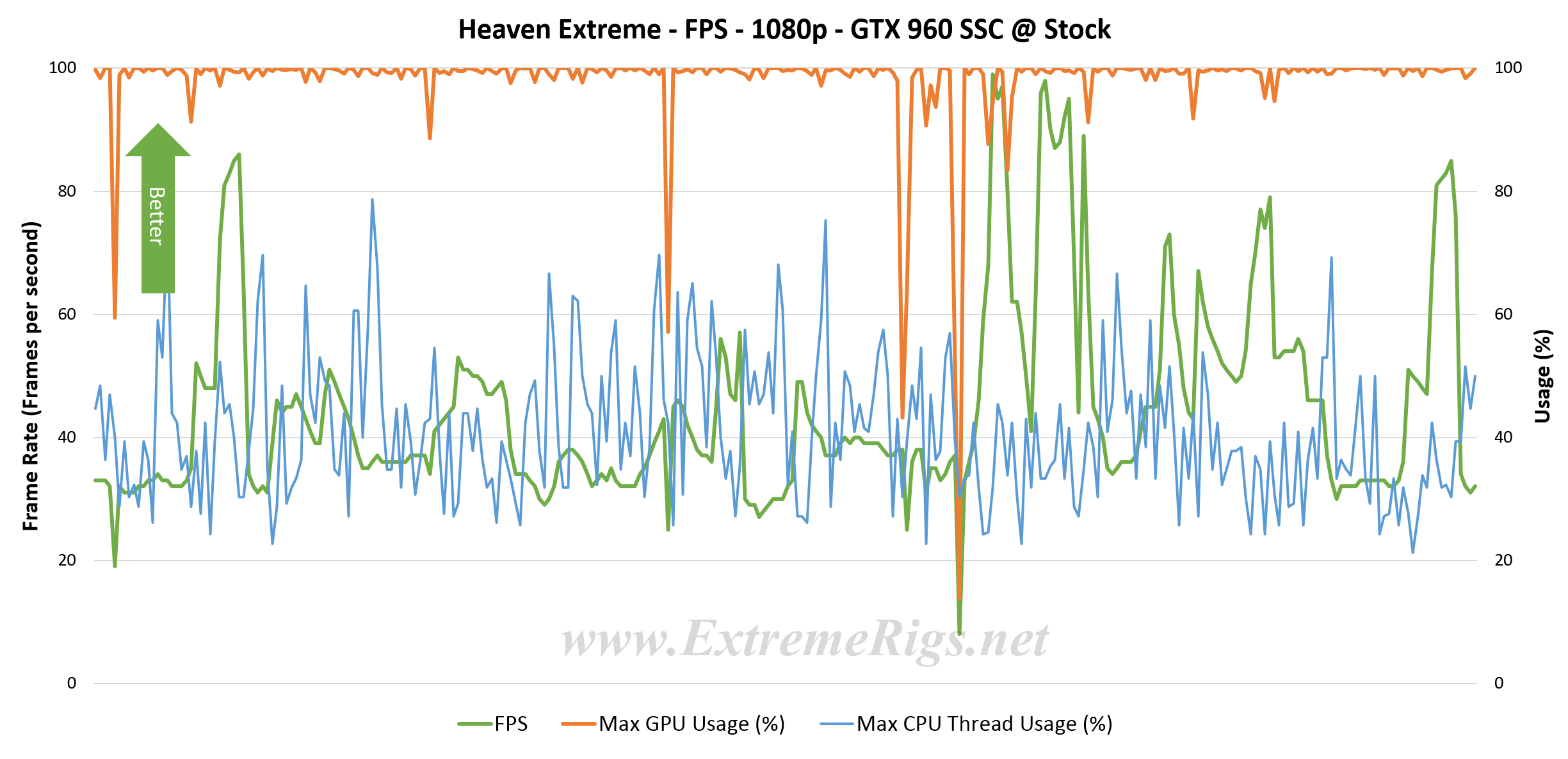 Next we turned the resolution up to 3840×2160 and kept all the other settings the same.
Next we turned the resolution up to 3840×2160 and kept all the other settings the same.
Read on for some gaming benchmarks!
Battlefield 4
Battlefield 4
Battlefield 4 is a 2013 first-person shooter video game developed by Swedish video game developer EA Digital Illusions CE (DICE) and published by Electronic Arts. It is a sequel to 2011’s Battlefield 3 and was released on October 29, 2013 in North America. We ran the game at “Ultra” settings with each respected resolution, MSAA off, and in single player mode.
- Graphics Quality – Ultra
- Texture Quality – Ultra
- Texture Filtering – Ultra
- Lighting Quality – Ultra
- Effects Quality – Ultra
- Post Process Quality – Ultra
- Mesh Quality – Ultra
- Terrain Quality – Ultra
- Terrain Decoration – Ultra
- AA Deferred – 4x MSAA
- AA Post – High
- Ambient Occlusion – HBAO
- V-Sync – Off
Kicking off with 1080p:
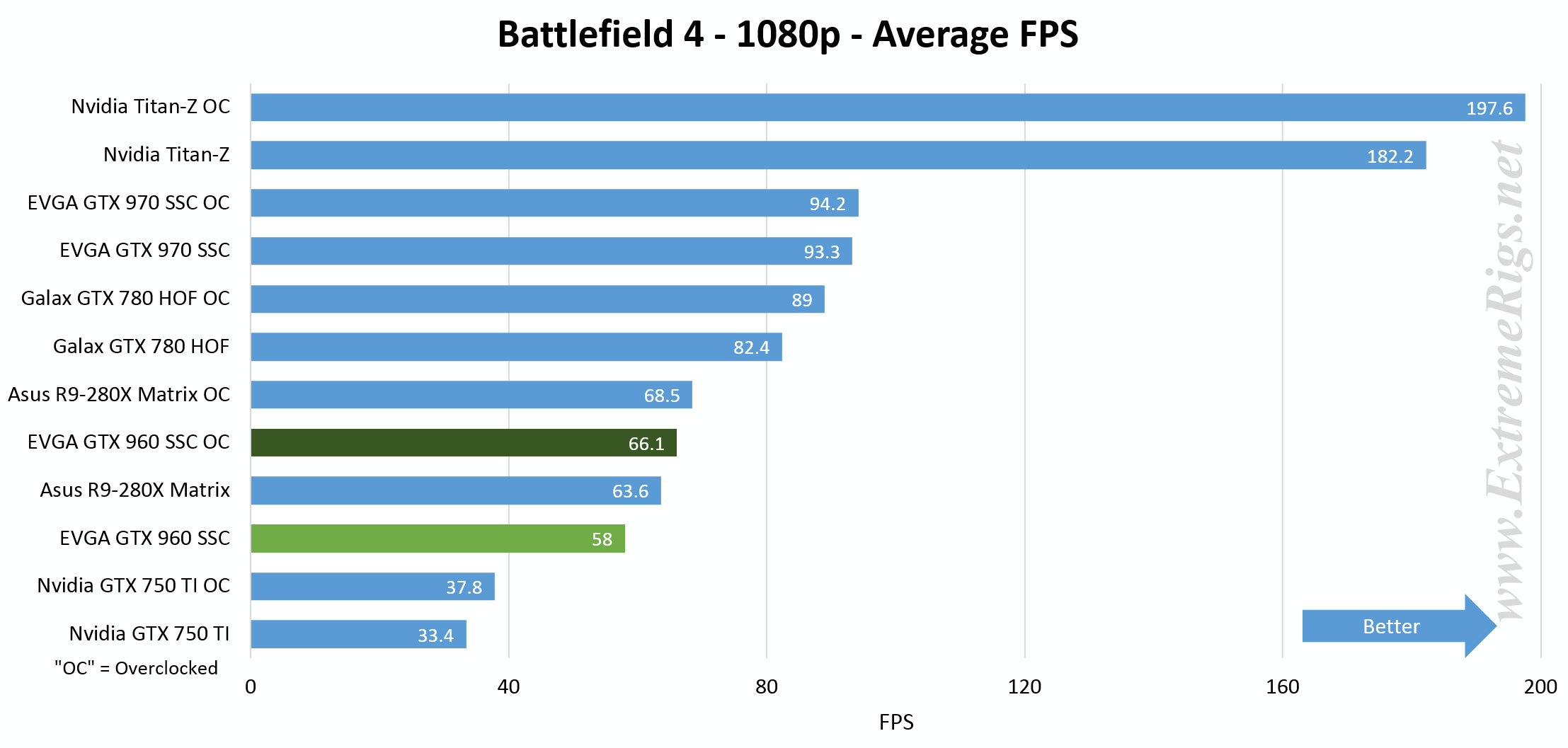
With essentially an averaged 60 FPS with BF4 maxed out, the 960 is really in the sweet spot for this game. Of course if you’re looking to run a higher refresh rate monitor you would need to turn some settings down.
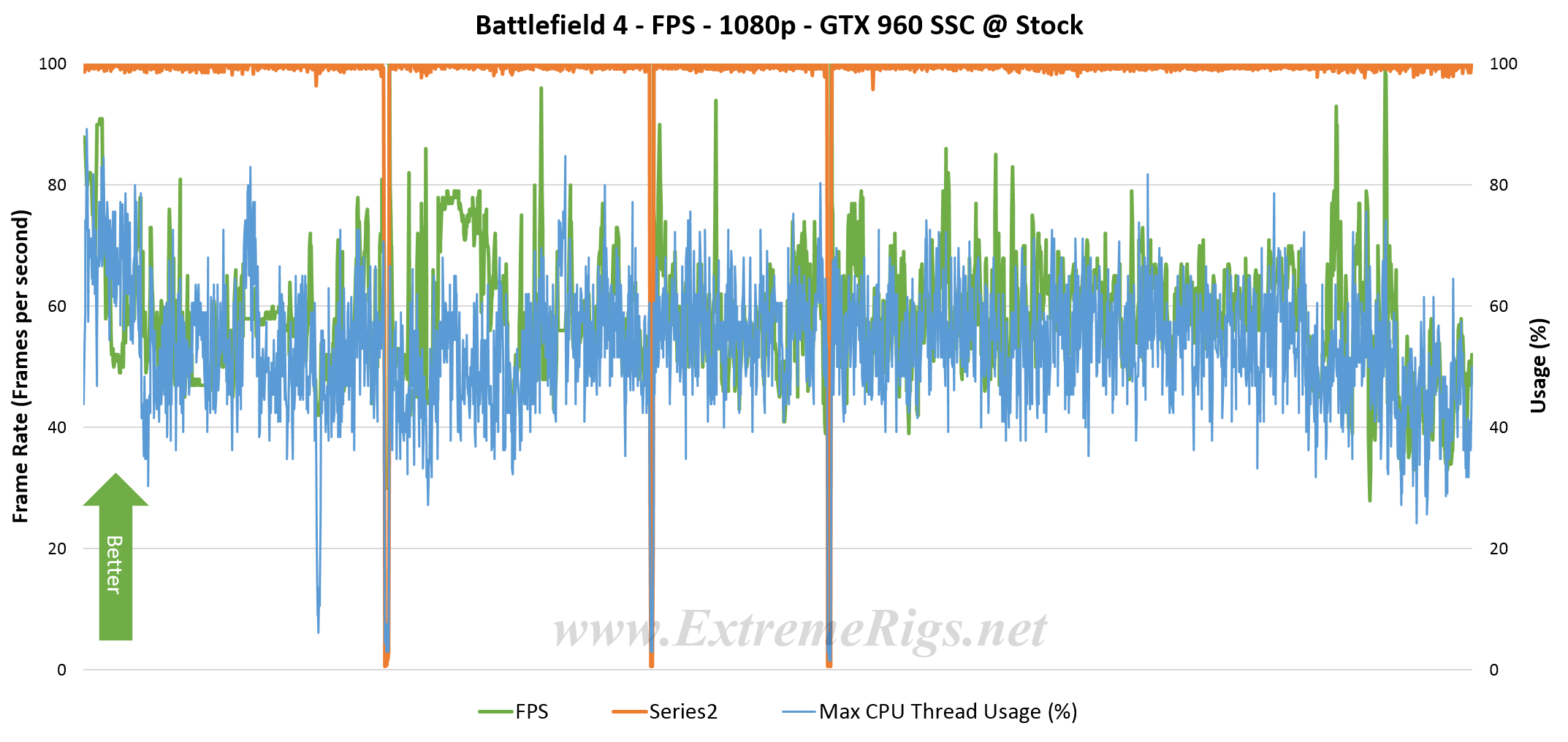 GPU usage is solidly high with the only dropouts being during scene transitions. Frametimes also look nice and clean:
GPU usage is solidly high with the only dropouts being during scene transitions. Frametimes also look nice and clean:
Now let’s look at 4K:
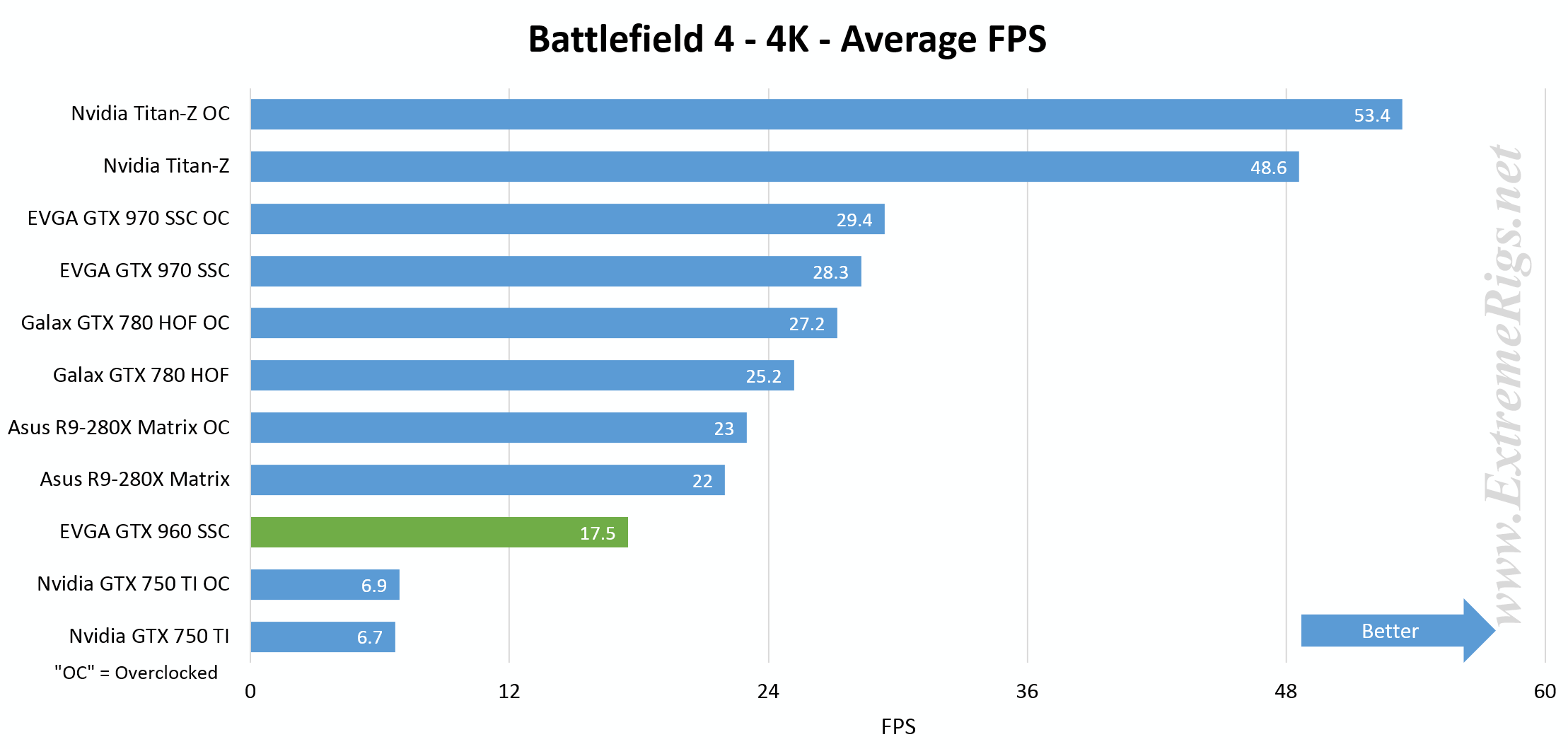
17.5FPS is of course low, but it’s not “OMG No VRAM low”. In checking the logs though we do see that the 960 was essentially maxed out on VRAM, however this doesn’t necessarily mean that it was out of VRAM merely that some cached textures hadn’t been ejected yet. Bear in mind that at 4K we were still maxing the settings and so with the settings turned down the 960 might even be “playable” at 4k – very much a surprise!
We want to stress that these benches were run in campaign mode, your results may vary in multiplayer mode. It’s tough to announce a game as “playable” since everyone has different opinions on what FPS is required for a game to be playable. We think that 30FPS is the bare minimum you want as an average, with 60FPS being preferable. At 1080p the GTX 960 SSC easily surpasses those minimums and is right on target. At 4K however, that number is cut down by more than a third and hovers below the magic 30 FPS line. While we found that we were able to play at 4K resolution and could progress through the game without many issues, we knew it’d be gameover if we tried to play online in mulitplayer matches. We’re pretty confident in assuming that most Battlefield 4 owners bought it for the online experience compared to just the campaign, that being said we therefore recommend turning down the settings a bit and perhaps not venturing into 4K with this GPU.
Bioshock Infinite
Bioshock Infinite
BioShock Infinite is a first-person shooter video game developed by Irrational Games and published by 2K Games. It was released worldwide for the Microsoft Windows, PlayStation 3, and Xbox 360 platforms on March 26, 2013. Set in 1912, the game has the protagonist, former Pinkerton agent Booker DeWitt, sent to the floating air city of Columbia to find a young woman, Elizabeth, who has been held captive there for most of her life. Though Booker rescues Elizabeth, the two become involved with the city’s warring factions: the nativist and elite Founders that rule Columbia and strive to keep its privileges for White Americans, and the Vox Populi, underground rebels representing the underclass of the city. Wikipedia
For Bioshock Infinite we used the benchmarking tool Adrenaline Action which allows us to select all of the quality settings and resolution and run a standardized benchmark that’s ensured to be consistent across all runs.
- Ultra Quality
- FXAA – On
- Texture Detail – Ultra
- Texture Filtering – 16x Aniso
- Dynamic Shadows – Ultra
- Postprocessing – Normal
- Light Shafts – On
- Ambient Occlusion – Ultra
- Level of Detail – Ultra
Despite Bioshock Infinite looking absolutely beautiful when maxed out, the game wasn’t very intensive on the hardware – notice that the scale goes up to 300FPS here.
Despite all of this high frame rates we are still not CPU limited. Frametimes also look very good though it should be noted that the frametimes are nowhere close to what the FPS was measuring: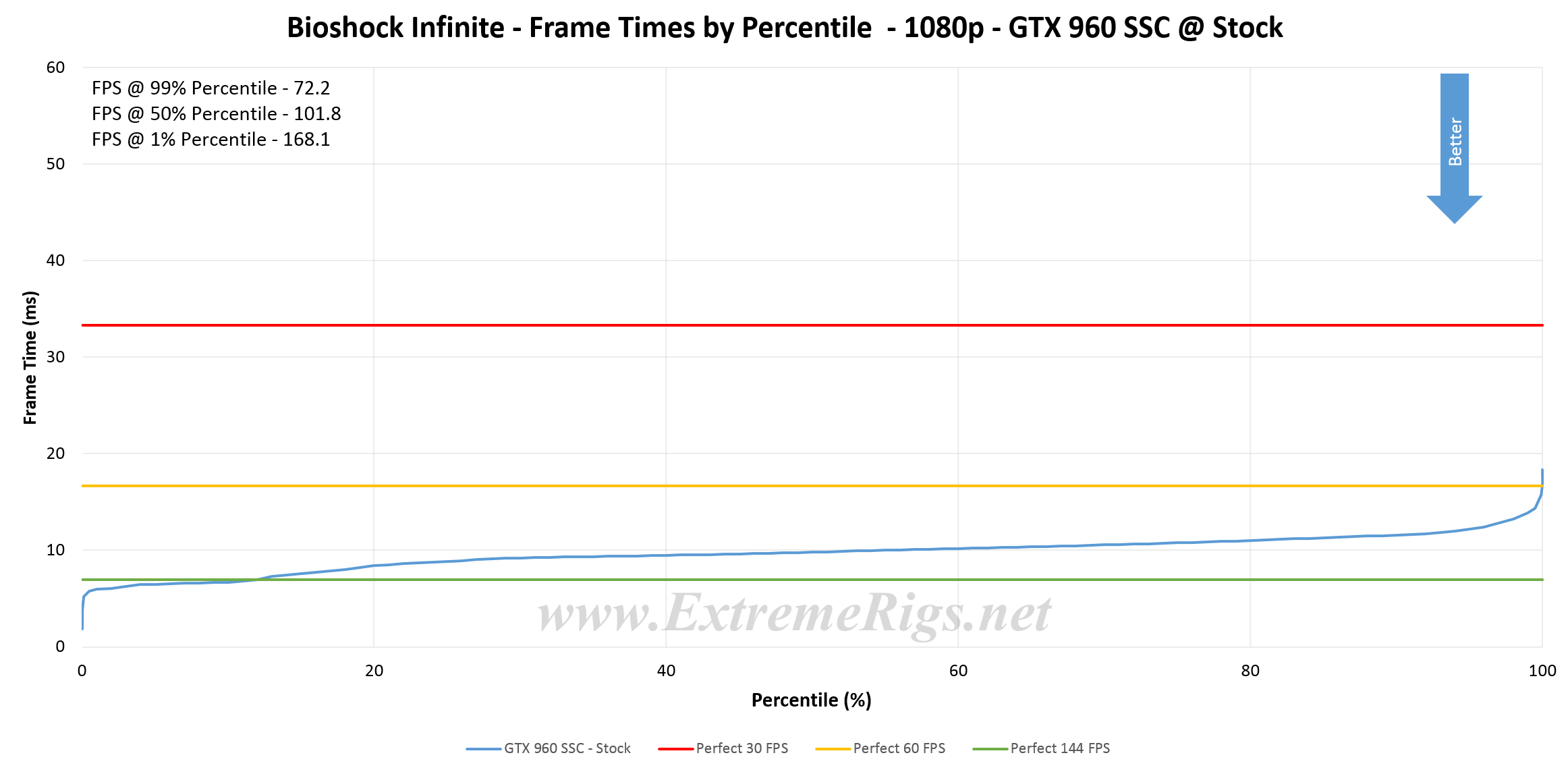
Clearly this is a game that the 960 can handle at 1080p. How about 4k?
Well this result is certainly a surprise – the 960 can handle 4K admirably in Bioshock. The confusing part is why is the 960 beating a 780 and almost tying the 970? The answer most likely is due to new drivers. The 970 and 780 were tested earlier in the year while the 960 used the latest drivers.
Grand Theft Auto V
GTA V
Grand Theft Auto V is an open world, action-adventure video game developed by Rockstar North and published by Rockstar Games. It was released on 17 September 2013 for the PlayStation 3 and Xbox 360, on 18 November 2014 for the PlayStation 4 and Xbox One, and on 14 April 2015 for Microsoft Windows. The game is the first main entry in the Grand Theft Auto series since 2008’s Grand Theft Auto IV. Set within the fictional state of San Andreas (based on Southern California), the single-player story follows three criminals and their efforts to commit heists while under pressure from a government agency. The open world design lets players freely roam San Andreas, which includes open countryside and the fictional city of Los Santos (based on Los Angeles). Wikipedia
- FXAA – Yes
- MSAA – x8
- V-Sync – No
- Population Density/Variety/Distance Scaling – Max
- Texture Quality/Shader Quality/Shadow Quality/Reflection Quality – Very High
- Reflection MSAA – x8
- Water/Particles/Grass Quality – Very High
- Soft Shadows – Soft
- Post FX – Very High
- Motion Blur Strength – Minimum
- DOF Effects – On
- Anisotropic Filtering – x16
- Ambient Occlusion – High
- Tesselation – Very High
- Long Shadows – On
- High Resolution Shadows – On
- High Detail Streaming while flying – On
- Extended Distance Scaling – Maximum
- Extended Shadows Distance – Maximum
- Frame Scaling – Off
As usual we test at 1080p with the settings essentially maxed out. At this level of detail GTA thinks it needs over 4 GB of VRAM. This test should therefore prove difficult for the 960. At this point we had reduced our inventory of NVidia cards and only had AMD cards to test against. Both the 7990 and R9-295×2 that we have right now had difficulty with the benchmark. I.E. they would crash with these settings. This also happend during the Fury X vs Titan X Triple SLI/CFX showdown review and we ended up playing a level instead. However that’s really not ideal for the long term. It’s not obvious why AMD has such a problem with the bench. The 7990 has always been finicky with GTA if you try and use too much VRAM it simply crashes, while Nvidia cards simply lag gracefully. The R9-295×2 should have been in the ballpark for the right amount of VRAM so it had no excuse. This was the same on two different rigs – one with windows 7 and one with windows 8.1. So as we are having problems it’s only fair to report on them, however that does make our plots look quite empty:
As expected the 960 struggles – however VRAM lagging normally causes FPS in the 2-6 range, so 15-25FPS is surprisingly high. If we look at the usage charts we some some strange things:
FPS starts off great, but it seems like at some point VRAM limiting occurs and FPS drops down to lag territory. In addition the GPU usage is surprisingly low. Single GPUs with low FPS are usually very close to 100% all the time. This could indicate that the GPU is throttled by something – perhaps caching VRAM in and out for example. The lag period at the end of the run shows up massively in the frame time charts:
A 99% FPS measurement of 6FPS really bears out the experience you will have trying to max out 1080p. The simple answer of course is just don’t use this much AA. The 960 can handle the game very nicely once you do this with average FPS in the 60-90FPS range instead.
For our 4K test we actually turn AA off. While AA at 4K still makes things look slightly better IMO it just needs too much VRAM for most GPUs to even have a chance of handling.
Again we see both GPUs struggle to handle GTA V at 4k. While settings could be turned down further I think it’s fair to say that 4K is simply too much for a 960.
Hitman Absolution
Hitman Absolution
Hitman: Absolution is a stealth video game developed by IO Interactive and published by Square Enix. The game was released on 20 November 2012 (which is in the 47th week of the year in reference to the protagonist, Agent 47) for Microsoft Windows, PlayStation 3, and Xbox 360. In the aftermath of Hitman: Blood Money, Diana Burnwood, Agent 47’s handler with the International Contract Agency, suddenly goes rogue, carrying out a catastrophic sabotage that includes publicly exposing the Agency. The Agency reforms under Agent Benjamin Travis; Travis assigns 47 to kill Diana and bring Victoria, a teenage girl in her care, to the Agency. Shooting and wounding Diana in her home in Chicago, 47, rather than executing her, comforts the dying Diana, who gives him a letter and asks him to keep Victoria safe from the Agency. Wikipedia
- Ultra
- MSAA – 8X
- Texture Quality -High
- Texture Aniso – 16x
- Shadows – Ultra
- SSAO – High
- Global Illumination – On
- Reflections – On
- FXAA – On
- Level of Detail – Ultra
- Depth of Field – High
- Tessellation – On
- Bloom – Normal
Hitman Absolution is a very graphically intense game, but it’s important to note that during this benchmark MSAA was turned up to 8X which we’ve found has a heavy impact on FPS.
No doubt turning AA down would make this game much more enjoyable to play on a GTX960.
Usage look great and frametimes did too considering the low FPS:
For 1080p you can get away with a single card if you turn down the aliasing. 4K however is another story:
While AA is perhaps unnecessarily on, we don’t believe that turning it off will make the game playable with a 960. Partly it’s a VRAM issue, however with the 970 still struggling at 13 FPS even the 4GB 960 would be unplayable.
Metro Last Light Redux
Metro Last Light Redux
Metro: Last Light is a single-player post-apocalyptic-themed first-person shooter video game with stealth and survival horror elements, developed by Ukrainian studio 4A Games and published by Deep Silver for Microsoft Windows, OS X, Linux, PlayStation 3 and Xbox 360 in May 2013. Just like the original game, Metro: Last Light is played from the perspective of Artyom, the player-character. The story takes place in post-apocalyptic Moscow, mostly inside the metro system, but occasionally missions bring the player above ground. Wikipedia
Both Metro 2033 and Metro Last Light have a built in benchmark utility which we used for both games.
- Quality – Very High
- SSAA – On
- Texture Filtering – AF 16X
- Motion Blur – Normal
- Tesselation – Very High
- V-Sync – Off
- Advanced Physics – On
- 3 Runs – 1 Scene
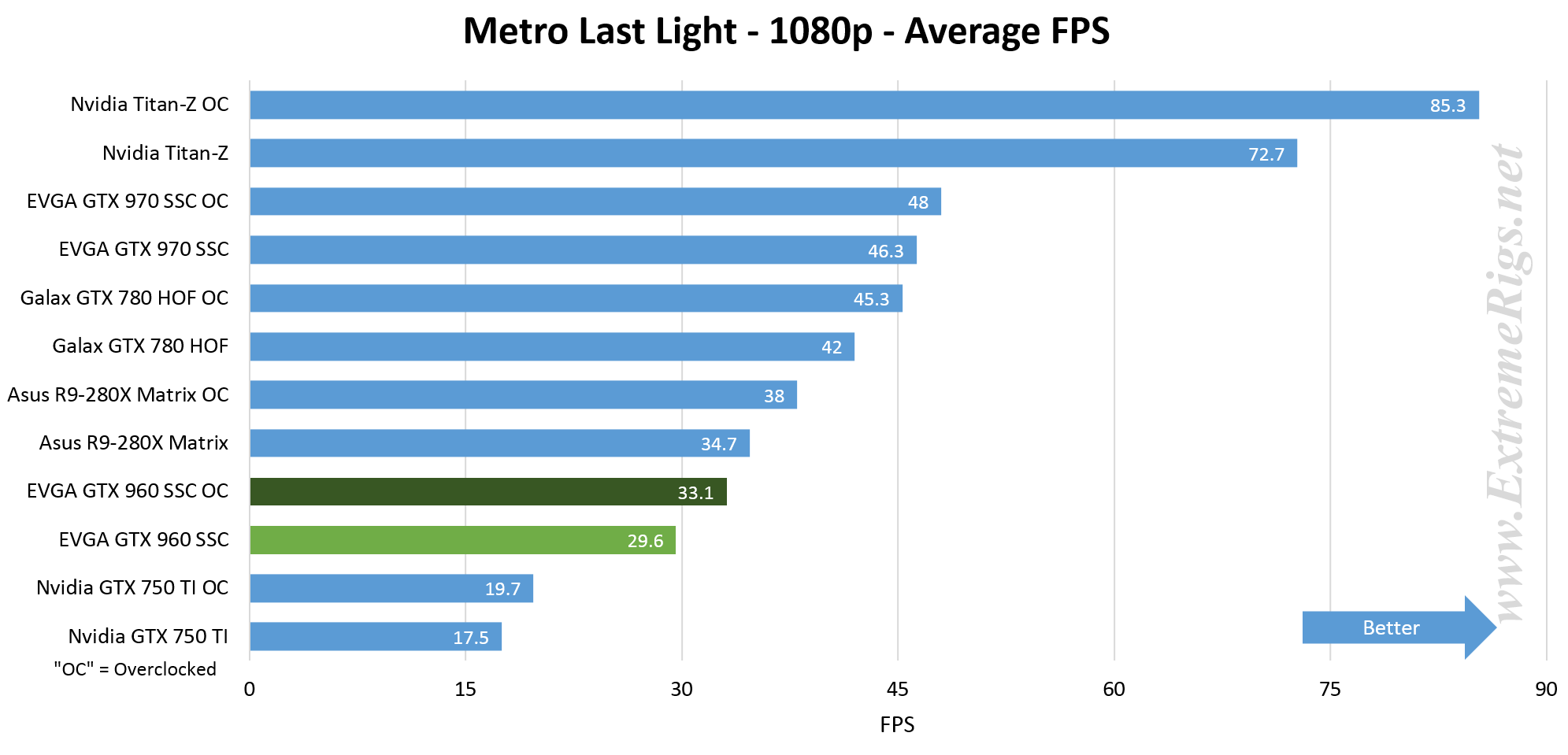 1080P with a maxed out Metro Last Light Redux appears to be very challenging to our array of GPUs. Clearly for a 960 the settings would need to be turned down for it to be playable. Usage however looks good – the two spikes are scene transitions.
1080P with a maxed out Metro Last Light Redux appears to be very challenging to our array of GPUs. Clearly for a 960 the settings would need to be turned down for it to be playable. Usage however looks good – the two spikes are scene transitions.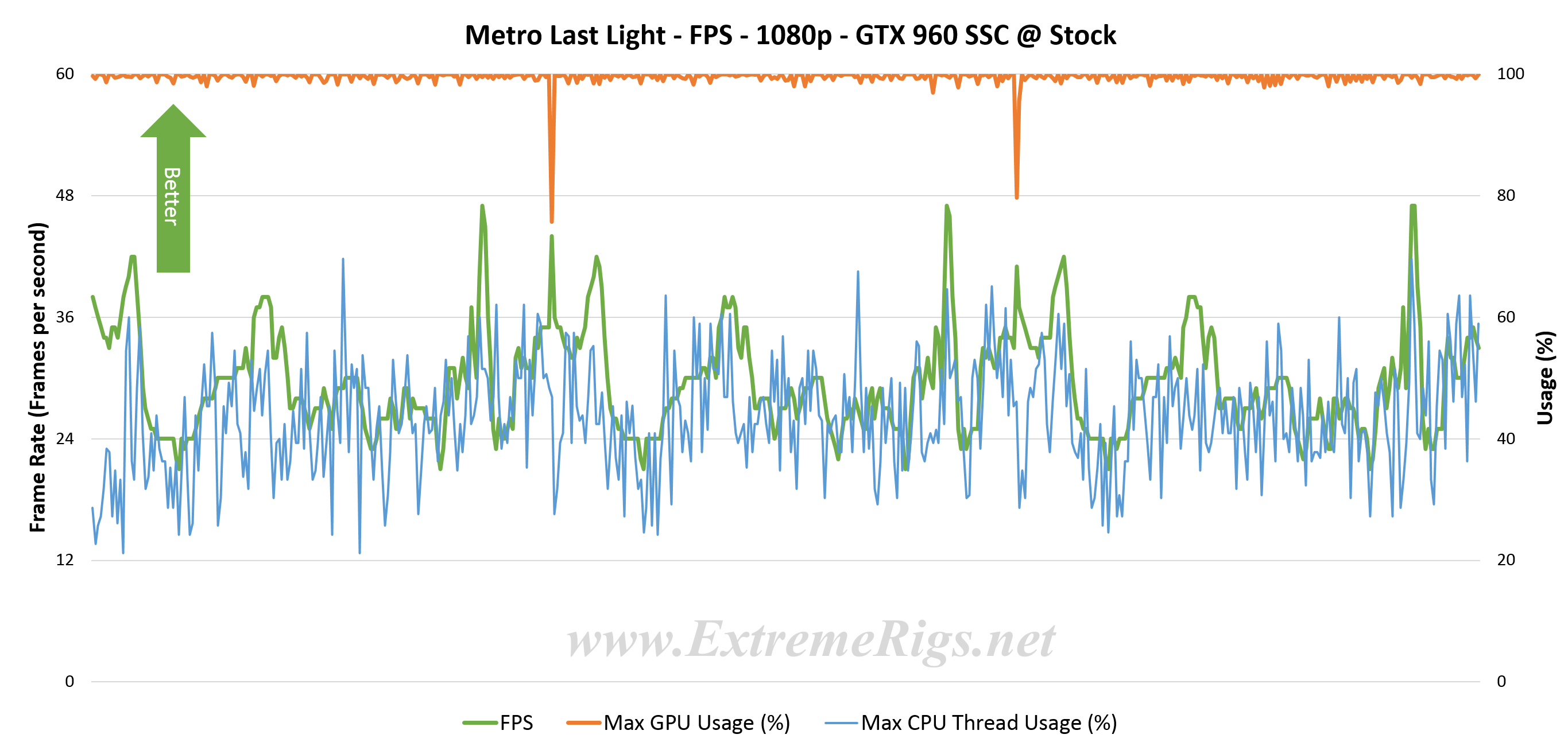 Frametimes are more variable than I’d like, but nothing really out of line with the FPS that we see:
Frametimes are more variable than I’d like, but nothing really out of line with the FPS that we see: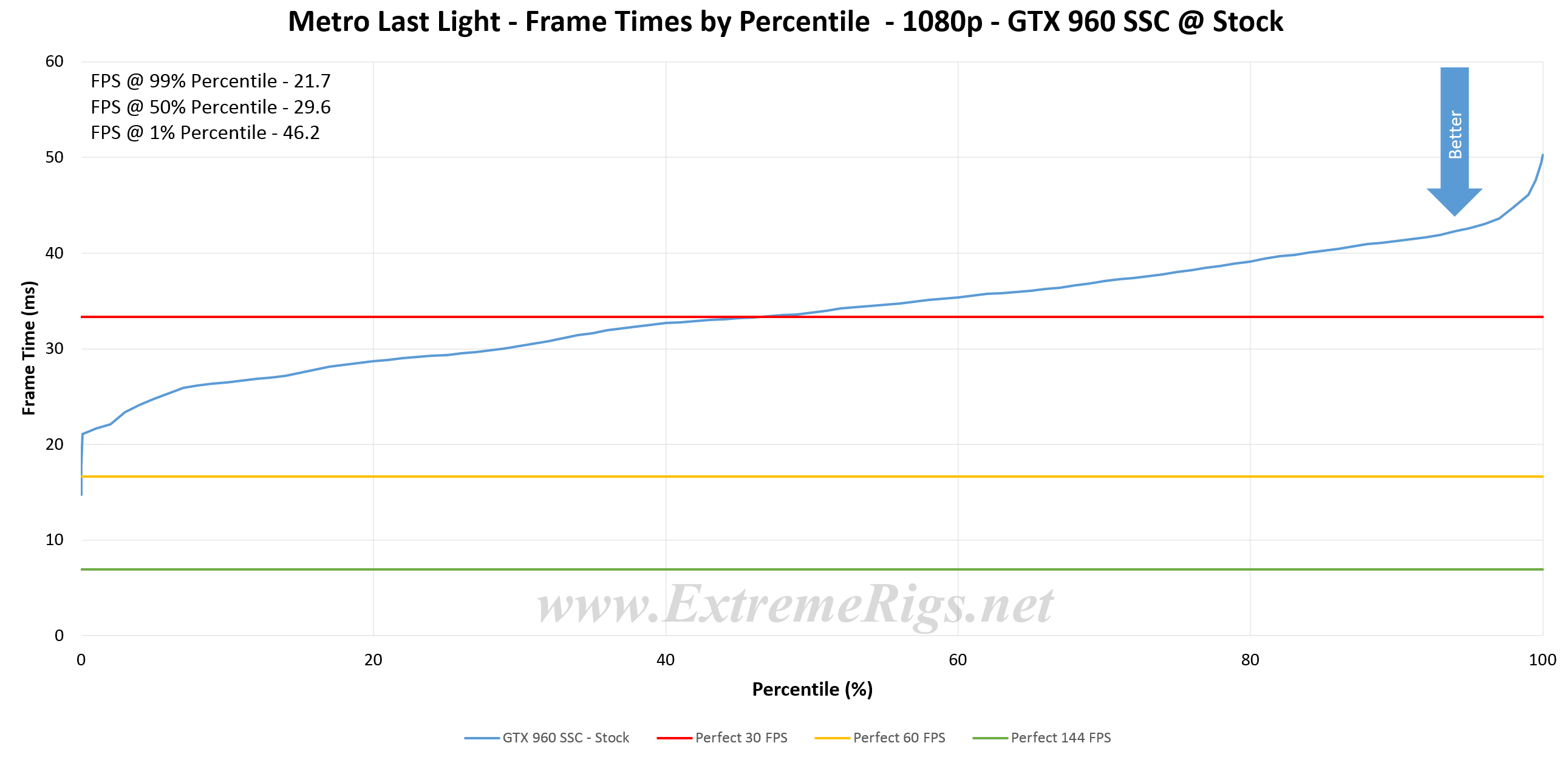
At 4K of course things become deeply unplayable:
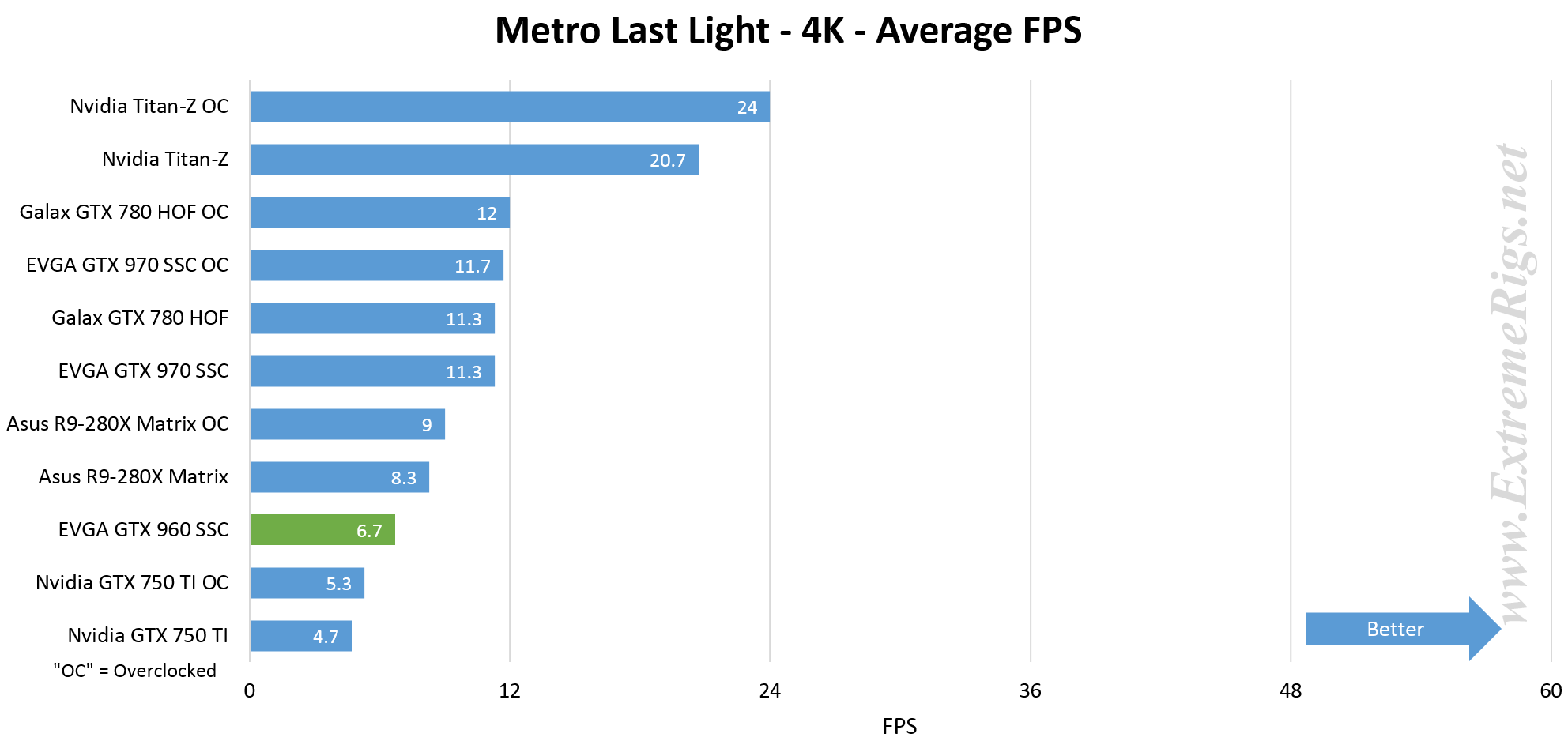 Although VRAM was very close to being maxed we don’t think the GPU was limiting. the 7FPS is simply indicative of an unoptimized game with settings turned up too high.
Although VRAM was very close to being maxed we don’t think the GPU was limiting. the 7FPS is simply indicative of an unoptimized game with settings turned up too high.
Metro 2033
Metro 2033
Metro 2033 is a survival horror first-person shooter video game, based on the novel Metro 2033 by Russian author Dmitry Glukhovsky. Metro 2033 was developed by 4A Games in Ukraine, and was released on Microsoft Windows and Xbox 360 in March 2010. In Metro 2033, the player controls Artyom as he moves through the ruins of post-nuclear-apocalyptic Russia. The player uses guns of both real and fictitious designs to kill mutants and hostile survivors. Most of the game takes place within the Metro system, although Artyom does venture above ground on rare occasions. Wikipedia
Both Metro 2033 and Metro Last Light have a built in benchmark utility which we used for both games.
- Quality – Very High
- DirectX 11
- AA – MSAA 4X
- Texture Filtering – AF 4X
- Advanced Physics – ON
- Tesselation – ON
- Motion Blur – Camera + Objects (DX10+)
- Skin Shading – Sub-scattering
- Bump Mapping – Precise
- Soft Particles – Enabled
- Shadow Resolution – 9.43 Mpix
- Light-Material Interaction – Full
- Geometric Detail – Very High
- Detail Texturing – Enabled
- Ambient Occlusion – Precomputed + SSAO
- Image Post Processing – Full
- Parallax Mapping – Enabled with Occlusion
- Shadow Filtering – High quality
- Analytical AA – Enabled
- Volumetric Texturing – Full Quality / Incl Sun
- 3 Runs – 1 Scene
Again let’s start off with 1080P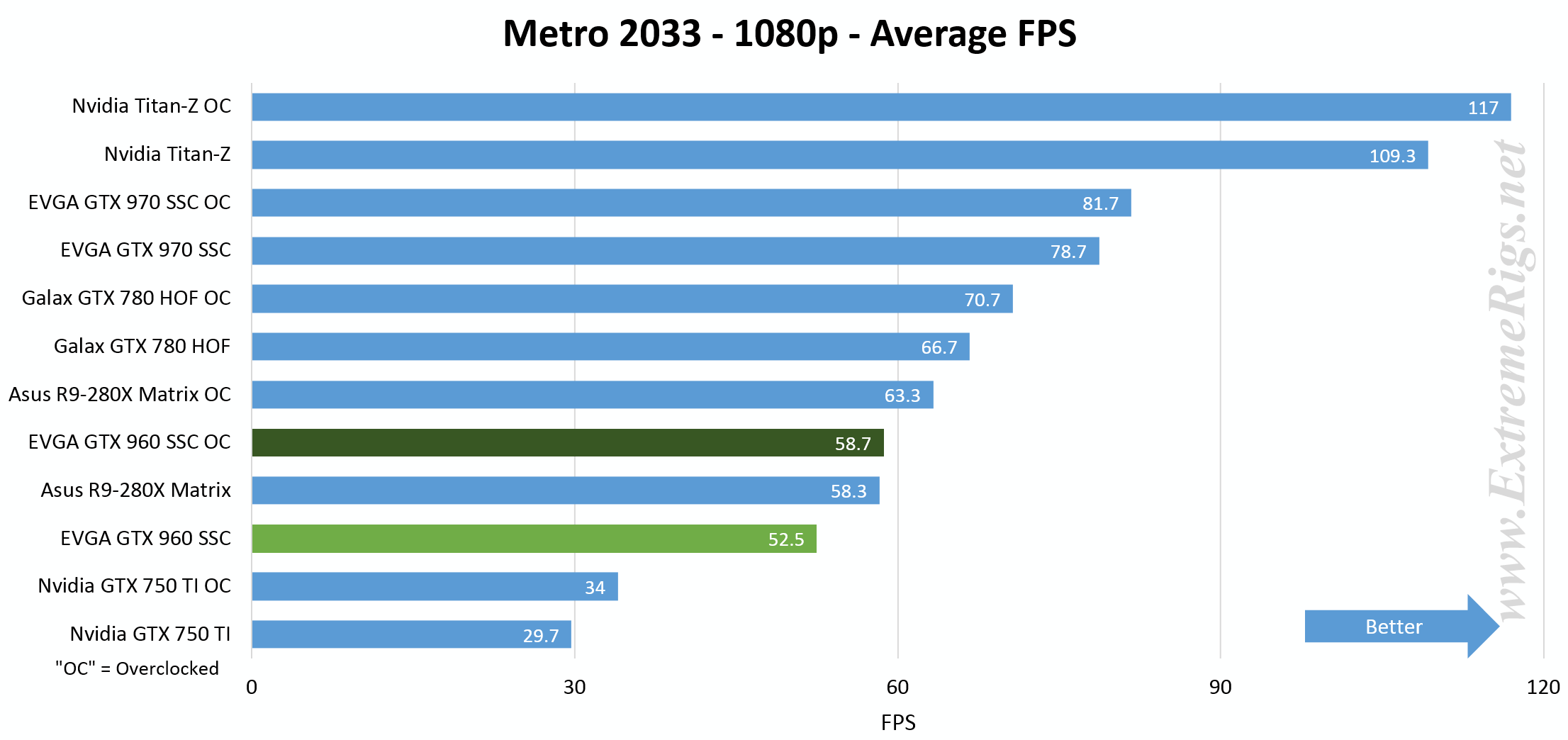
The 960 here gets a much more respectable performance than on Last Light. Usage looks nice and clean with the only dropouts being transitions while the benchmark repeats:
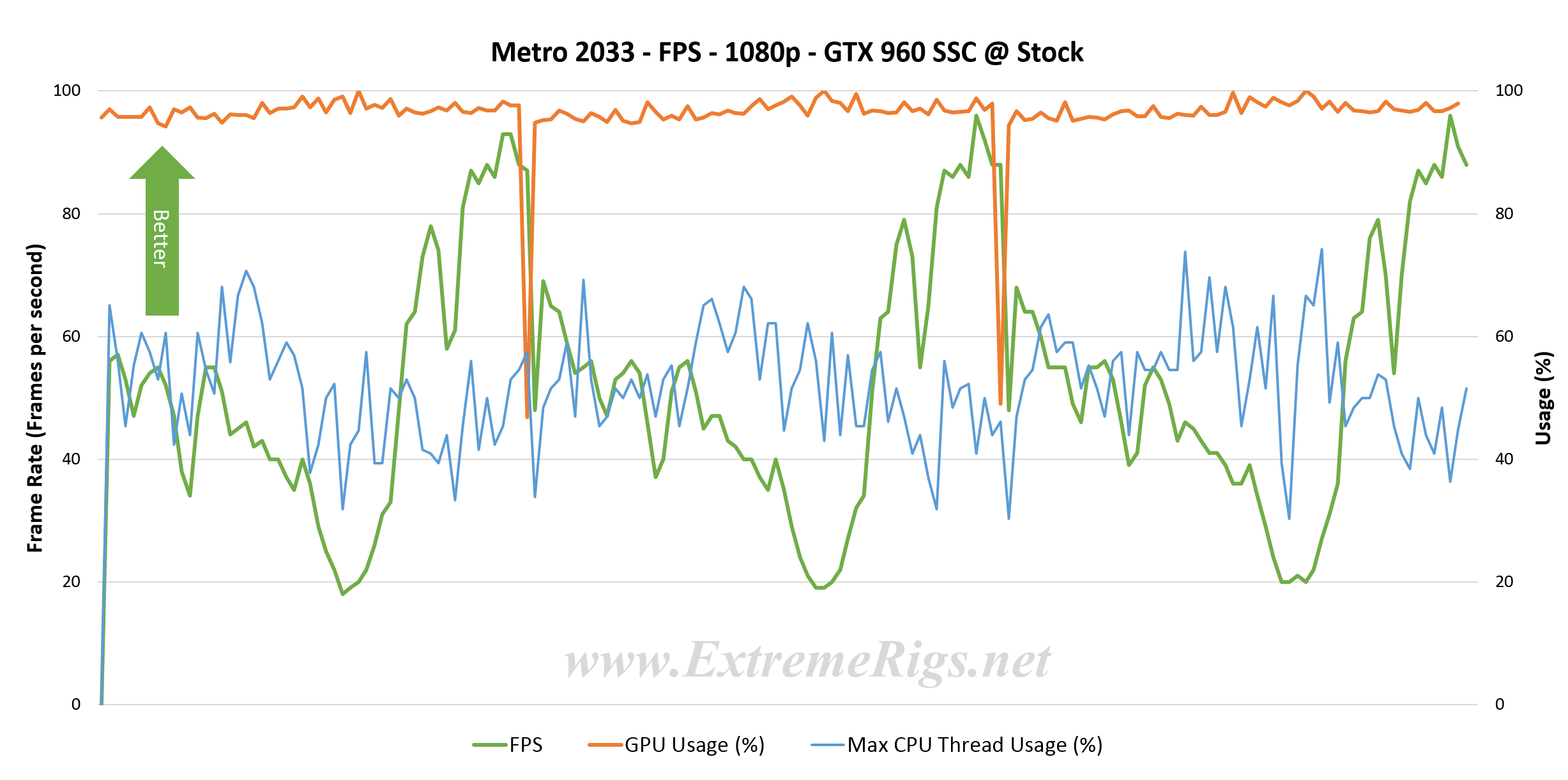 While it looks clean – it should be noticeable that GPU usage isn’t maxed out for some reason. It can also be seen just how variable the frame rate is. Some scenes run at 90FPS while others drop down to 20FPS. This variety can be seen on the frametimes too:
While it looks clean – it should be noticeable that GPU usage isn’t maxed out for some reason. It can also be seen just how variable the frame rate is. Some scenes run at 90FPS while others drop down to 20FPS. This variety can be seen on the frametimes too:
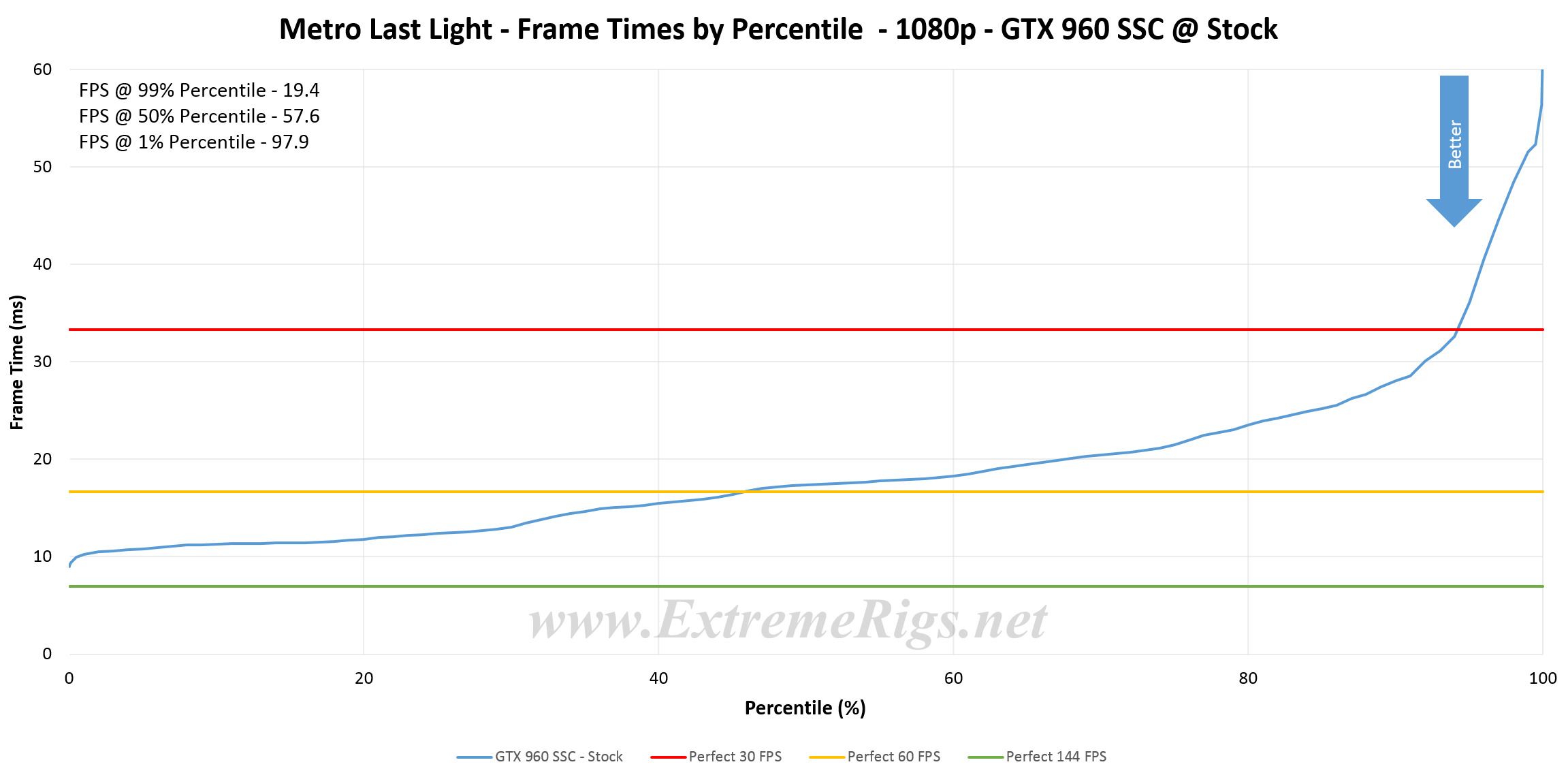 This gives us a 99% percentile of 19FPS. This doesn’t look quite so heartwarming as our average 52FPS does it? Things no doubt will be worse at 4K:
This gives us a 99% percentile of 19FPS. This doesn’t look quite so heartwarming as our average 52FPS does it? Things no doubt will be worse at 4K:
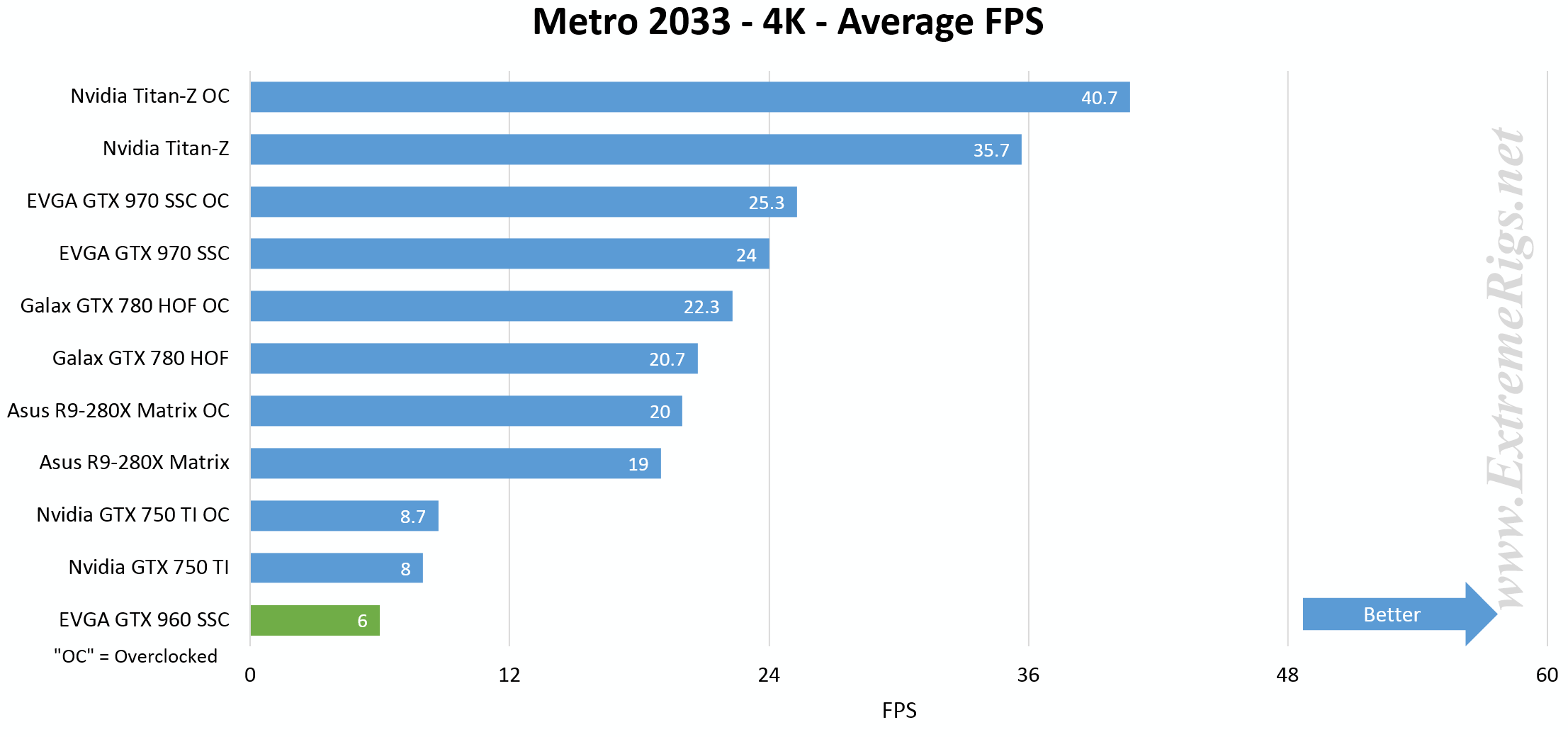 Interestingly again like some of the benchmarks at 4K we see the 750TI technically beating the 960. It doesn’t matter too much because either card is unplayable anyway.
Interestingly again like some of the benchmarks at 4K we see the 750TI technically beating the 960. It doesn’t matter too much because either card is unplayable anyway.
Sleeping Dogs
Sleeping Dogs
Sleeping Dogs is a 2012 open world action-adventure video game developed by United Front Games and Square Enix London. It was published by Square Enix and Bandai Namco Games for Microsoft Windows and the PlayStation 3 and Xbox 360 consoles. Set in contemporary Hong Kong, the single-player story follows Wei Shen, an undercover Hong Kong-American police officer on assignment to infiltrate the Sun On Yee Triad organisation. Wikipedia
- Ultra
- AA – Extreme
- Texture Quality – High Res
- Shadow Quality – High
- Shadow Filter – High
- SSAO – High
- Motion Blur Level – High
- World Density – Extreme
Sleeping Dogs is a game that has traditionally favored AMD. However performance at 1080p is still very acceptable with the GTX 960:
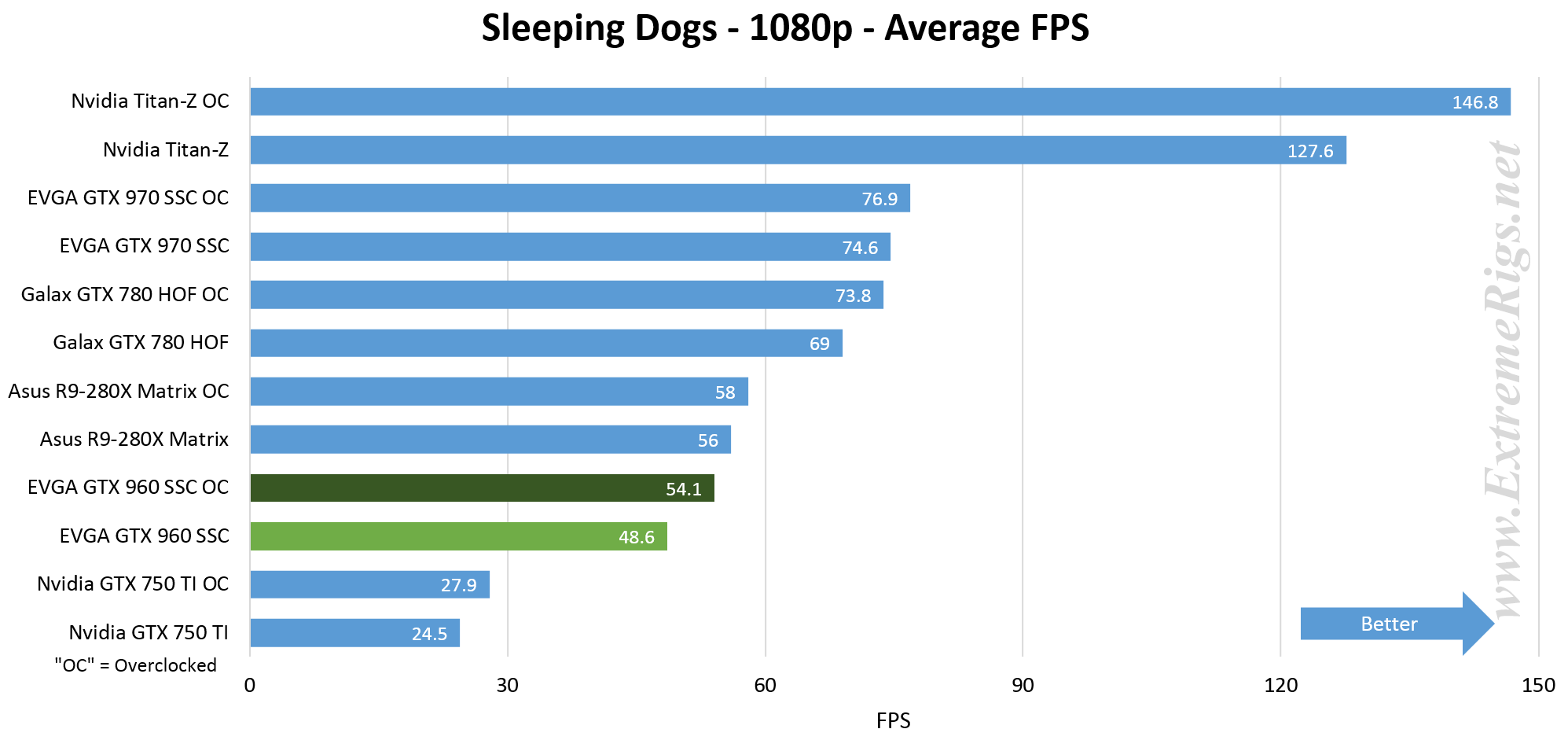 Looking at usage plots we see no issues:
Looking at usage plots we see no issues:
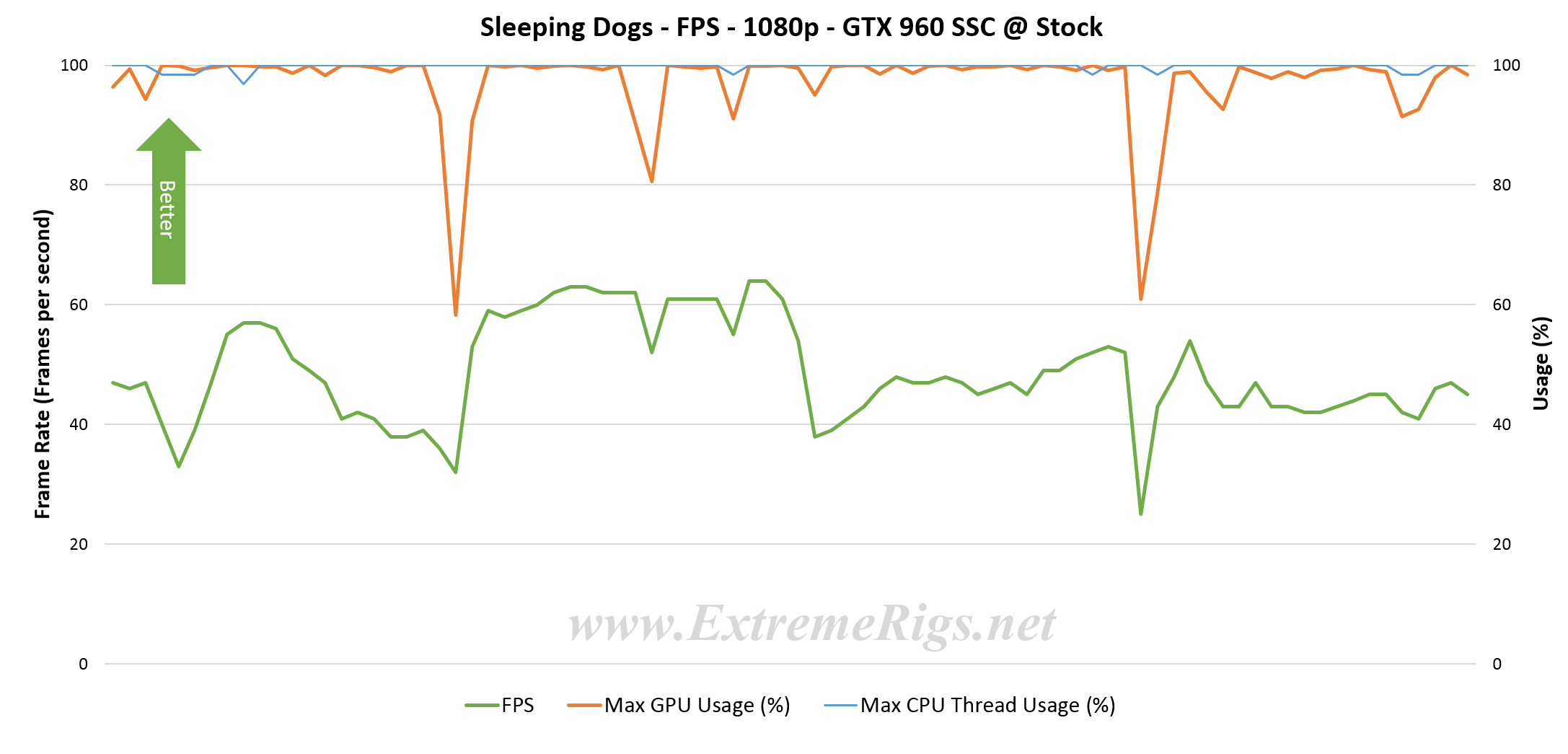 However there are clearly episodes of low FPS that also translate into a low score for the 99 percentile:
However there are clearly episodes of low FPS that also translate into a low score for the 99 percentile: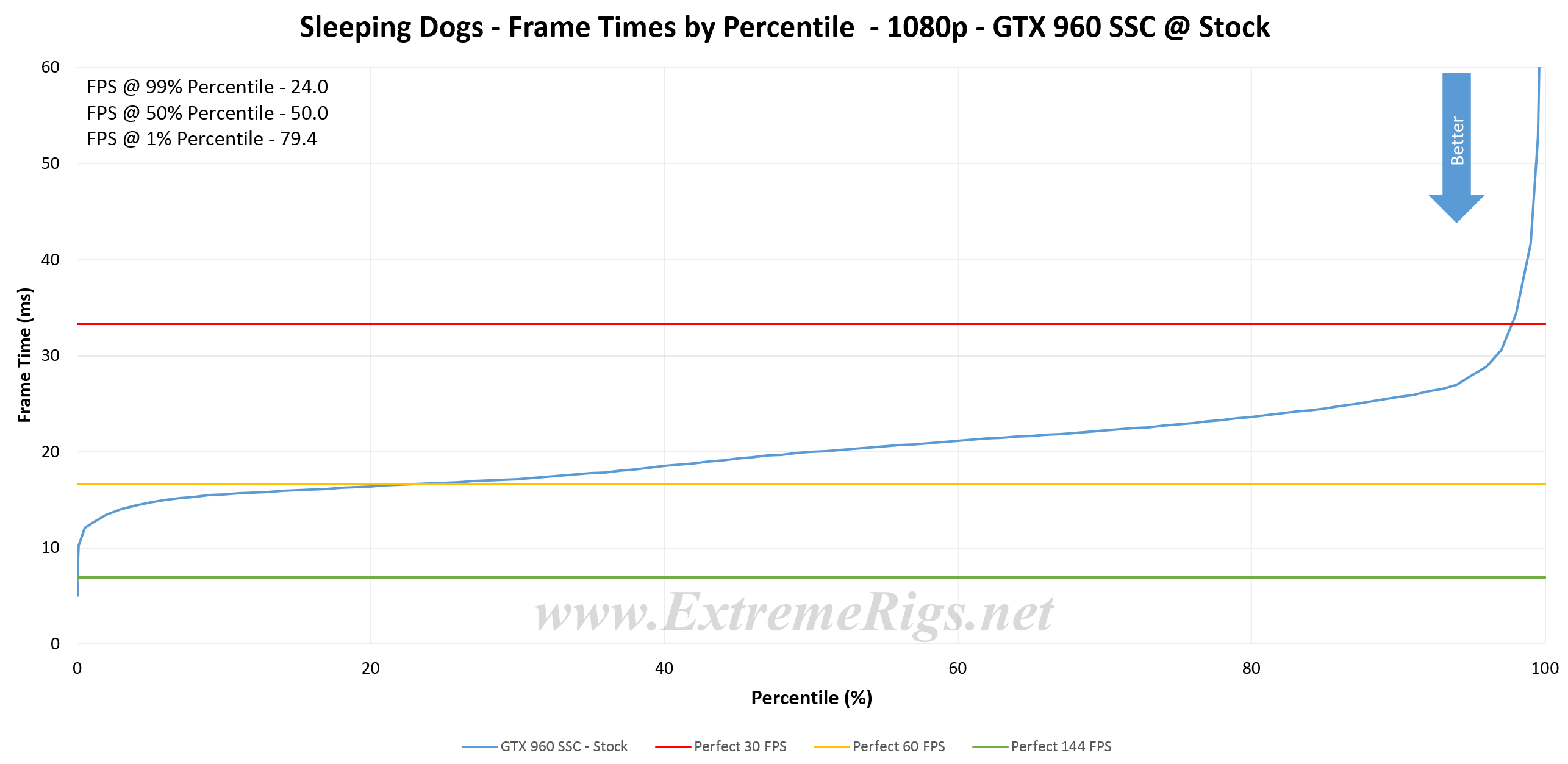 1% of frames hitting worse than 24FPS is a bit disappointing given the average score. At 4K we are not expecting any miracles:
1% of frames hitting worse than 24FPS is a bit disappointing given the average score. At 4K we are not expecting any miracles:
While the GPU is VRAM limiting, the 4GB card would no doubt still remain unplayable, just like the 970 is.
Thief
Thief
Thief is a series of stealth video games in which the player takes the role of Garrett, a master thief in a fantasy/steampunk world resembling a cross between the Late Middle Ages and the Victorian era, with more advanced technologies interspersed. The series consists of Thief: The Dark Project (1998), Thief II: The Metal Age (2000), Thief: Deadly Shadows (2004) and Thief (2014). The main tactic of Thief is to avoid fights and instead sneak around the enemies. Thief is sometimes described as either a “first-person sneaker”, “sneak-em-up” or a “first-person looter” to emphasize this difference. Wikipedia
Thief has a built in benchmark utility which we used.
- Preset – Very High
- Texture Quality – Very High
- Shadow Quality – Very High
- Depth of Field Quality – High
- Texture Filtering Quality – 8x Anisotropic
- SSAA – High
- Automatically Limit Texture Quality – Default
- Screenspace Reflection – On
- Parallax Occlusion Mapping – On
- FXAA – On
- Contact Hardening Shadows – On
- Tesselation – On
- Image Based Reflection – On
1080p wasn’t too challenging for the 960 putting out a respectable 50FPS average when settings are maxed: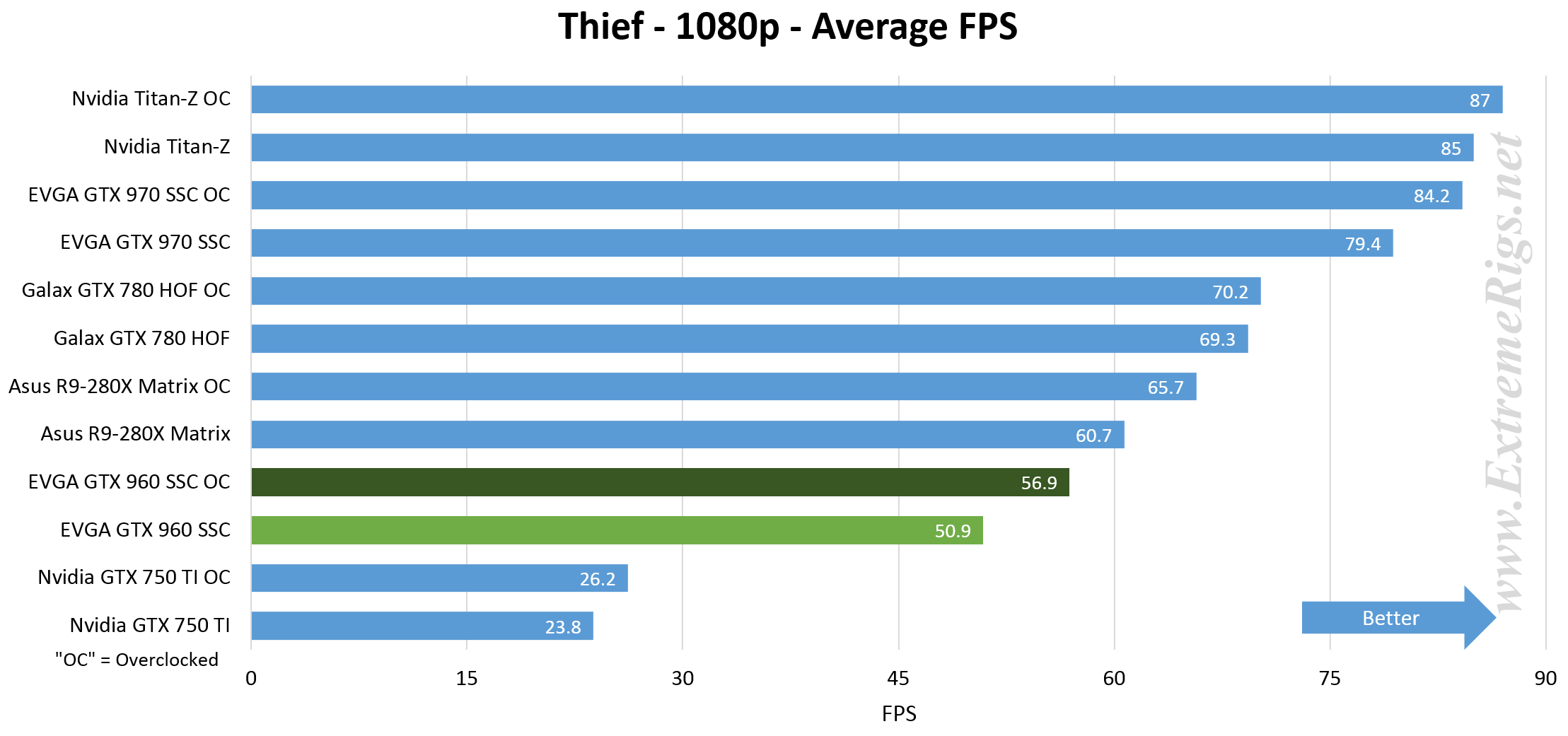 Usage looks very nice and clean:
Usage looks very nice and clean:
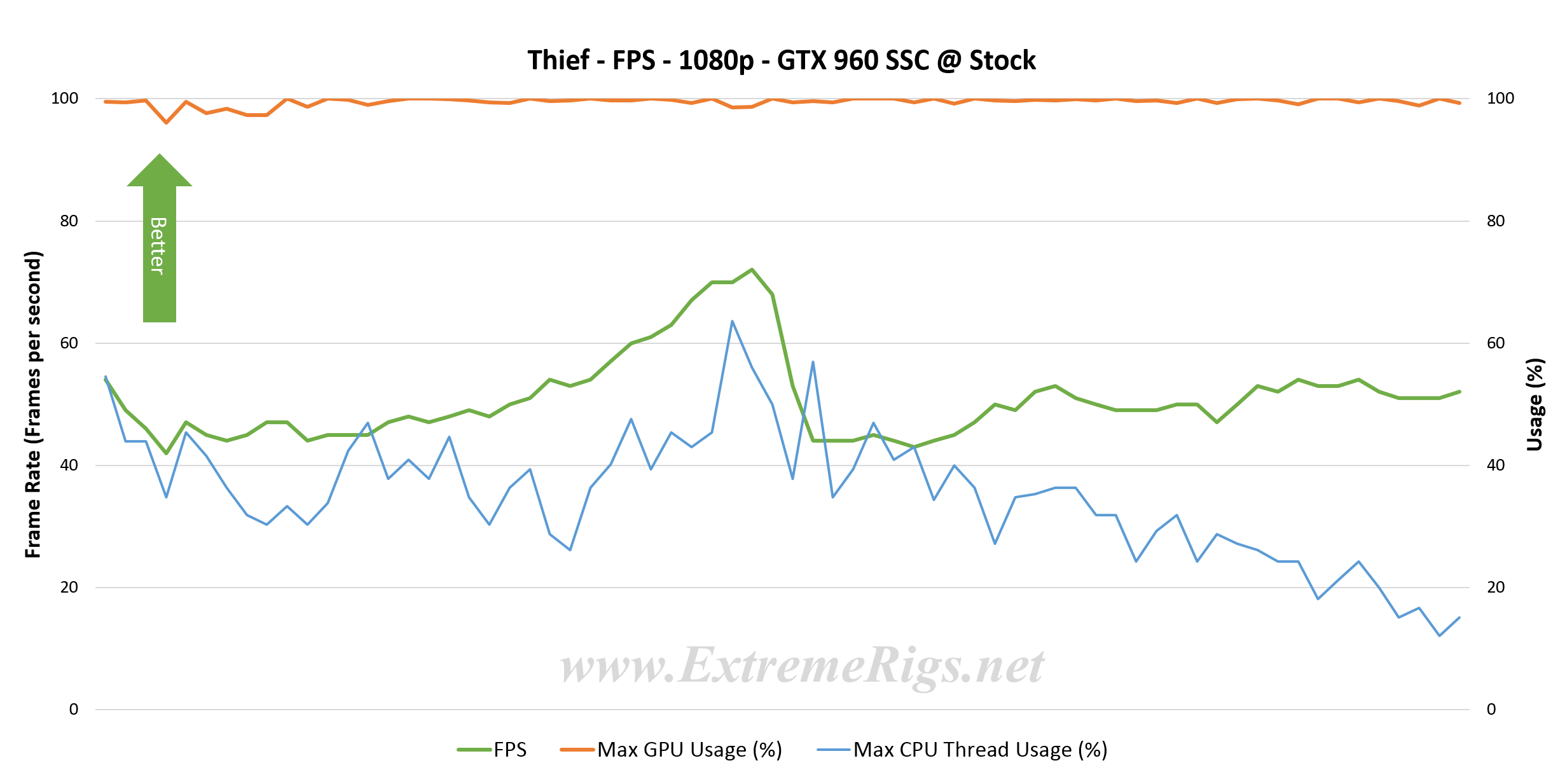
Percentiles are nice and flat at the upper end – just how we like: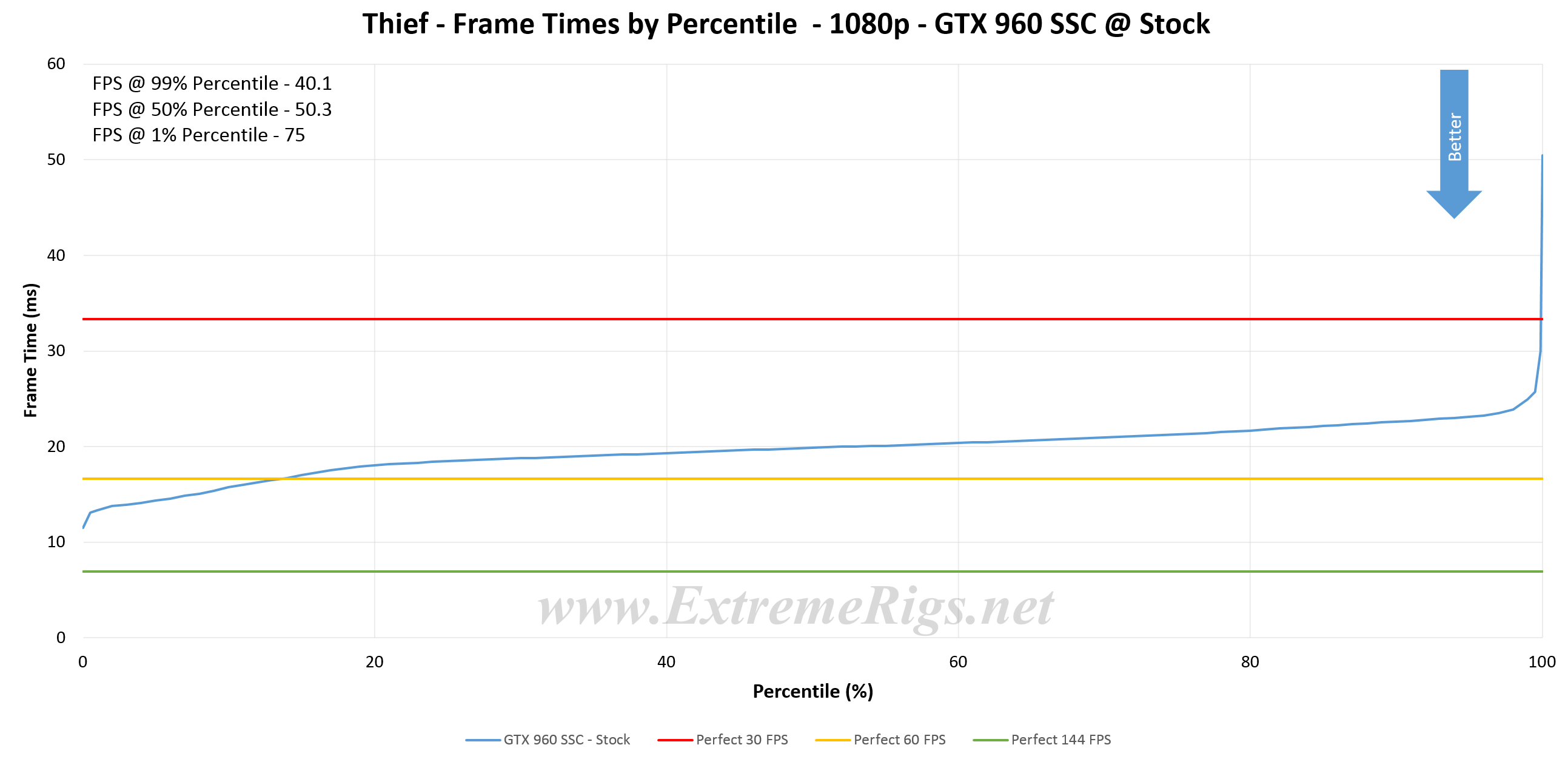 Of course with 50FPS at 1080p we can’t expect much at 4k:
Of course with 50FPS at 1080p we can’t expect much at 4k:
Tomb Raider
Tomb Raider
Tomb Raider is a 2013 action-adventure video game published by Square Enix. Tomb Raider is the fourth title developed by Crystal Dynamics in the Tomb Raider franchise. As the first entry in a new Tomb Raider continuity, the game is a reboot that emphasizes the reconstructed origins of the culturally influential lead character Lara Croft. TombRaider was released on 5 March 2013 for Microsoft Windows, PlayStation 3 and Xbox 360, and on 23 January 2014 for Mac OS X. Tomb Raider is presented in third-person perspective. Players take control of the series lead character Lara Croft. The game uses an interconnected hub-and-spoke model that combines action-adventure, exploration, and survival mechanics.[8] Players can traverse between the camps and across the island using footpaths, improvised or already-available ziplines and climbable tracks. Wikipedia
For Tomb Raider we used the benchmarking tool Adrenaline Action which allows us to select all of the quality settings and resolution and run a standardized benchmark that’s ensured to be consistent across all runs.
- Ultimate
- AA – FXAA
- Texture Quality – Ultra
- Texture Aniso – 16x Aniso
- Hair Quality – TessFX
- Shadow – Normal
- Shadow Resolution – High
- SSAO – Ultra
- Depth of Field – Ultra
- Reflection Quality – High
- LOD Scale – Ultra
- Post Processing – On
- High Precision RT – On
- Tessellation – On
Tomb Raider is a beautiful game that has been quite well optimized for a console port. The 960 can max it out with an almost perfect 60FPS: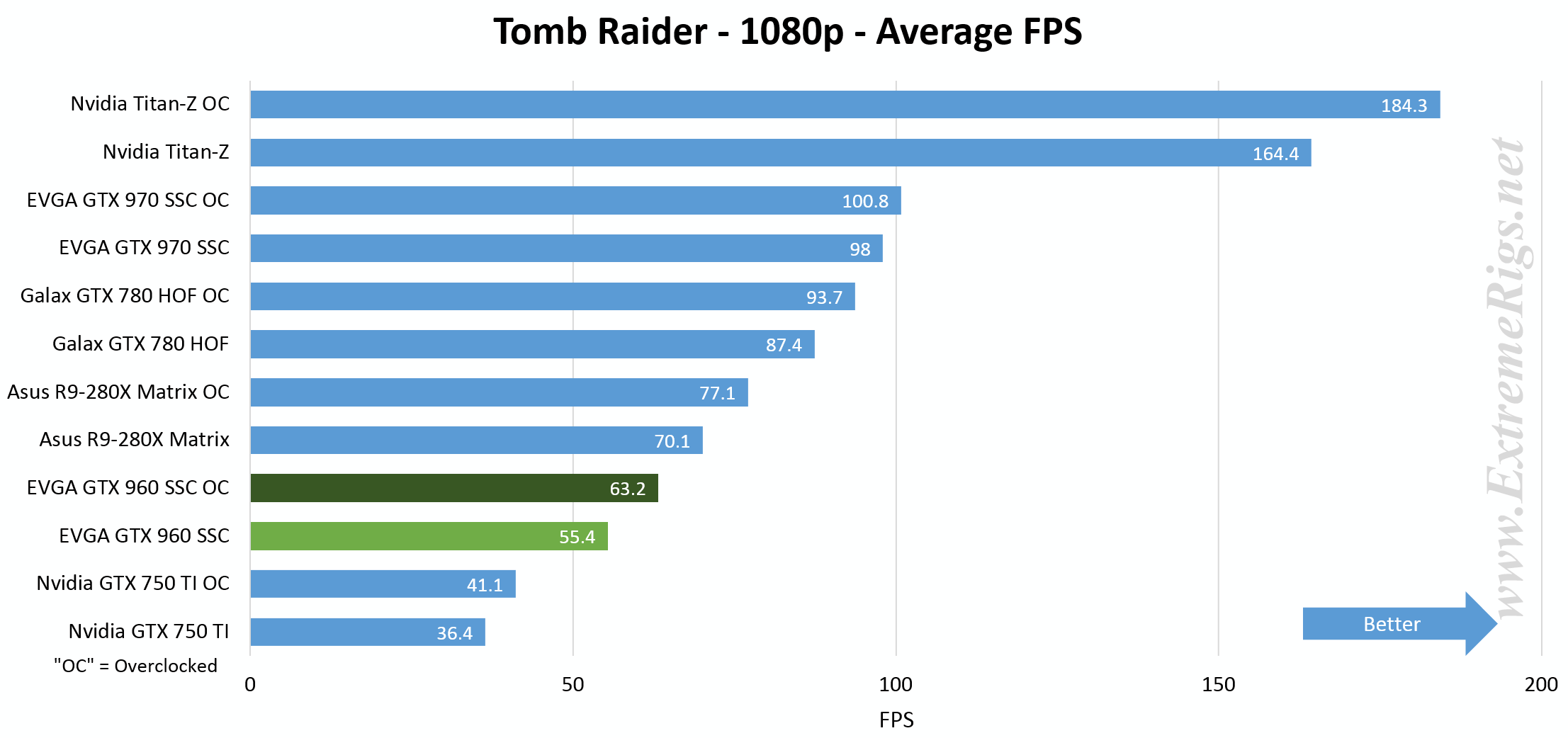 Usage plots look great and we see FPS dropping into the low 40’s:
Usage plots look great and we see FPS dropping into the low 40’s: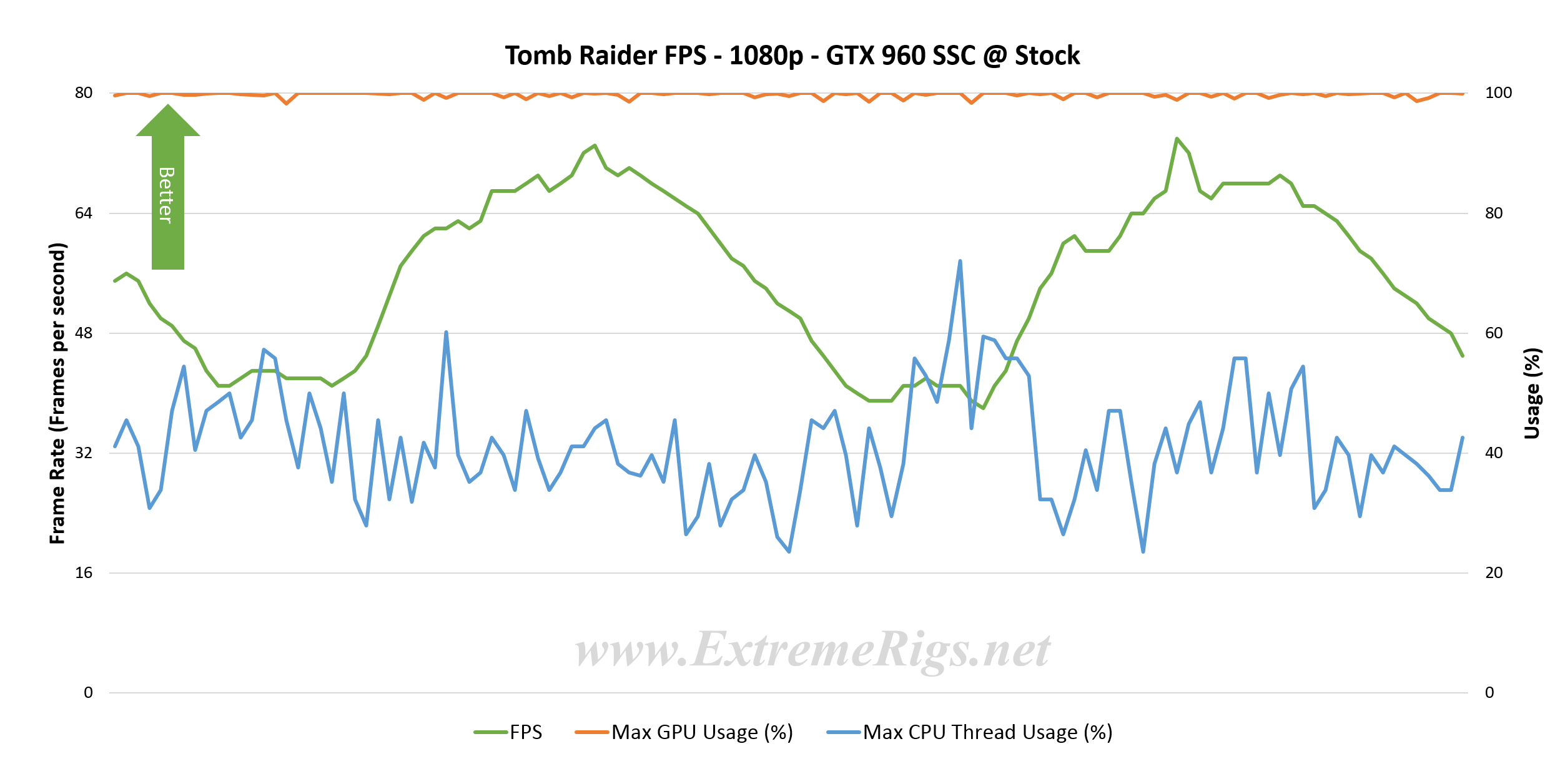 Frametimes show this – but the 99% is still only at 38FPS so performance really isn’t suffering:
Frametimes show this – but the 99% is still only at 38FPS so performance really isn’t suffering:
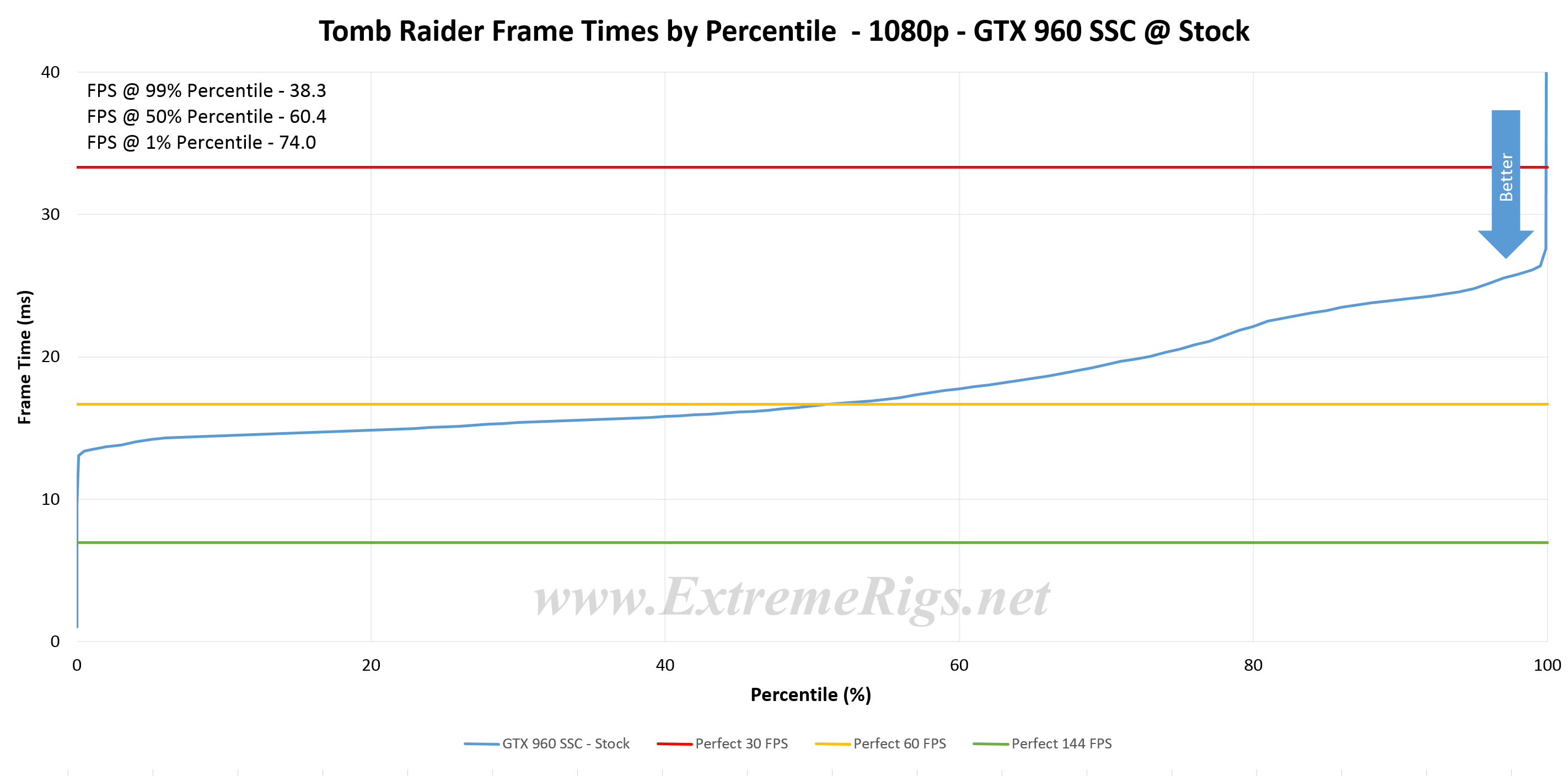 Interestingly performance at 4K seems very poor indeed:
Interestingly performance at 4K seems very poor indeed:
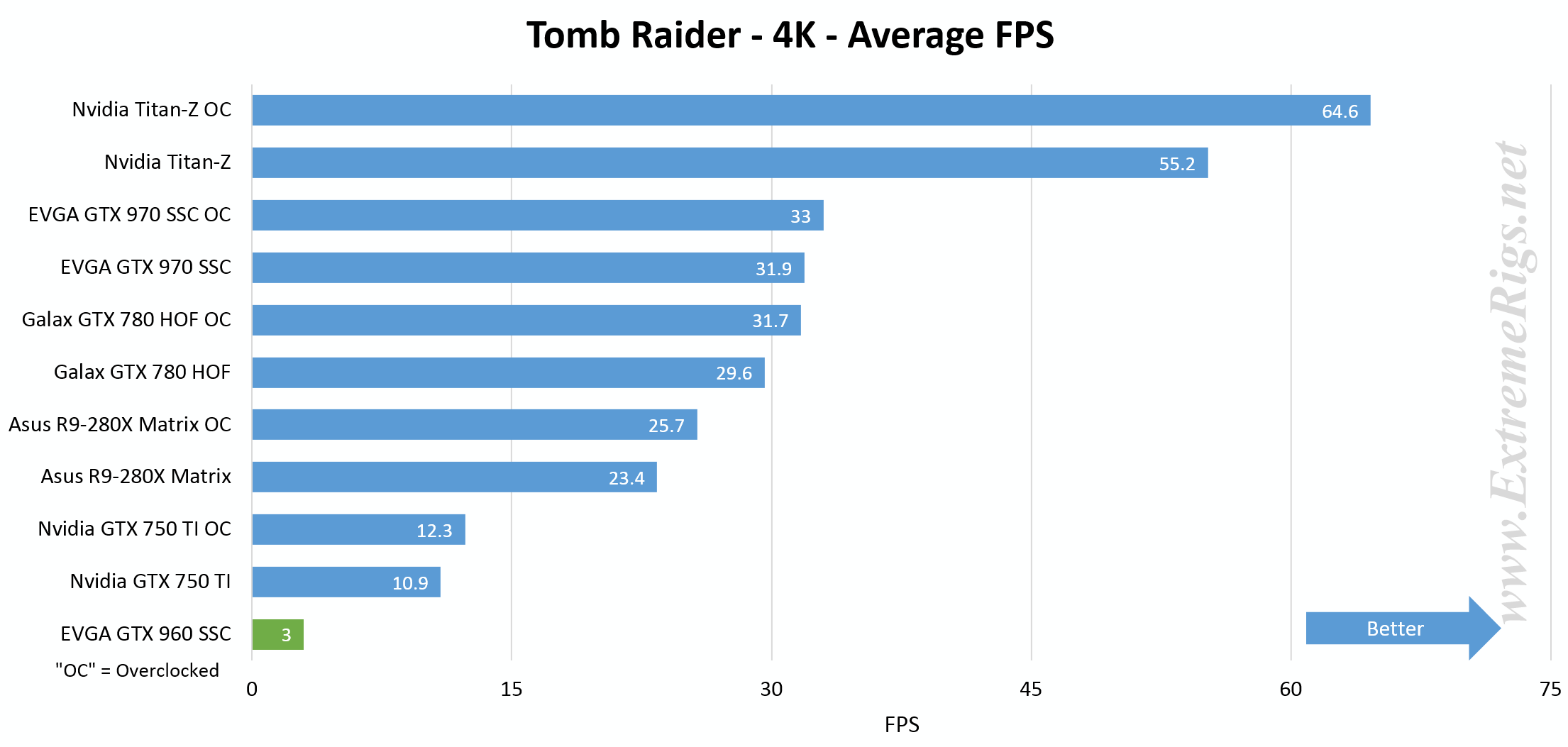 Judging by the logs VRAM isn’t even close to being maxed out so it’s quite strange that the 960 was suffering so badly when it should be in the teens and twenties.
Judging by the logs VRAM isn’t even close to being maxed out so it’s quite strange that the 960 was suffering so badly when it should be in the teens and twenties.
Overclocking, Temps, & Noise
Overclocking, Temps, & Noise
Overclocking
Fortunately overclocking these days is as easy as downloading a couple pieces of software. EVGA even have their own overclocking software called Precision X that is readily available to download for free from their website. The other piece of software that you’ll want to download is a test bench application such as the applications from Futuremark or another benchmark like Valley. Anther good application for stress testing is Folding@Home since it runs the GPU at 100% usage 24/7. Stress testing is important because more often than not a game does not utilize every bit of the GPU. GPU usage varies, as does the clock speed and load temperatures. By doing initial testing with a program like Fire Strike or Folding@home, applications that run the GPU at 100% usage for several hours, you can be sure that the GPU is absolutely stable. It’s generally recommended to run a bench test for twenty-four hours but unless you’re trying to max out your GPU to the very last Mhz, a few hours will be fine. Bear in mind that as every bench stresses the GPU slightly differently that being perfectly stable on one bench doesn’t mean being stable on every game at the same clock. Therefore the simplest method is to run some quick benchs to find where the card quickly breaks and then simply dial it back 20-40 MHz
This particular sample we were able to overclock by about 100MHz over it’s normal boosting clocks to 1500MHz. That may not sound like a lot for a modern GPU, but the EVGA 960 SSC is already overclocked with a boost clock over 1.3GHz. Bear in mind that the stock non boost clock is 1127MHz. This isn’t the flagship GPU, and this is with air cooling and so it’s pretty impressive. It was just a few short years ago that hitting the 1Ghz milestone with water cooling was a big deal, and now we’re able to hit 1.5GHz with the stock air cooler!
The other bonus feature of the SSC is the ability to dial up the power throttle target higher than the lower end cards. In previous generations of GPUs there was often little reason to get anything but a reference card. The reference cards would fit with water blocks and the non-reference cards often only applied an overclock that you could do yourself anyway. These days manfacturers are offering more water blocks for non reference cards. NVidia has also aggresively fought against overclocking by introducing power limits that limit how hard you can push the references cards. The reference GTX 960 for example is limited to 106% of the power limit. EVGA’s SSC on the other hand shows a limit in software of 110% – but thats on top of an already higher power limit (160W). If you also factor in that EVGA uses low power draw fans on the cooler which is included in the total power limit then that means even more room for overclocking. The extra VRM phases will also mean that that higher power will be handled better and more reliably in the long term.
Noise & Temperatures
With Nvidia developing enthusiast level GPUs that are low powered it’s allowed vendors like EVGA to develop after market coolers that have awesome features like the ability to turn the fans off completely when below 60C. For some people reduced noise levels is why they built their own computer. We are here to report that EVGA has developed a cooling solution that is truly impressive. Even on our test bench that did not have any additional air flow on the GPU, the fans still were off more than they were on. The biggest revelation for us was when we realized how truly silent the ACX cooler is even when under 100% load for over 12 hours. We couldn’t hear the fans over the CPU fans and pumps on a water cooling setup. The need to watercool a GPU then is vastly diminished when it is already effectively silent and heavily overclocked. Even overclocked the stock fan profile kept the card at a modest 72C and the fans spinning at 1100-1200RPM.
Conclusion
Conclusion
Performance
Obviously the GTX960 is aimed at 1080p gaming. If we focus on 1080p it was really able to max out 6/9 games acceptably. The remaining three would need a few settings turned down to be acceptably playable.
At 4K of course the card really struggles and can only really play the easiest of our games.
2GB of memory is really about perfect for this card for today’s games at 1080p. The 4GB version would help at higher resolutions for the card not to lag due to VRAM – but whenever this is the case the card no longer has enough compute power left to give a good enough experience anyway. The reason to choose a 4GB 960 is to be future proof or to get better scores on benchmarks or if you are going to run SLI so that you can run higher resolutions at good frame rates. The 4GB version also isn’t that much more if you want to stretch for it.
So is this the best choice you can make with your wallet? The GTX 970 gives a lot more performance, but it also costs a good bit more. Our 960 SSC costs $210, but the 970 SSC costs $350 which is 66% more. Meanwhile the new GTX950 is only a few bucks less but won’t be as fast. This is clearly priced well in terms of bang for the buck for Nvidia. However that comparison is just for Nvidia. The real competition here is from AMD. In our benchmarks we’ve also compared the R9-280X. The 280X can be had at newegg for as low as $225 right now. The 280x also delivered 25% more average FPS than the GTX960 did over all the games. So if you’re willing to leave team green there are alternatives – albeit without this low power efficiency and the quietness that brings and also without all the display port outputs.
The performance numbers weren’t at the playable level for 3840×2160, but no single GPU card can play all those games at the UHD resolution with perfectly playable FPS anyways. Plus if you can afford a 4K monitor the chances are that you’re also looking to spend more on your GPU!
Summary
If this were a review of a reference GTX 960 we would give it a silver award simply because the 280X provides more performance per dollar. However we are reviewing this GPU as a special version of the 960. In terms of what EVGA have done with the 960 for the money then it’s really really good. The GTX 960 SSC manages to be a complete silent and sleek solution simultaneously. It performs very well at 1080p and it’s not overly flashy or colorful. The high power limits enabled a great overclock while the silence of the ACX2.0+ cooler was truly impressive. While it can’t keep up with AMD’s similarly priced R9-280X it brings other benefits to the table including improved noise, heat and a better selection of output ports.
We’d like to thank EVGA for sending us the GeForce GTX 960 SSC ACX 2.0+. They managed to take the already good reference design GTX 960 to the next level for a very small premium.







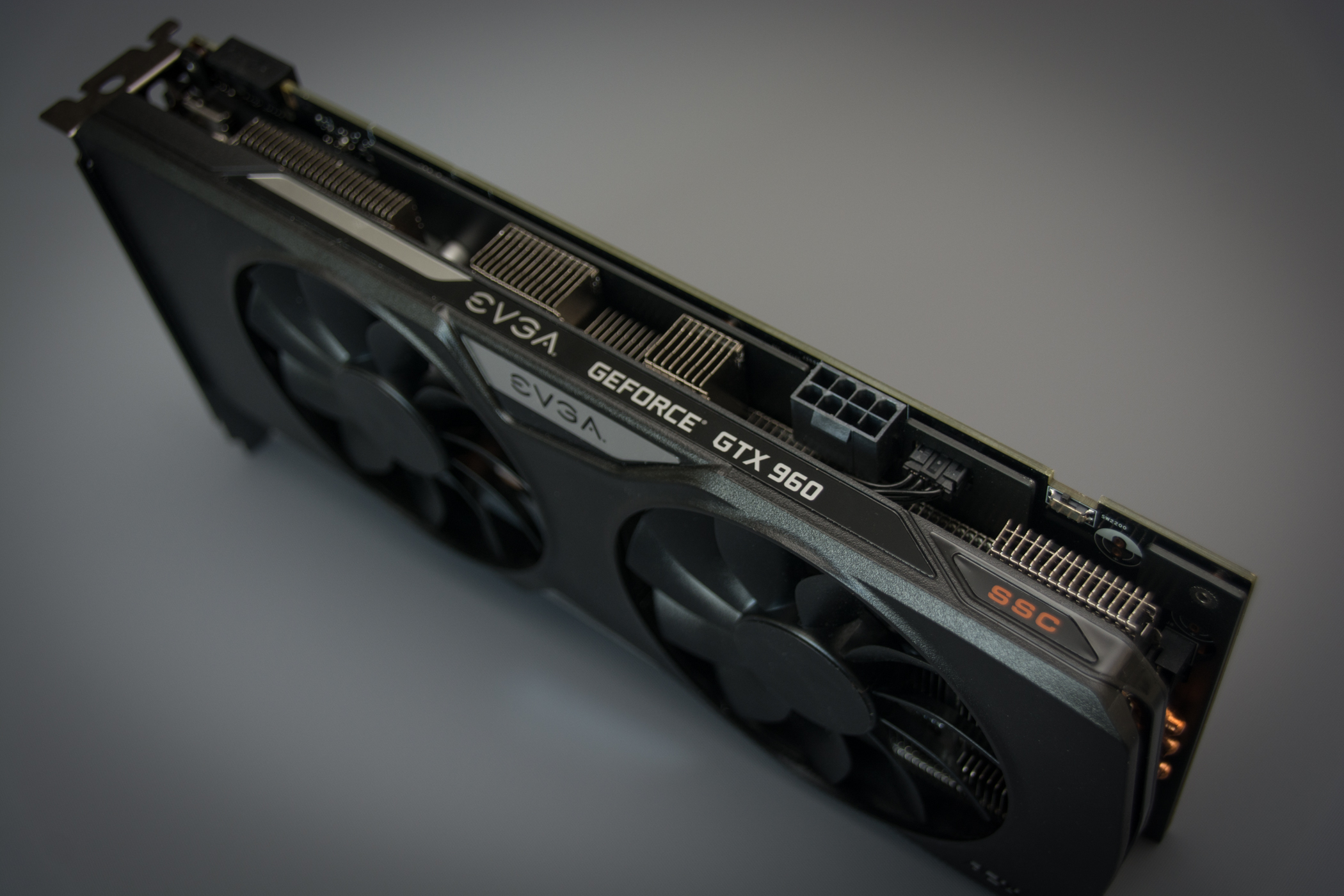
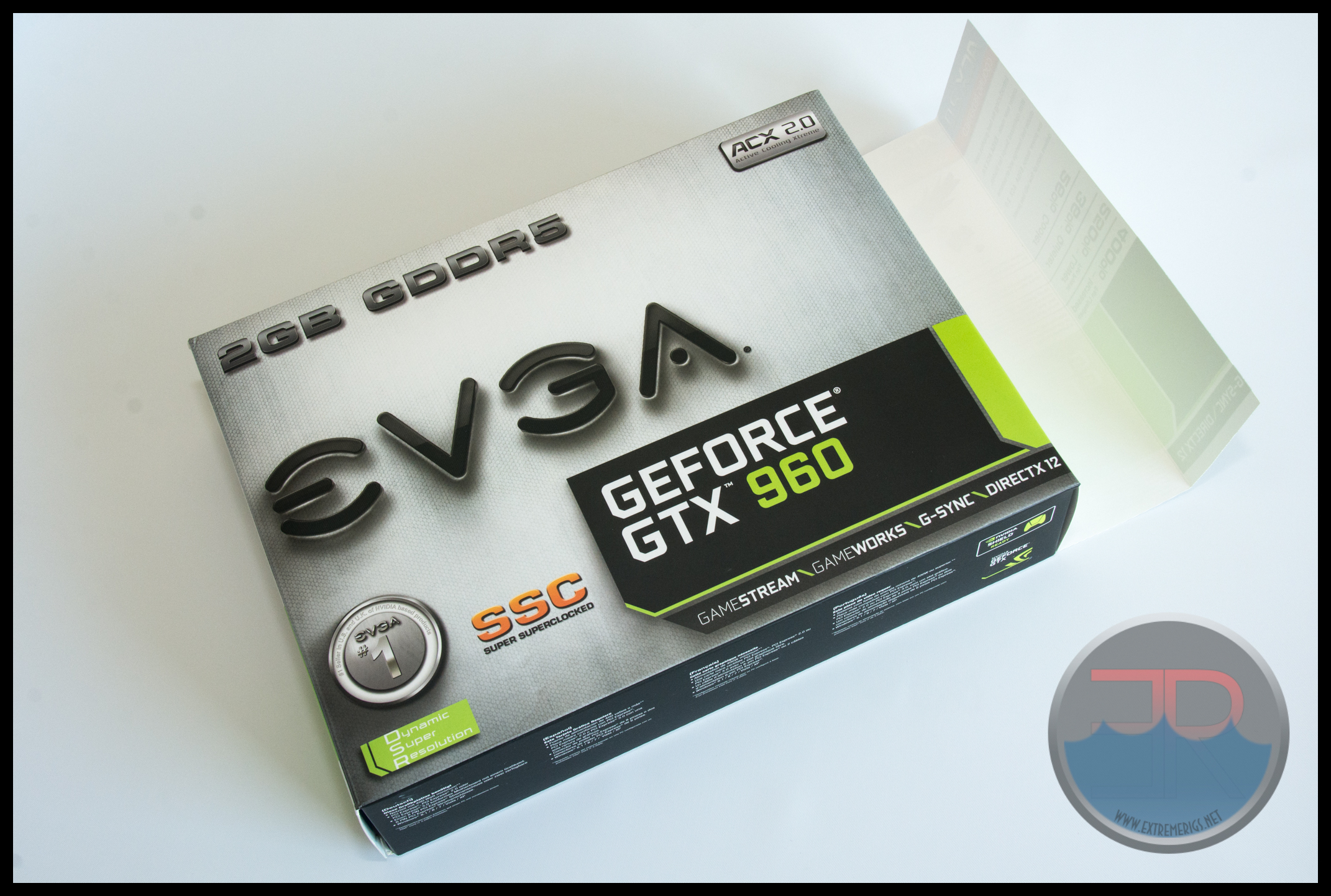


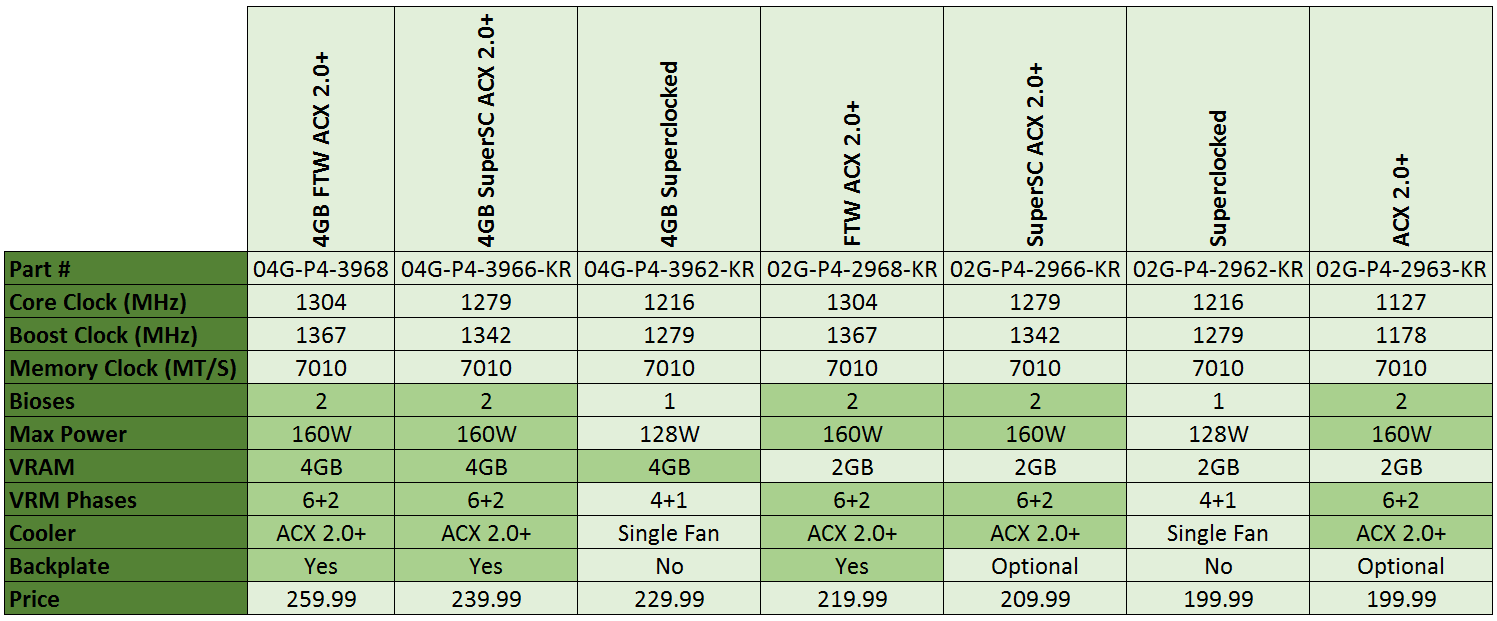
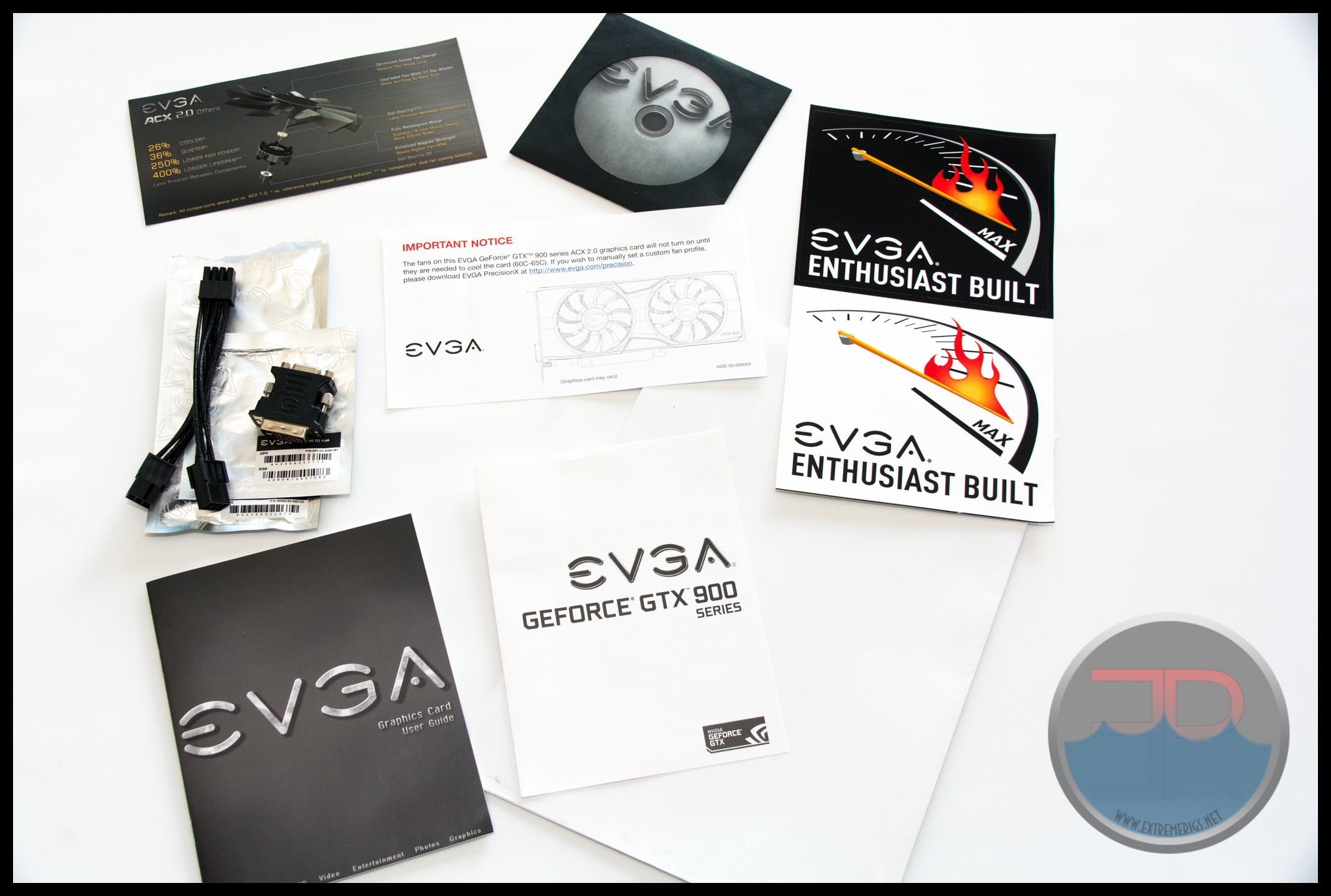
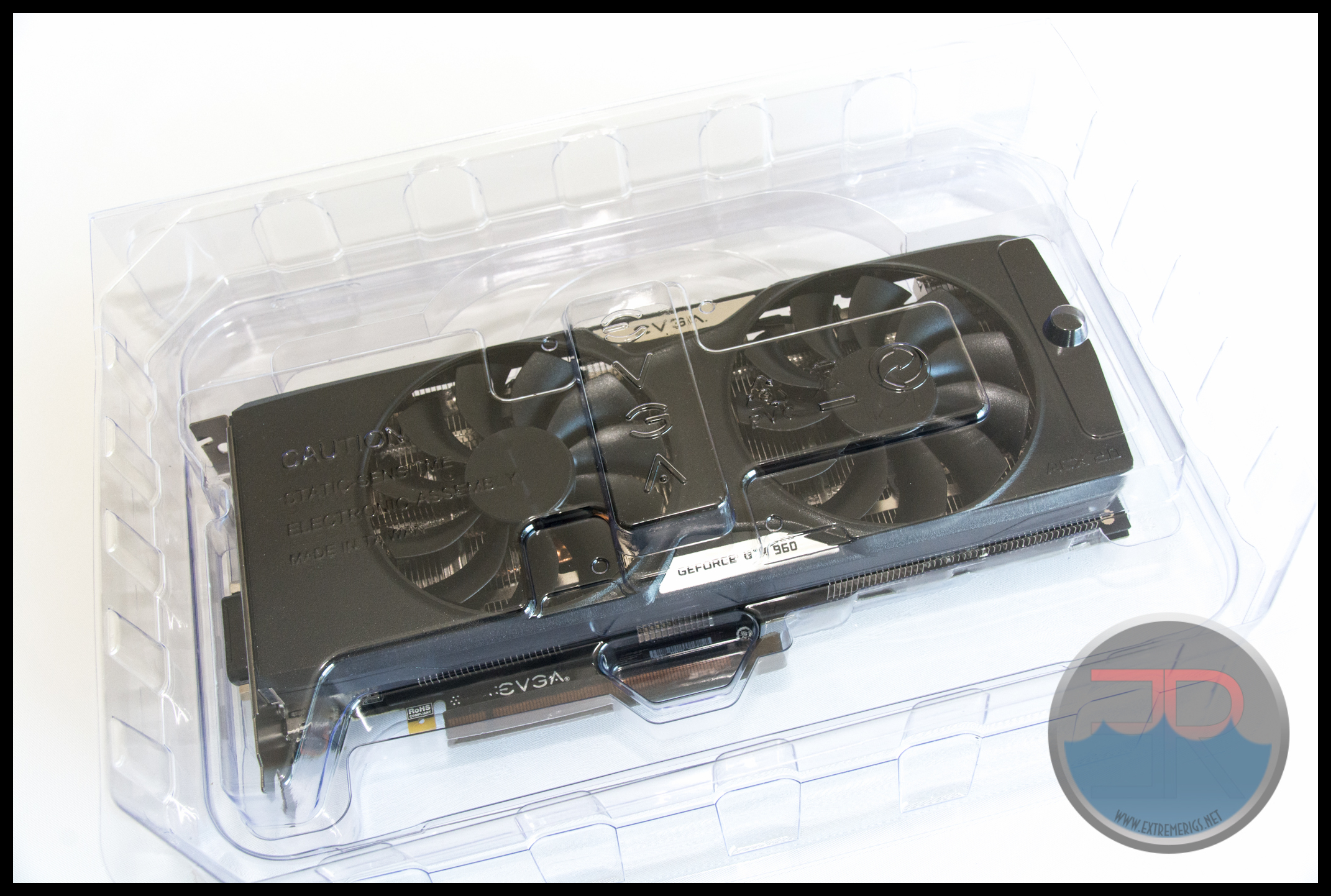
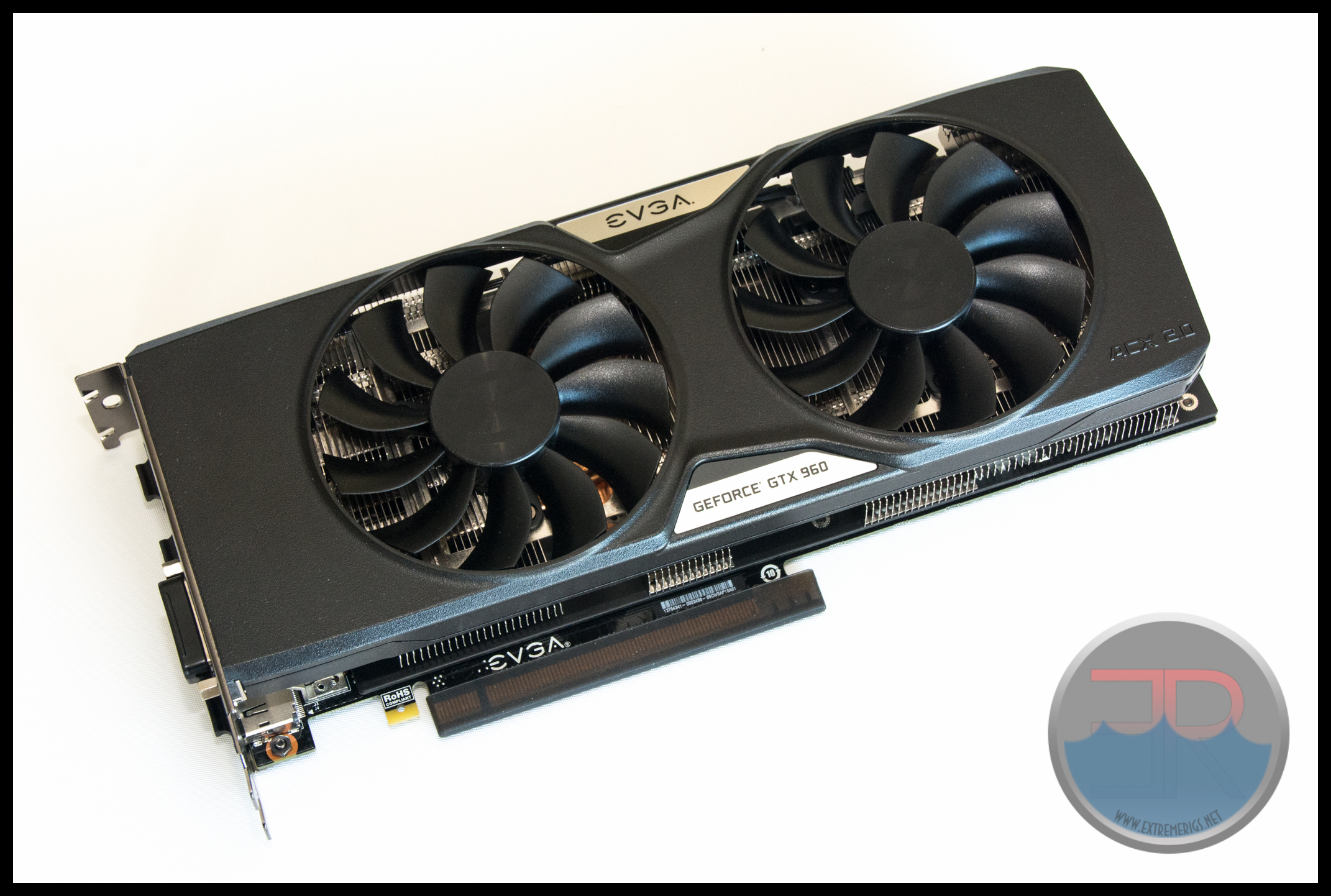
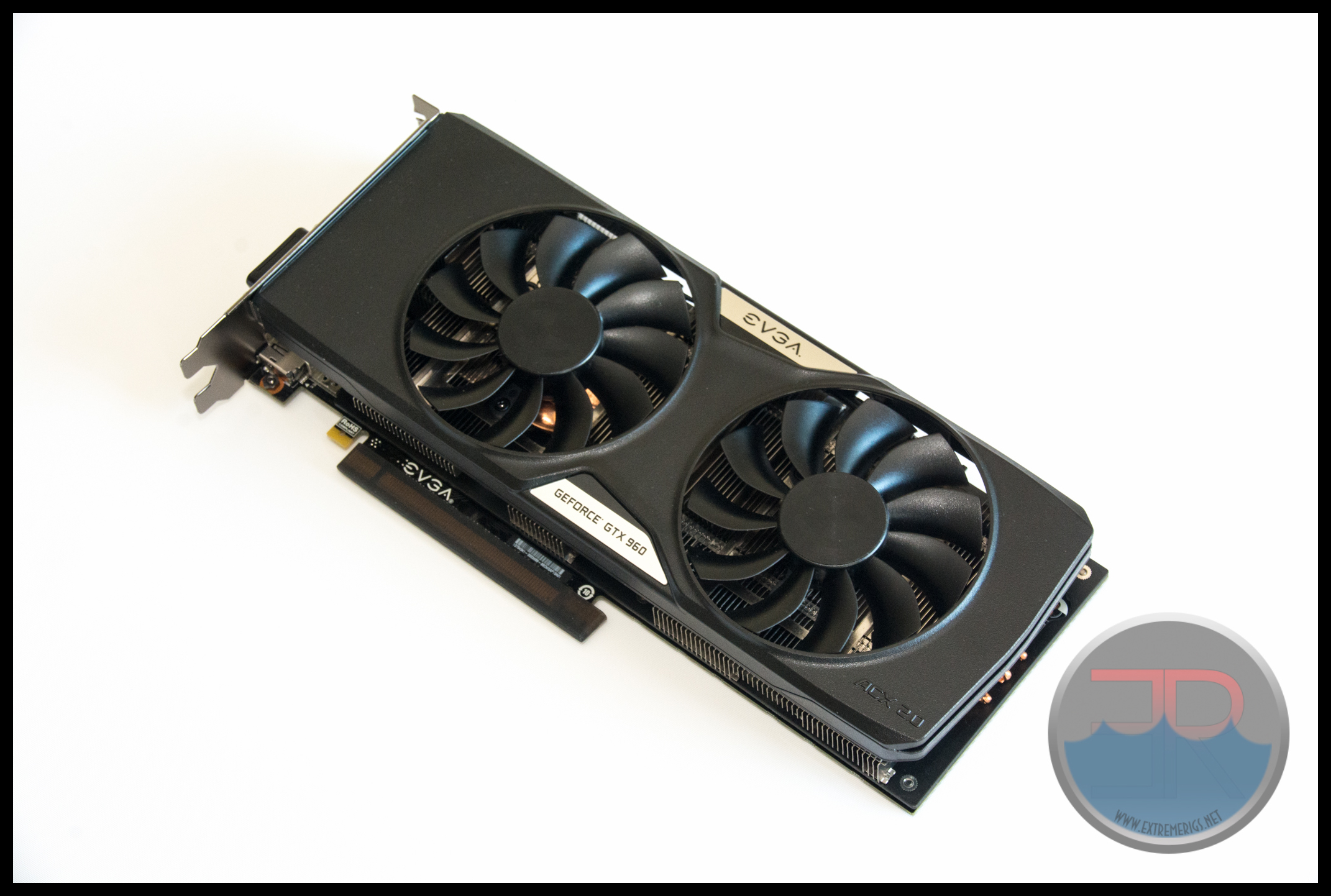

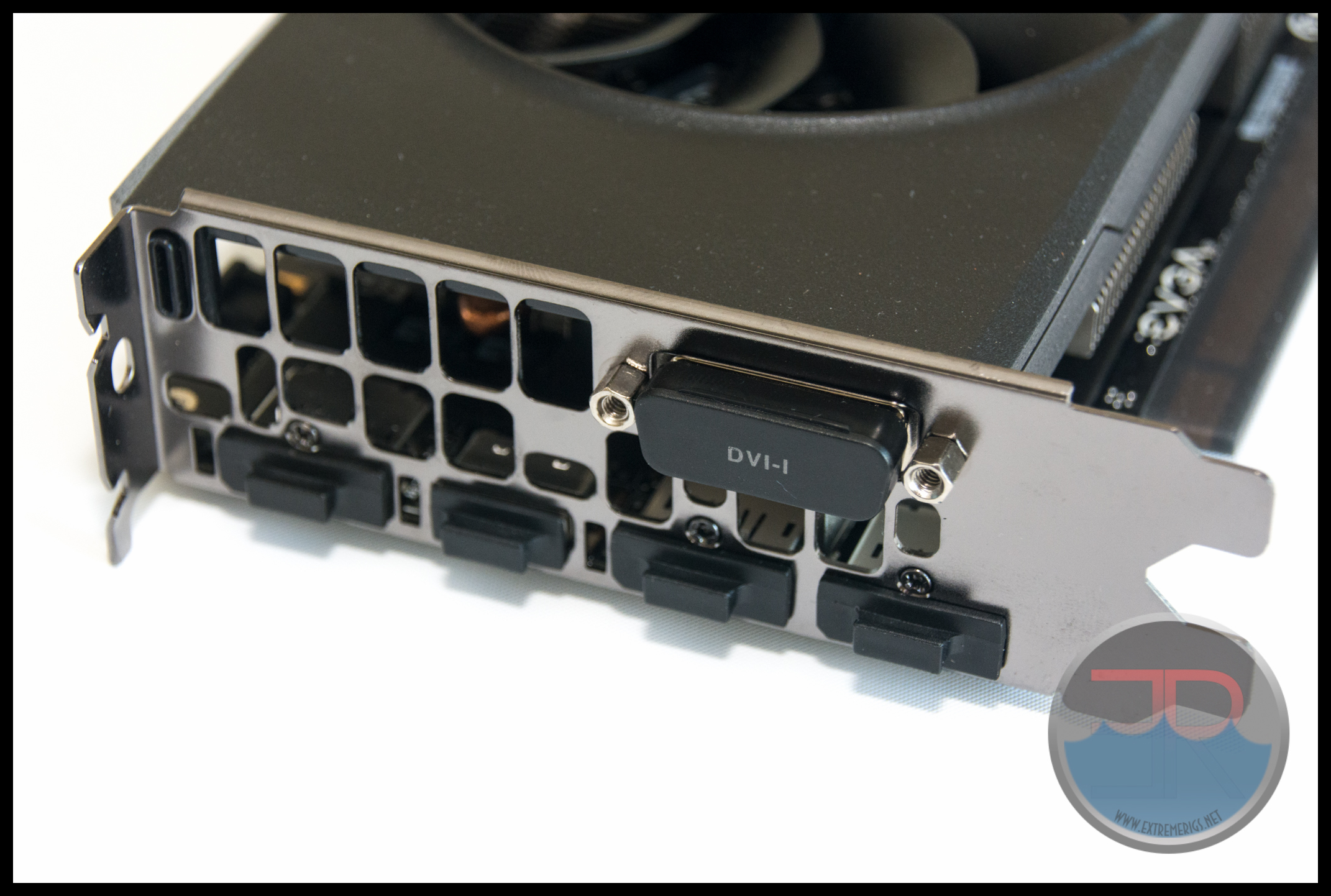
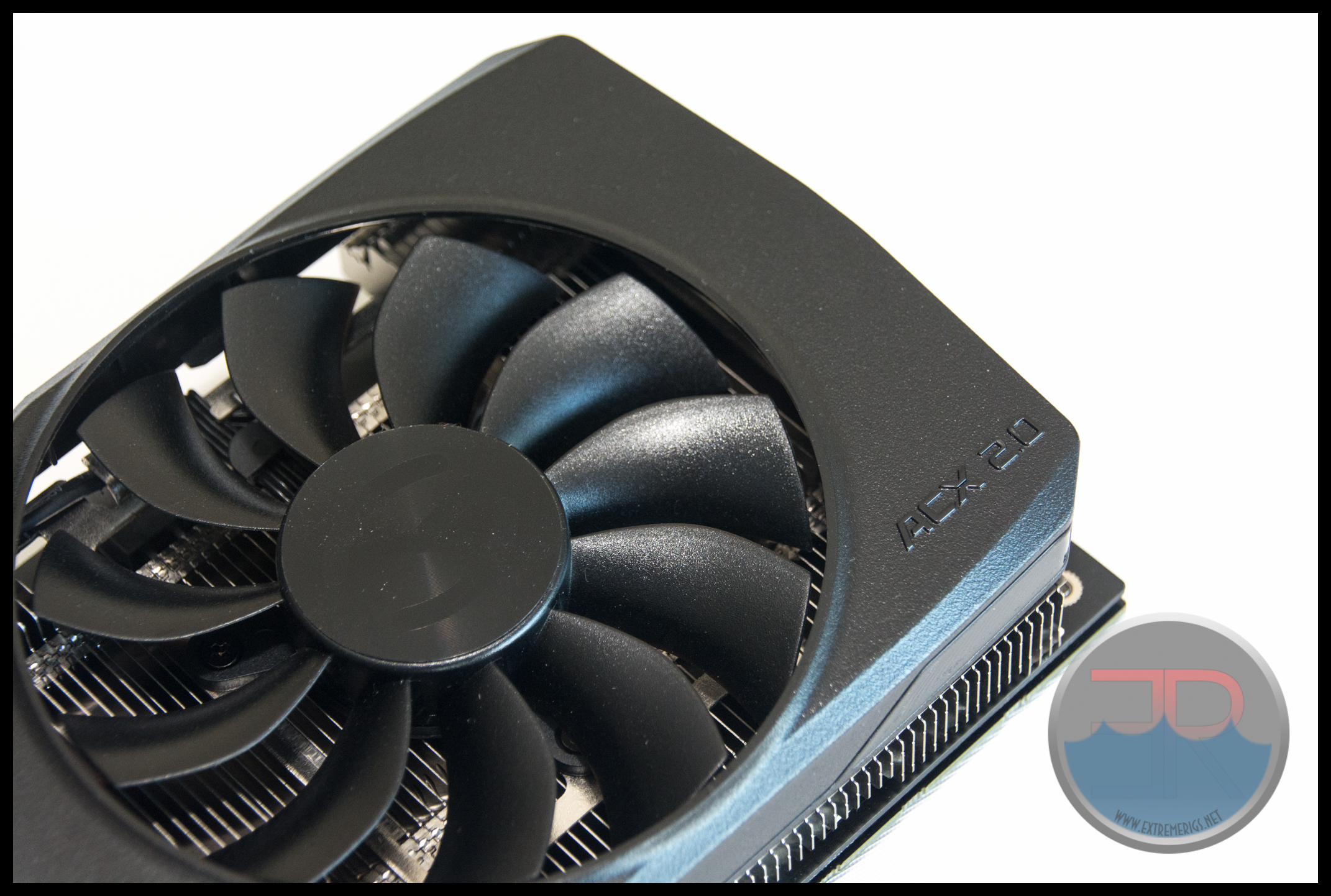
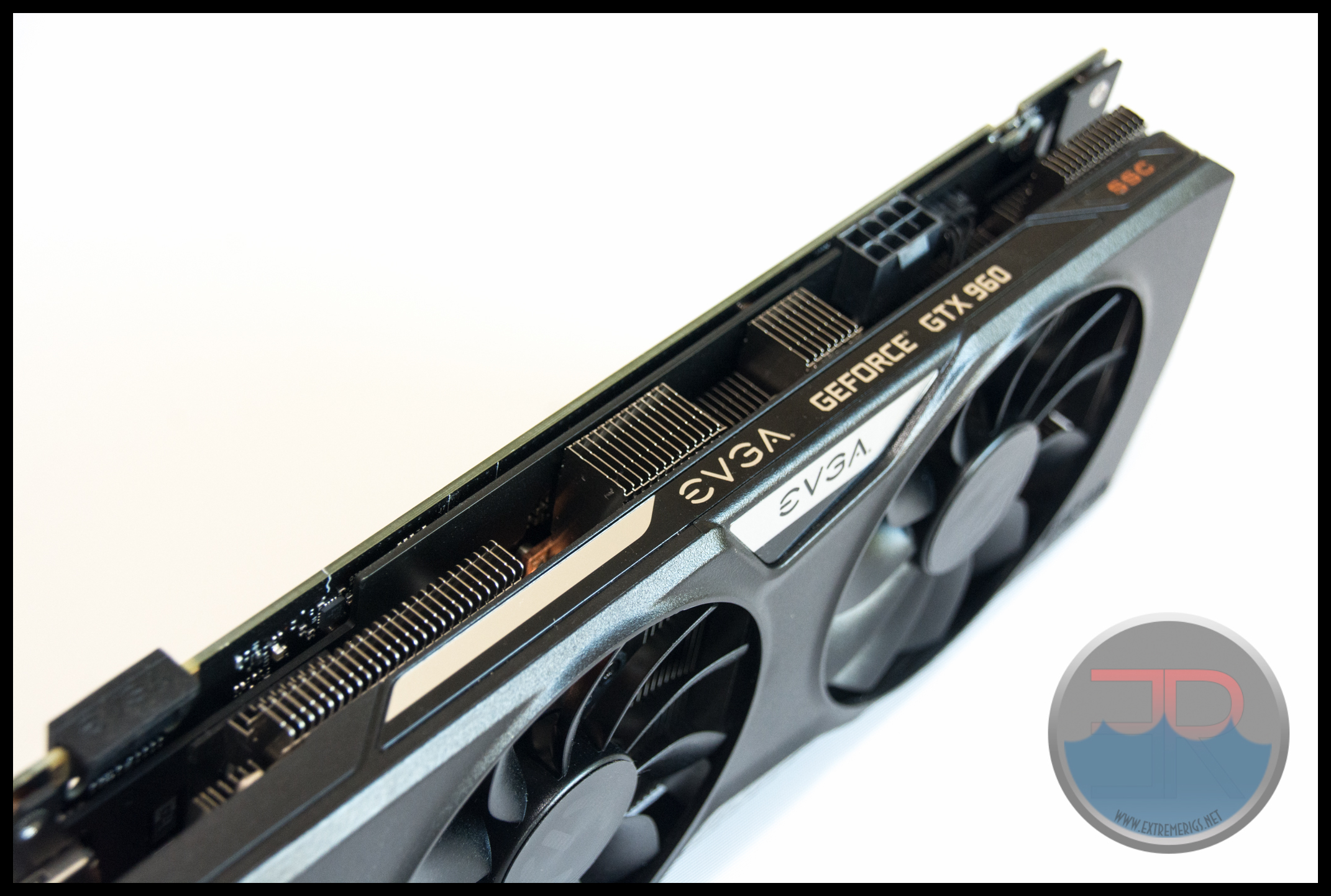
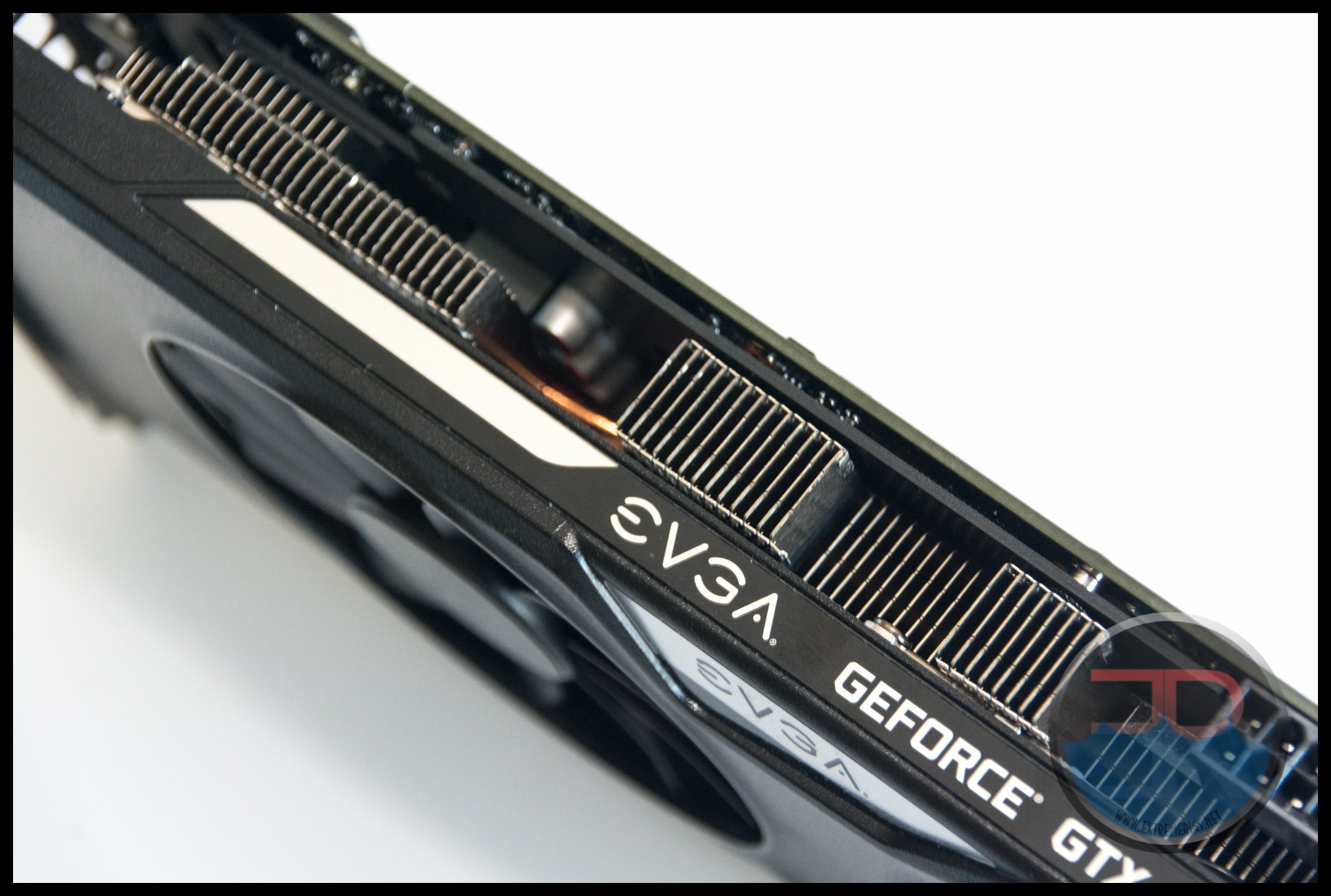
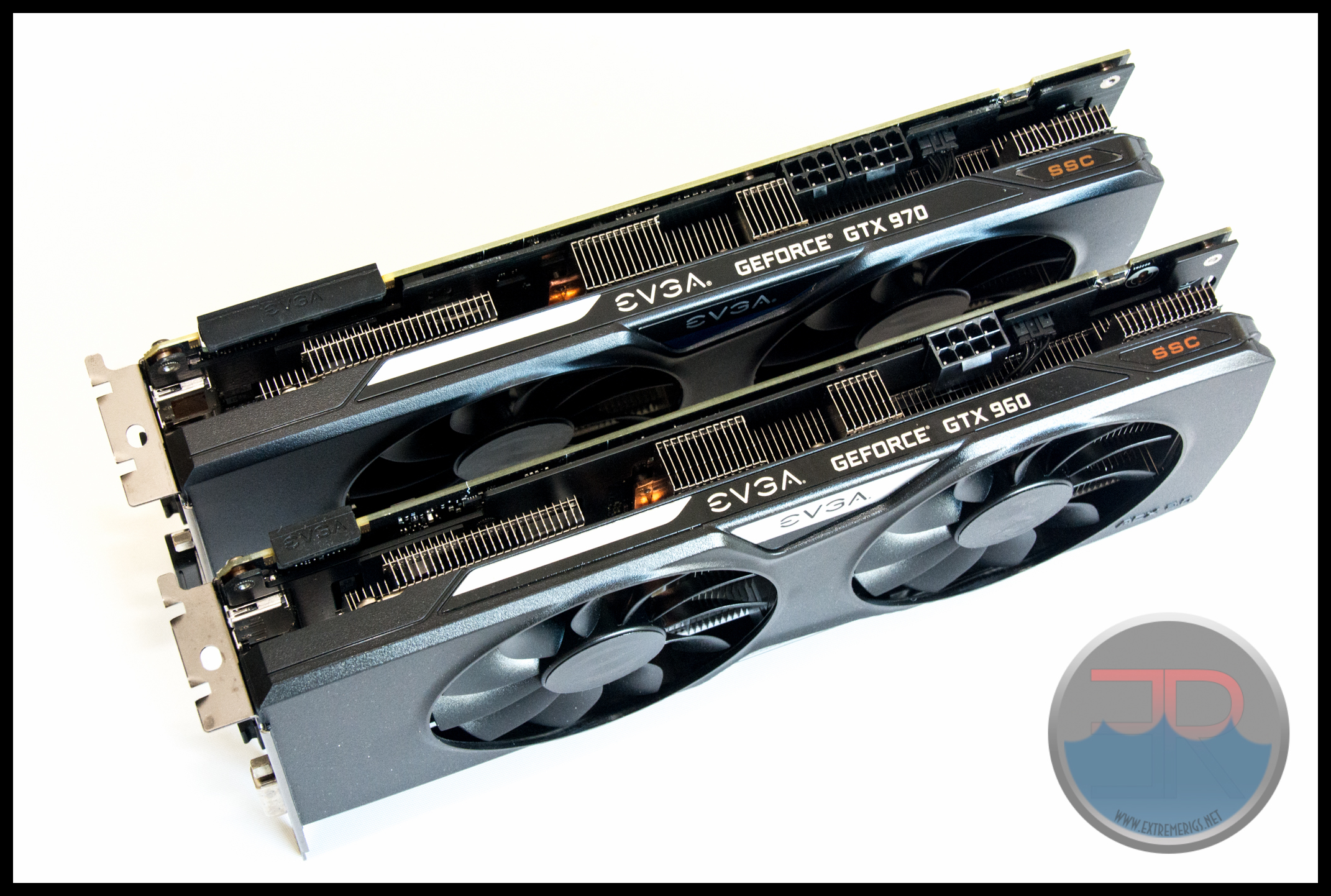
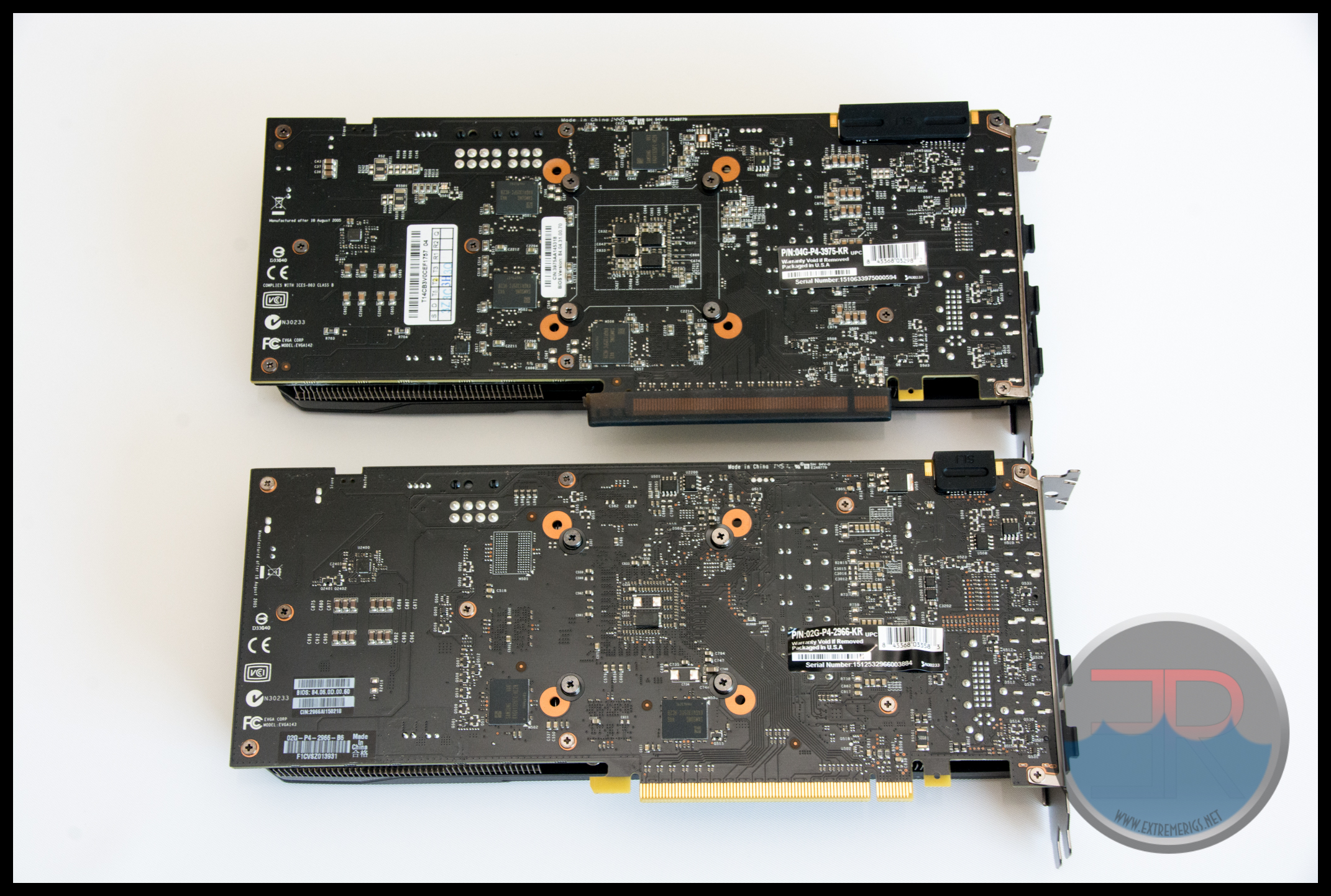
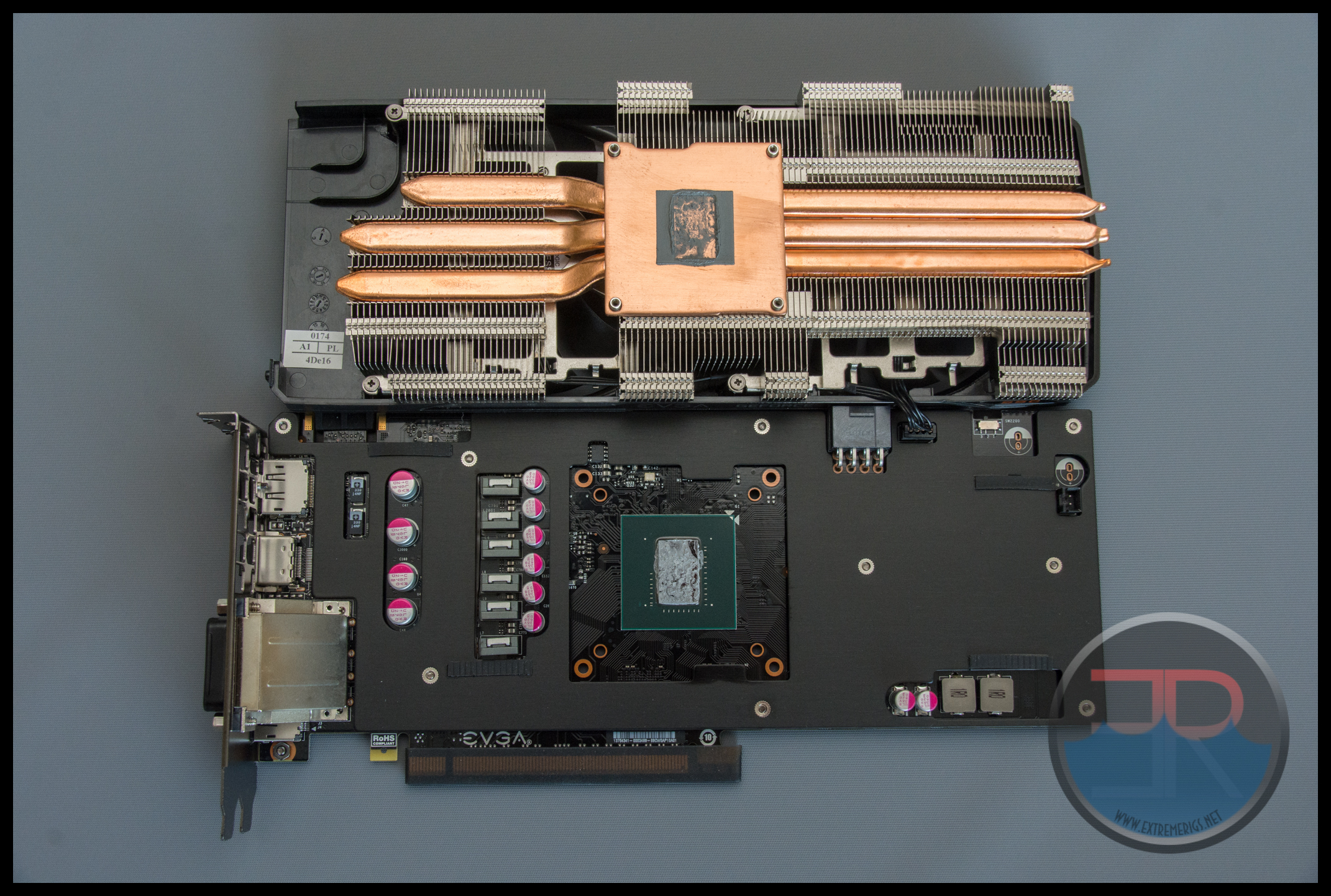
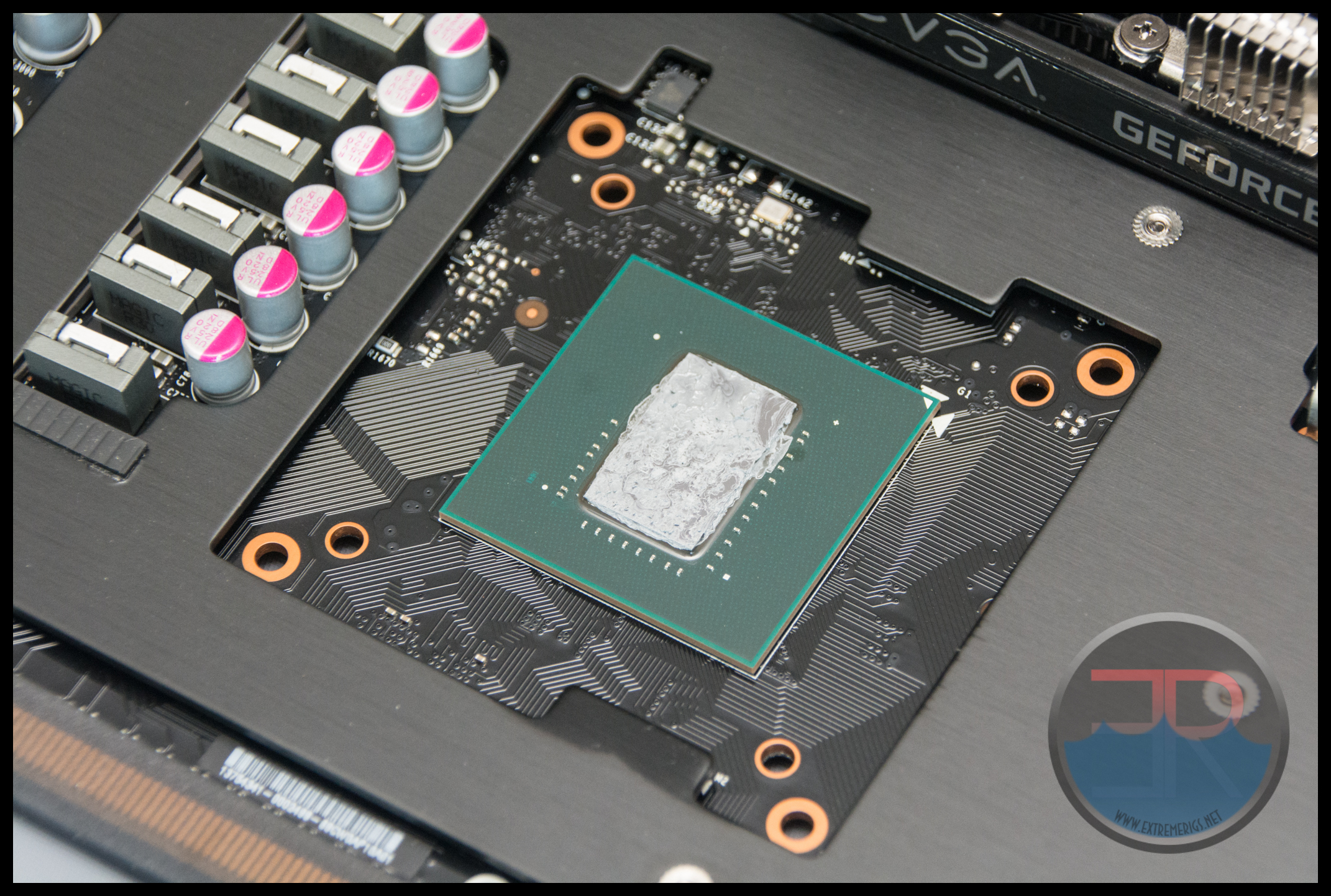
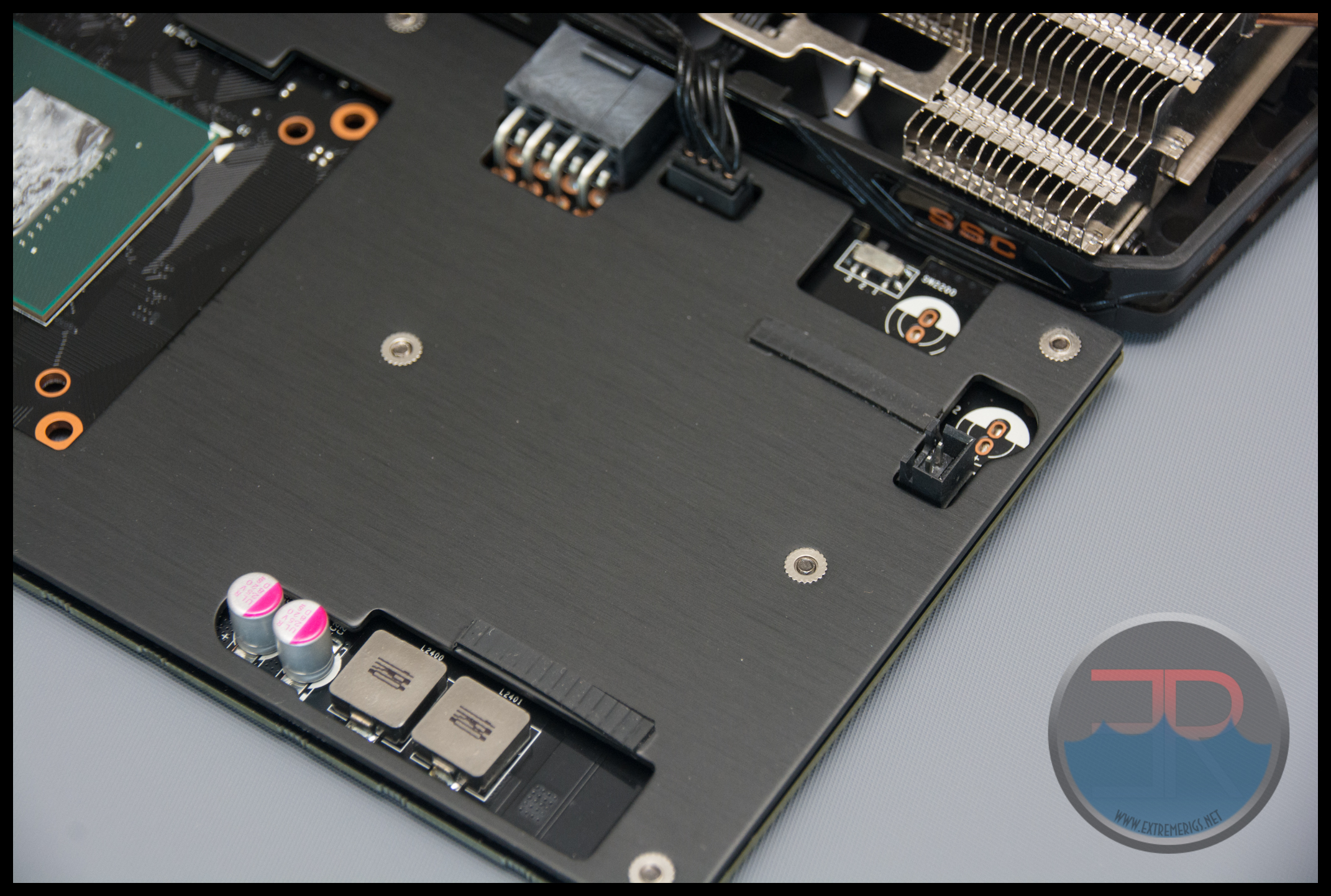
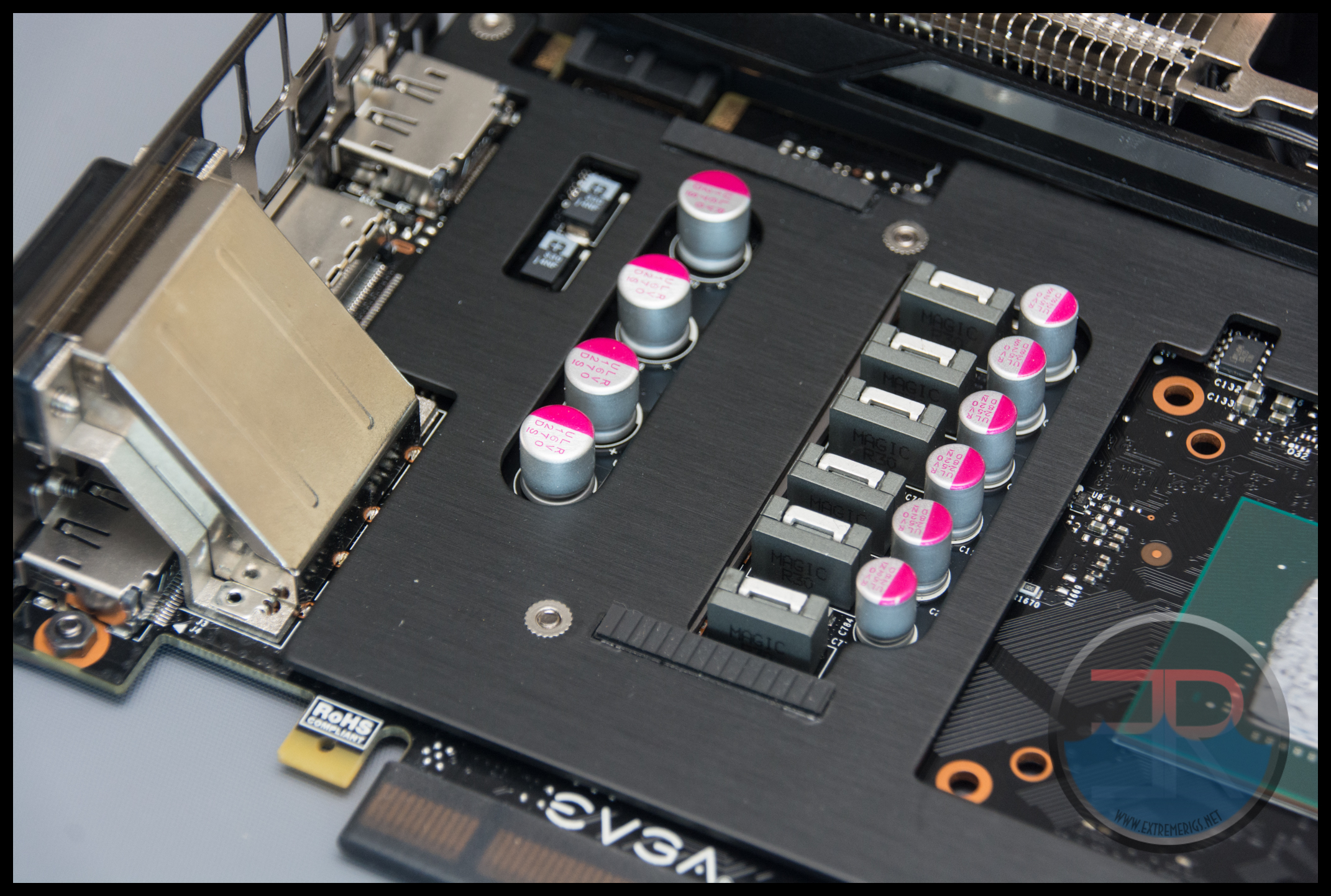
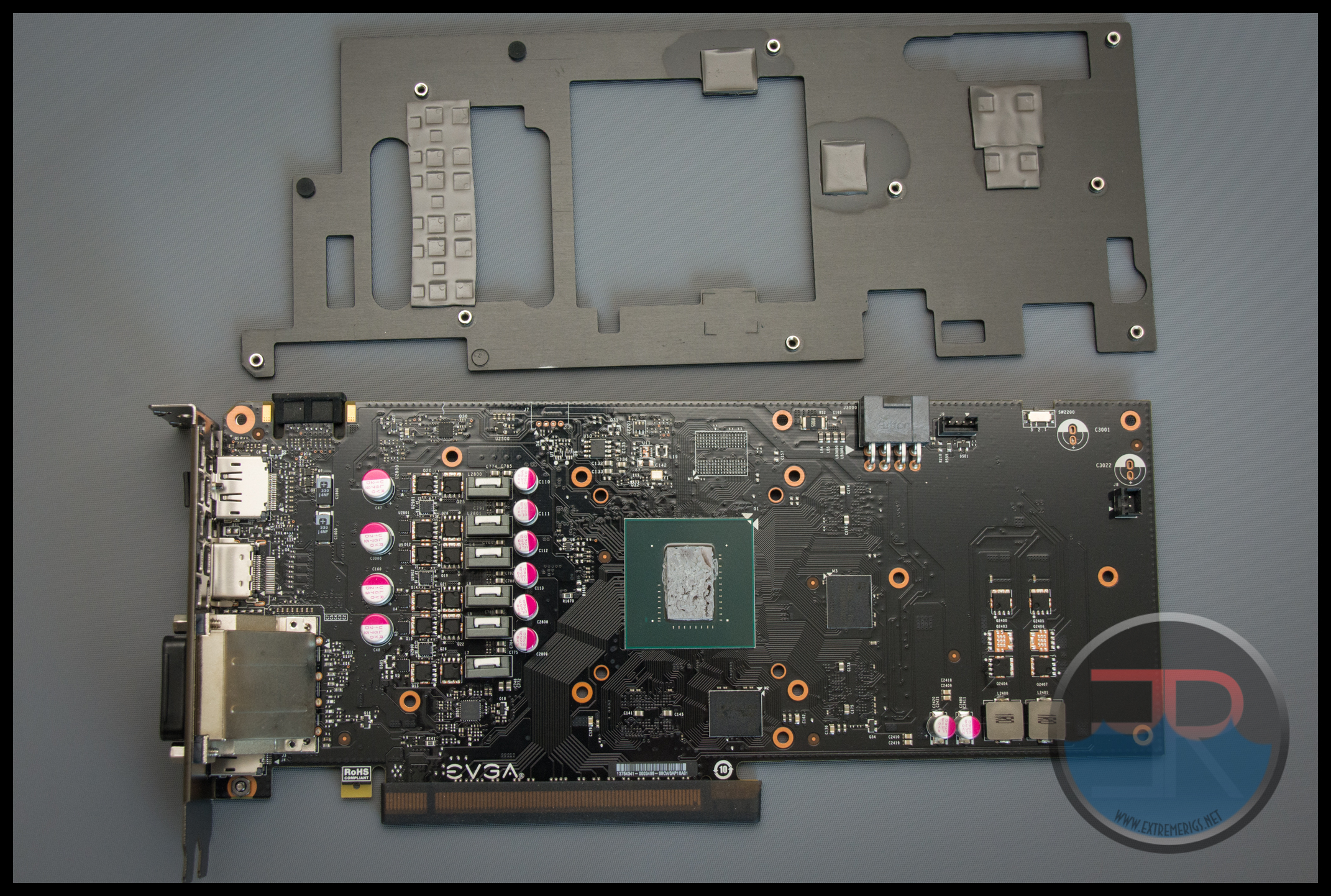
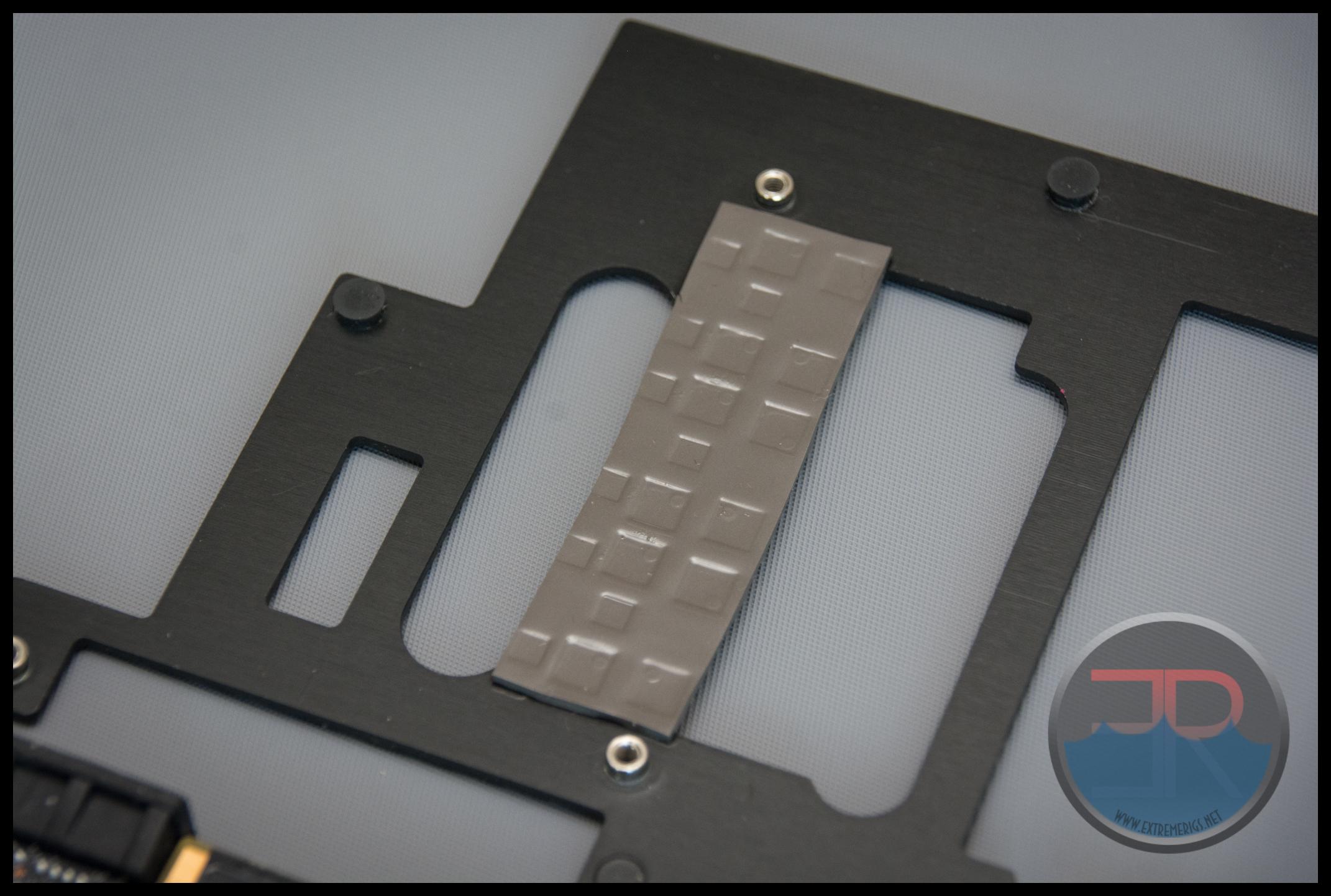
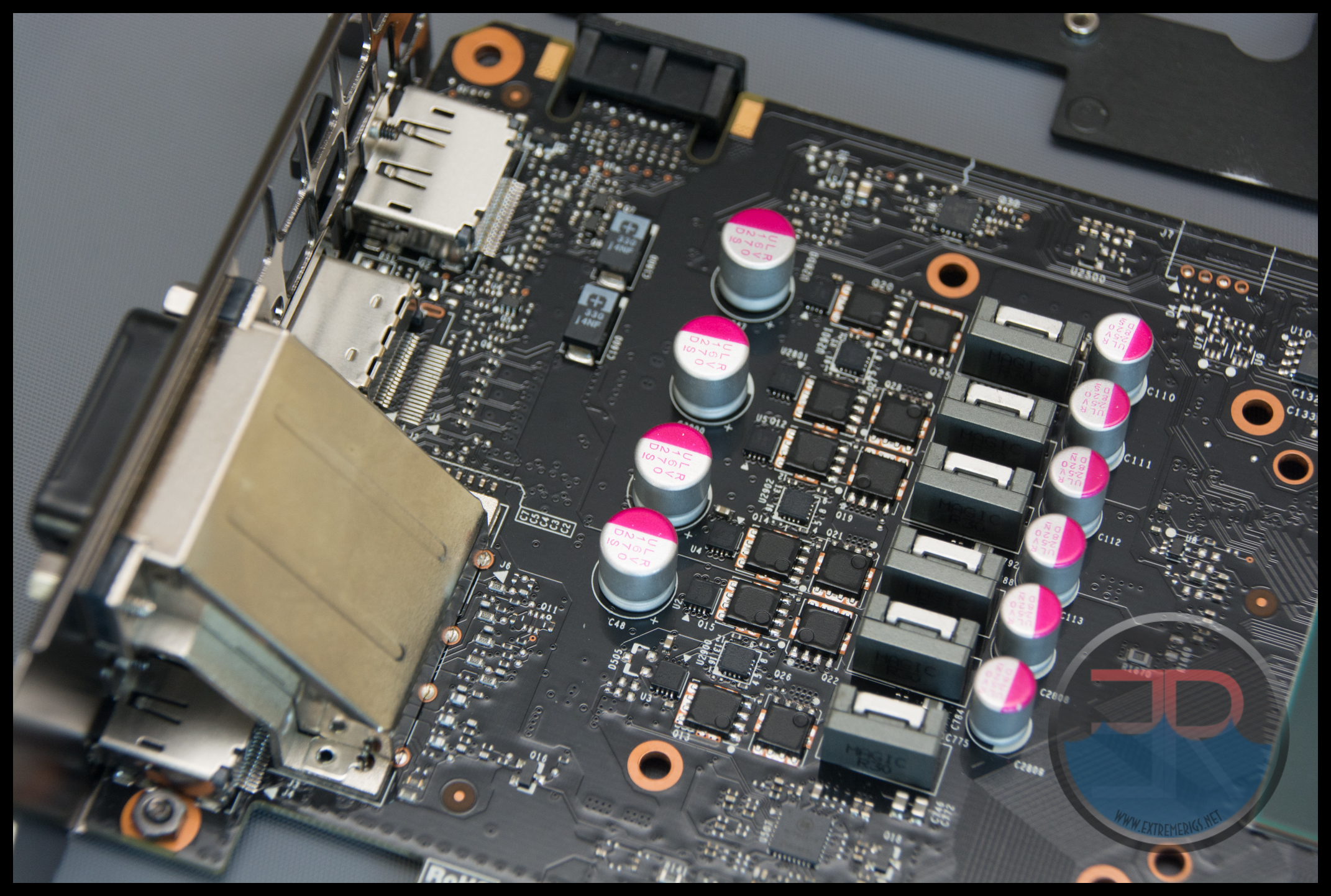
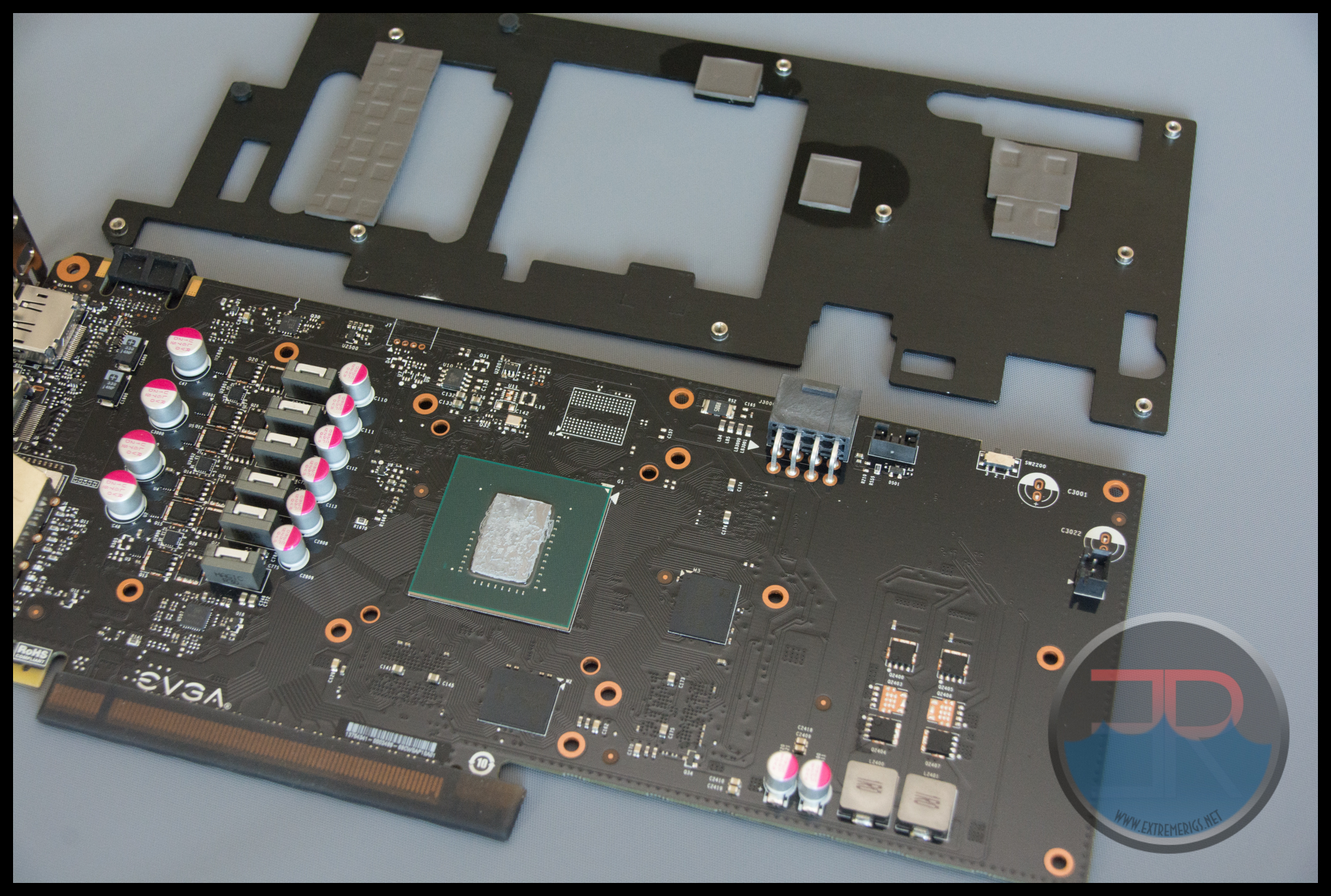
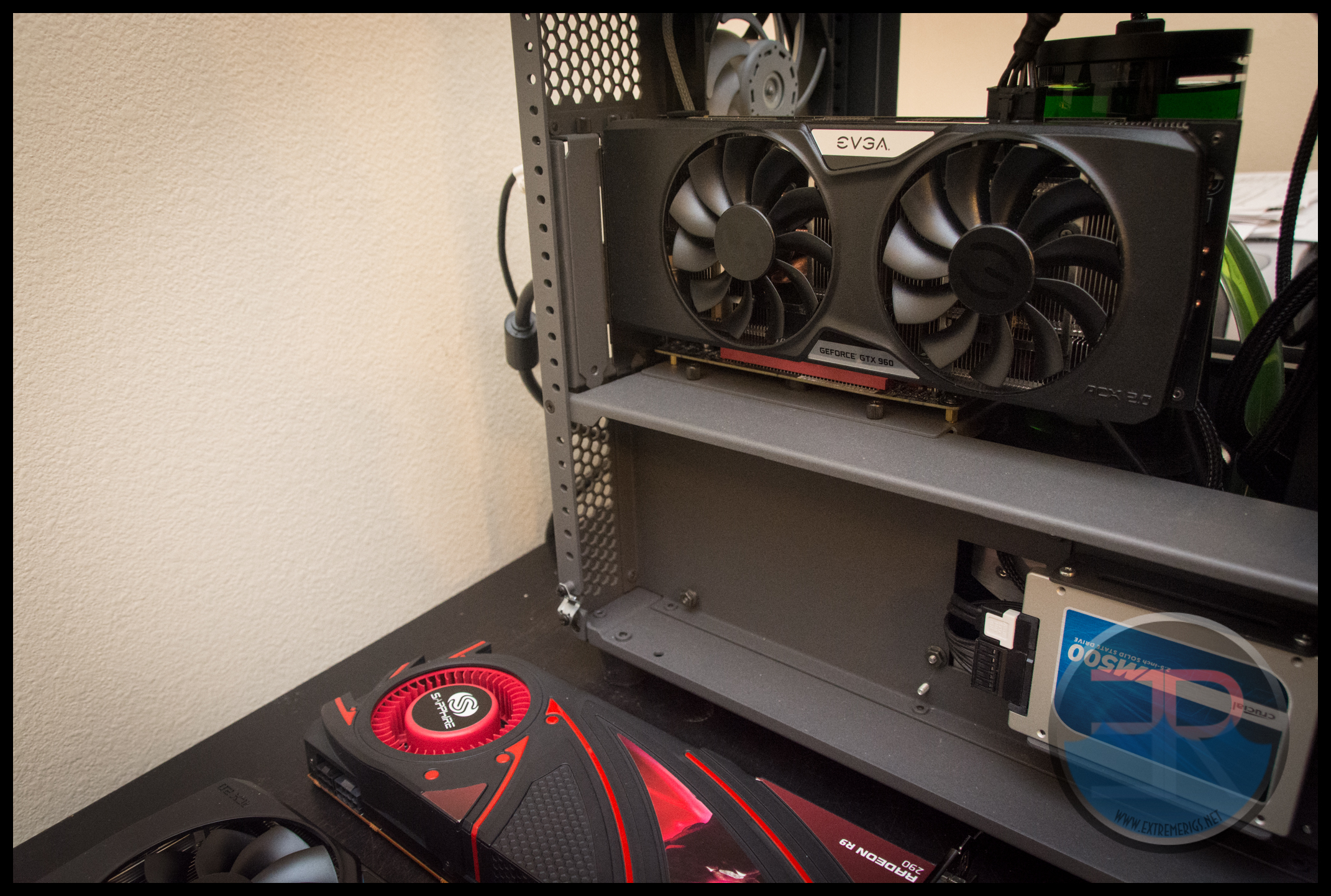
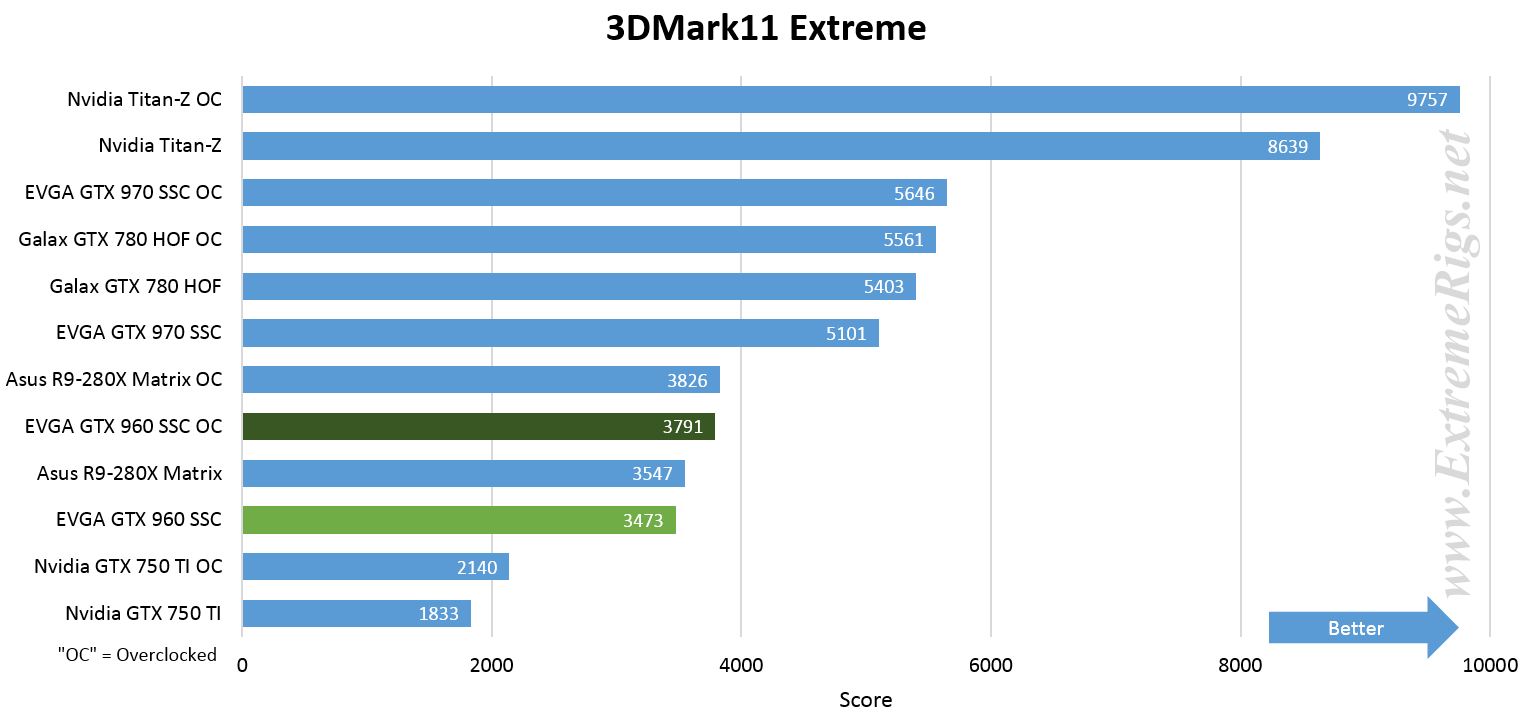
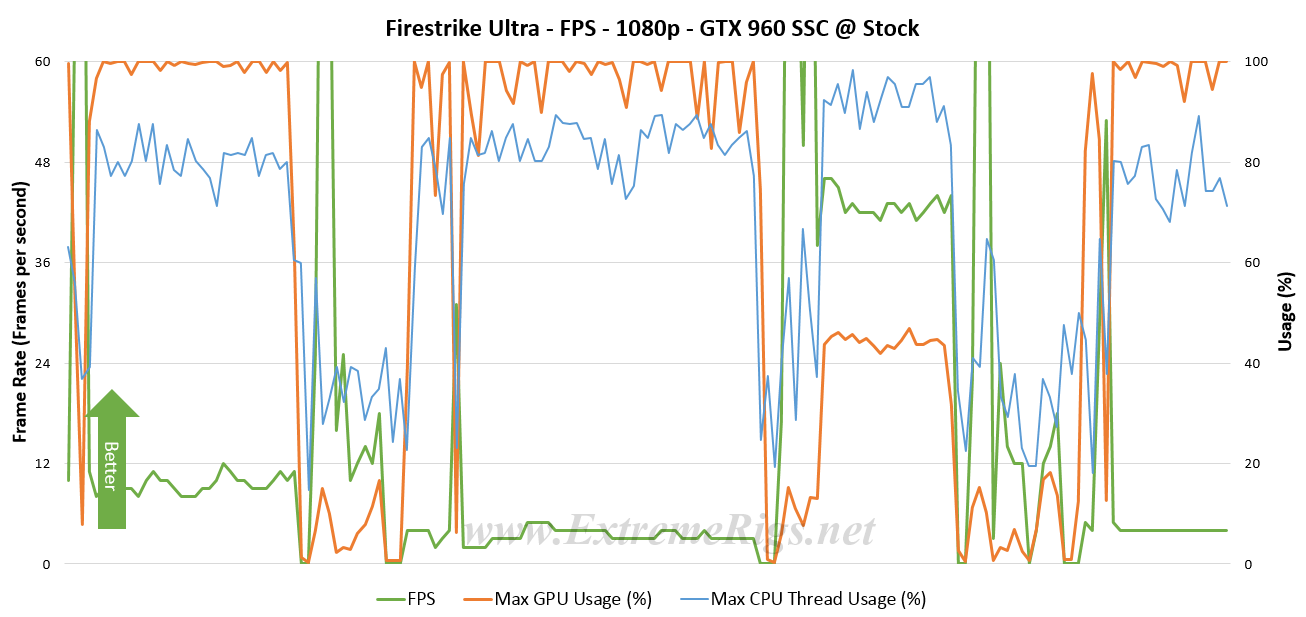
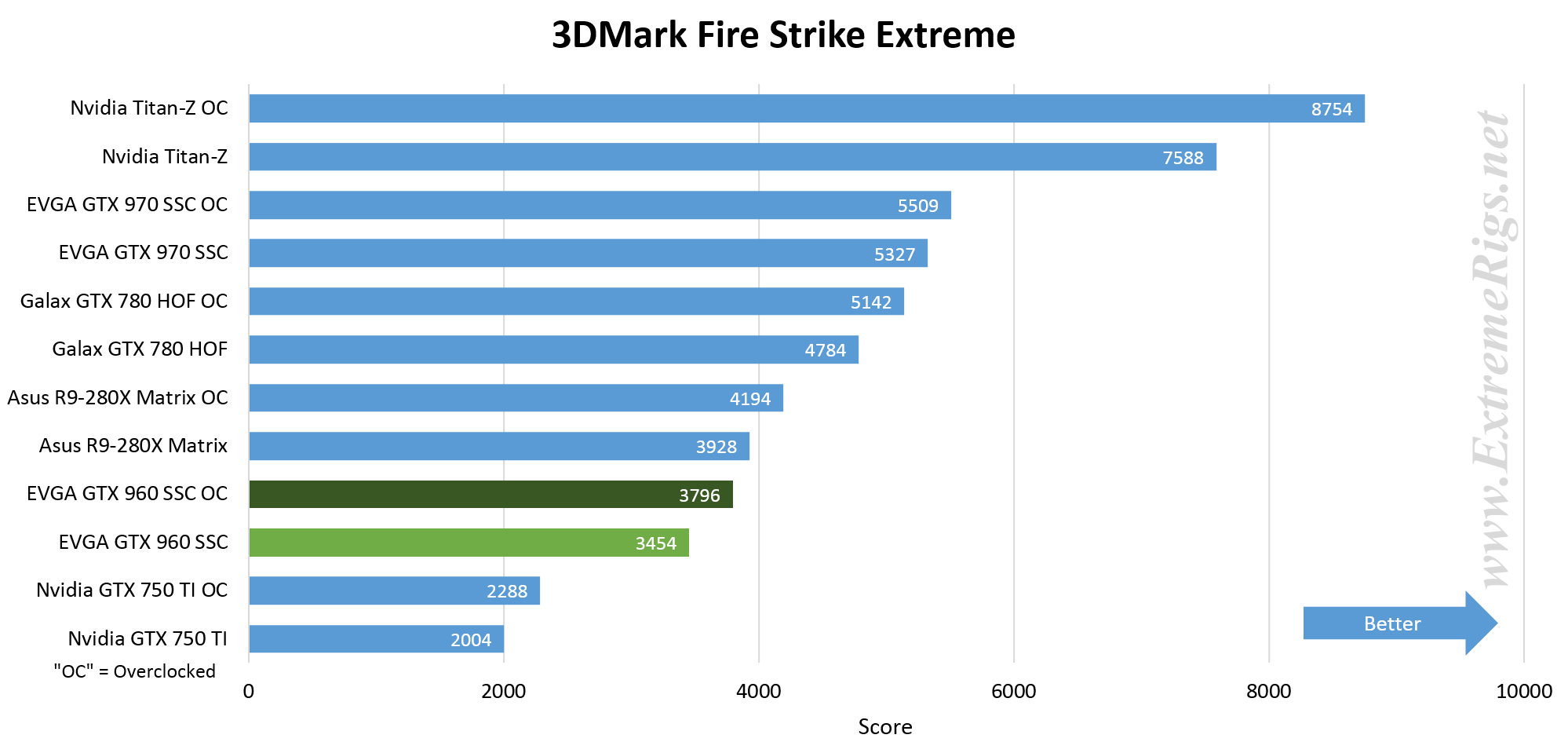
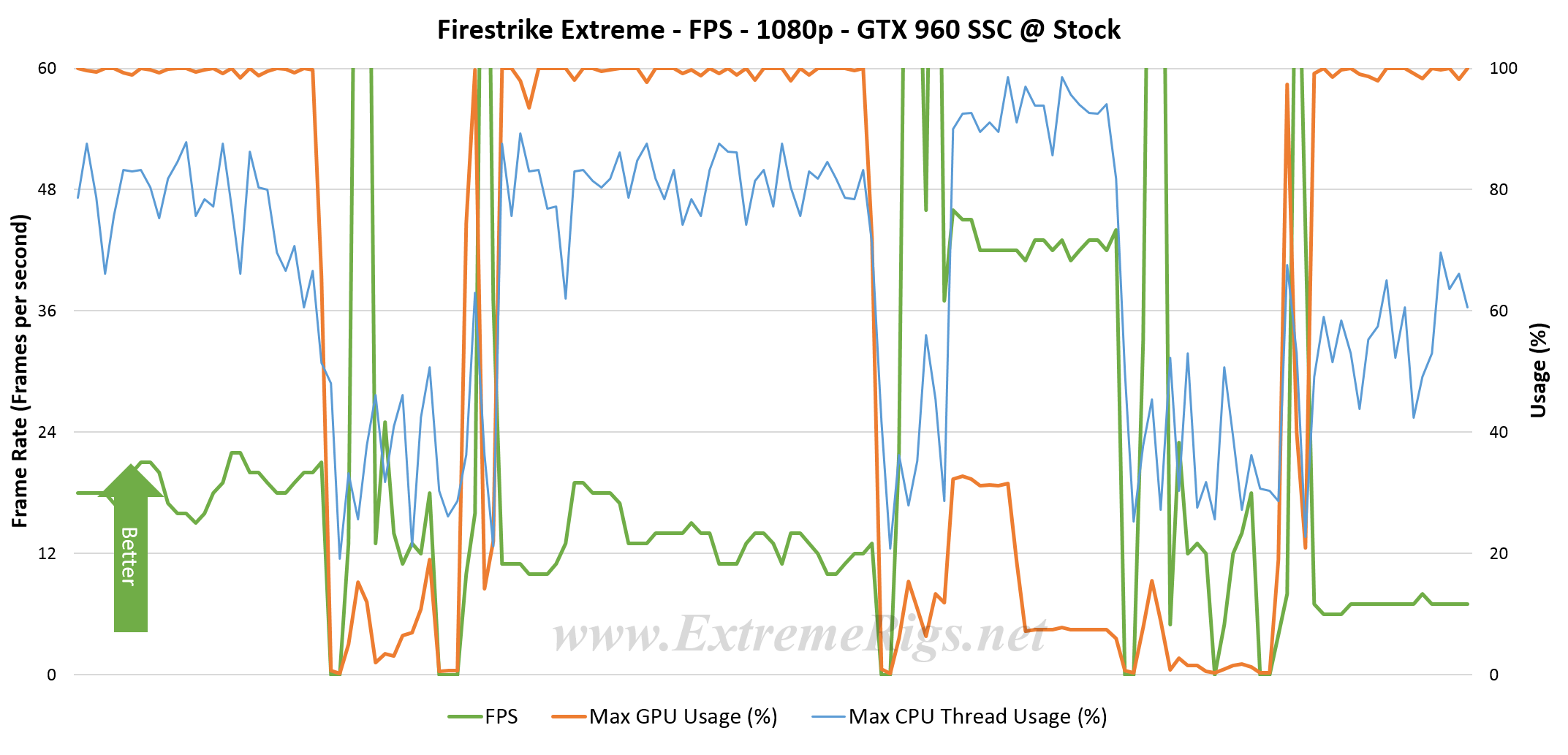
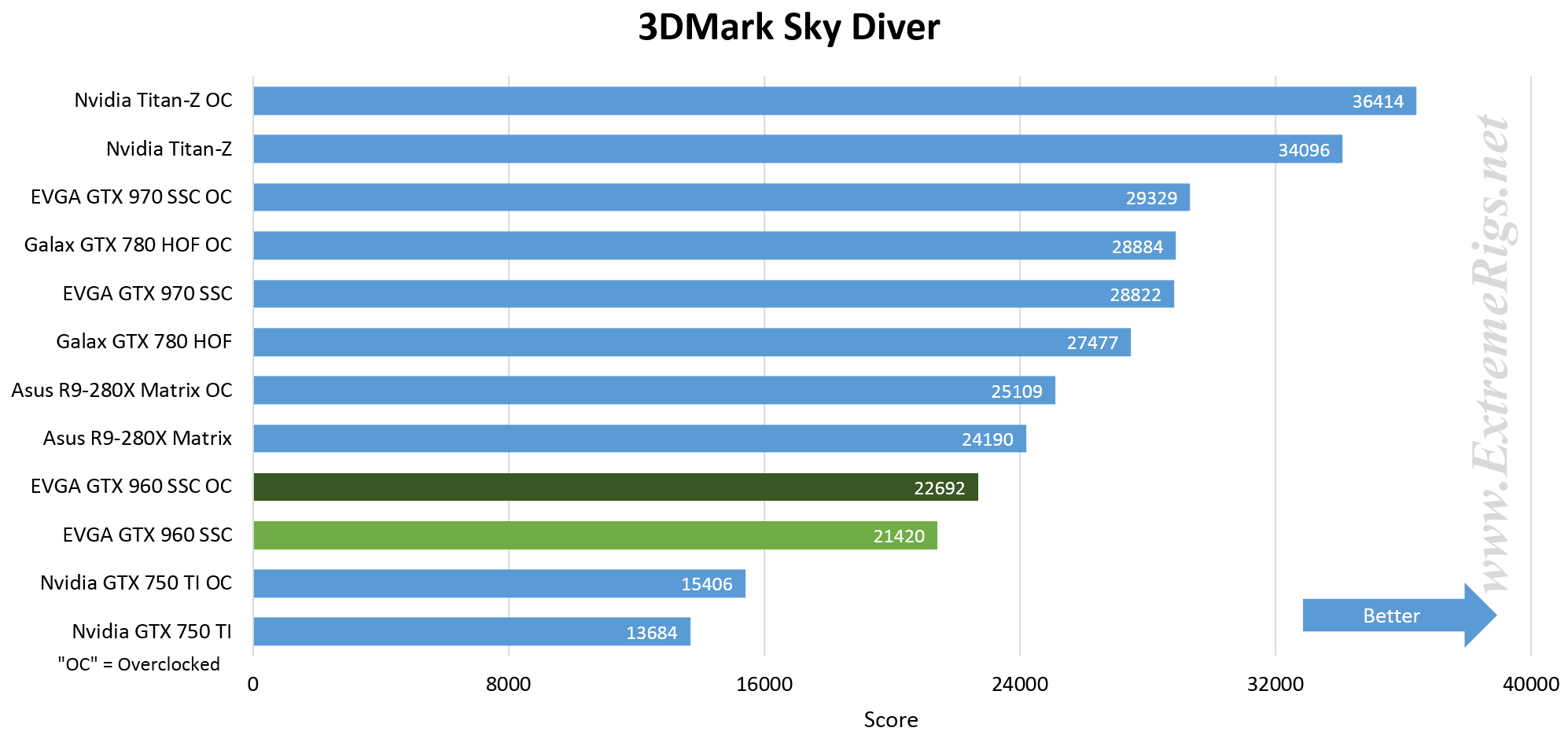
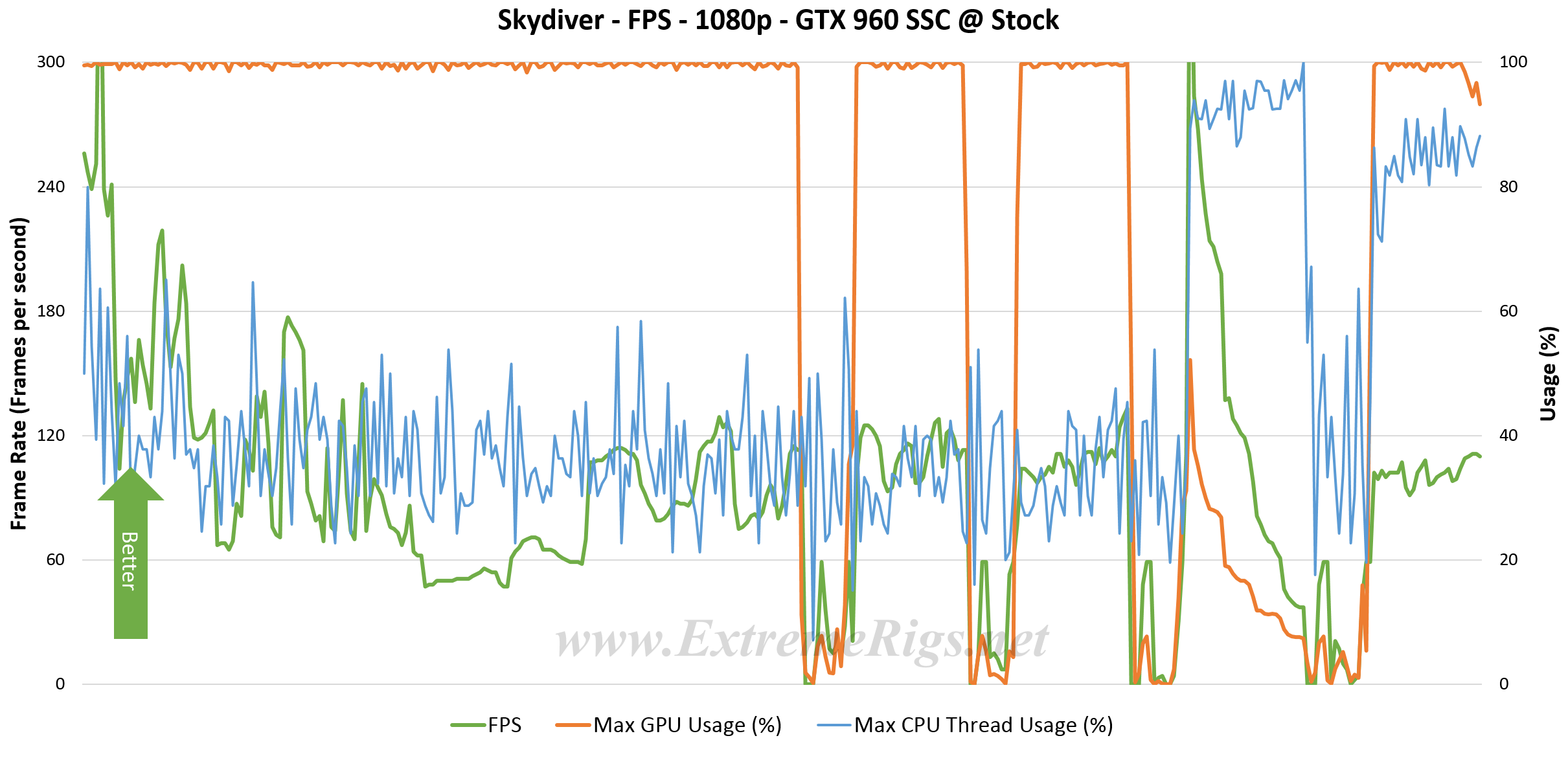
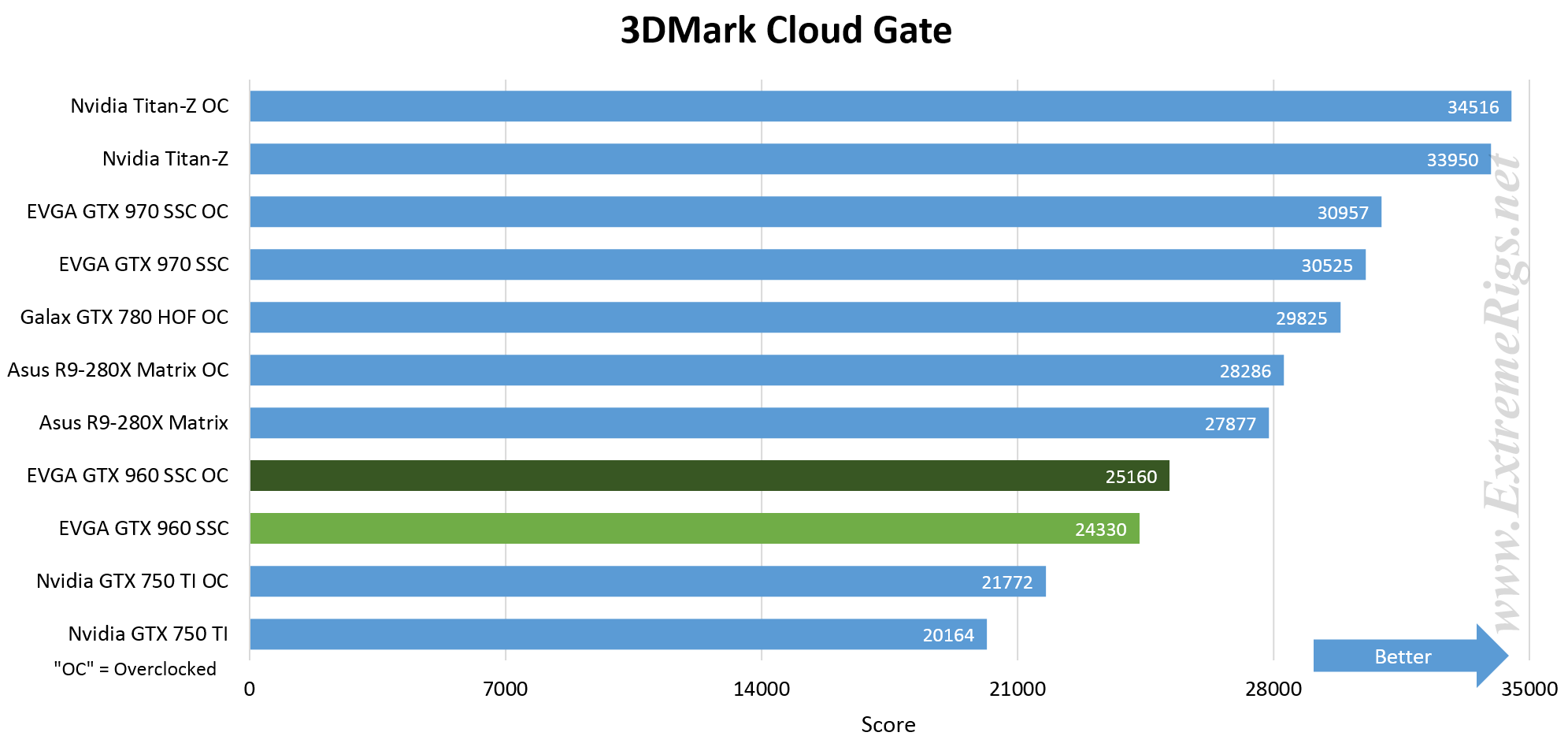
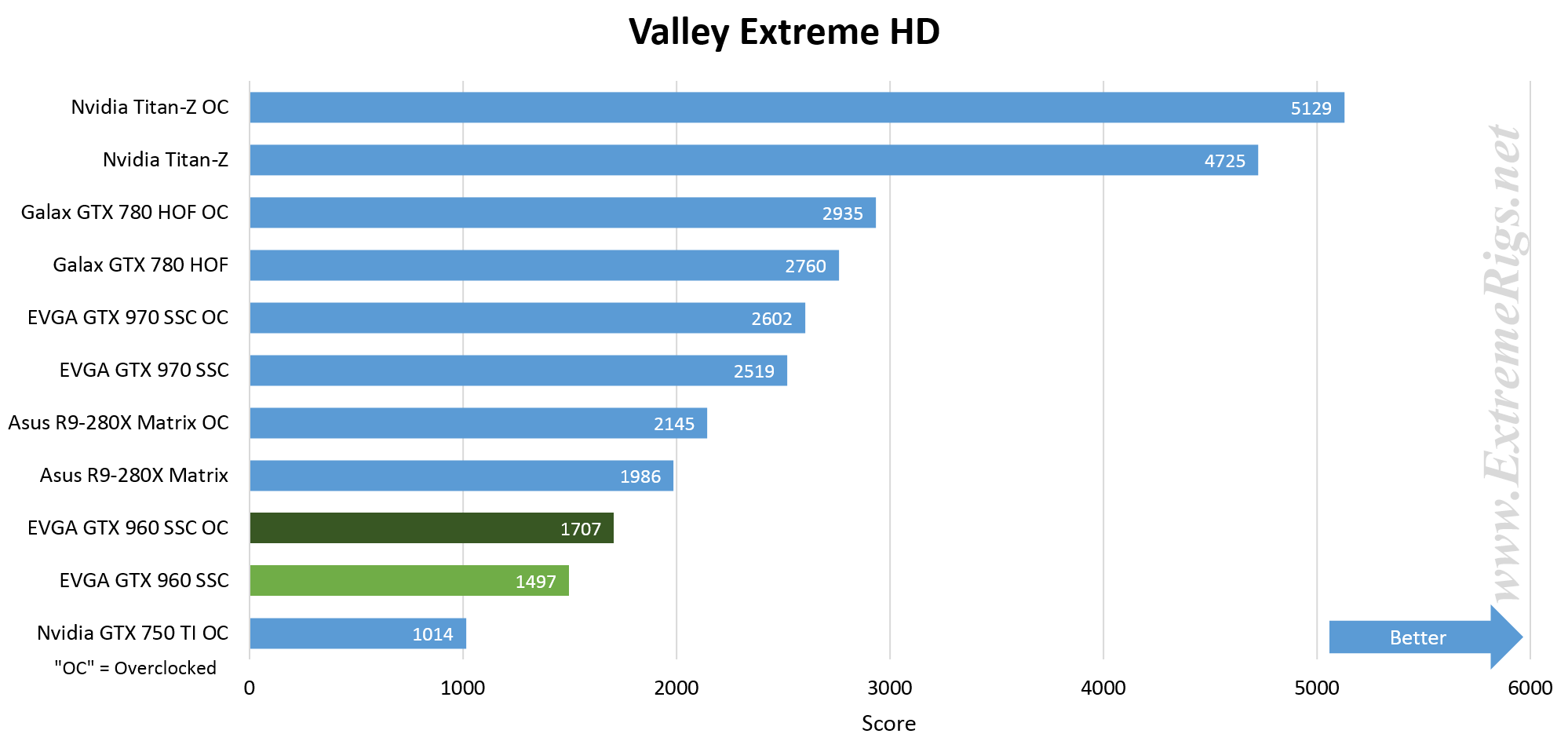
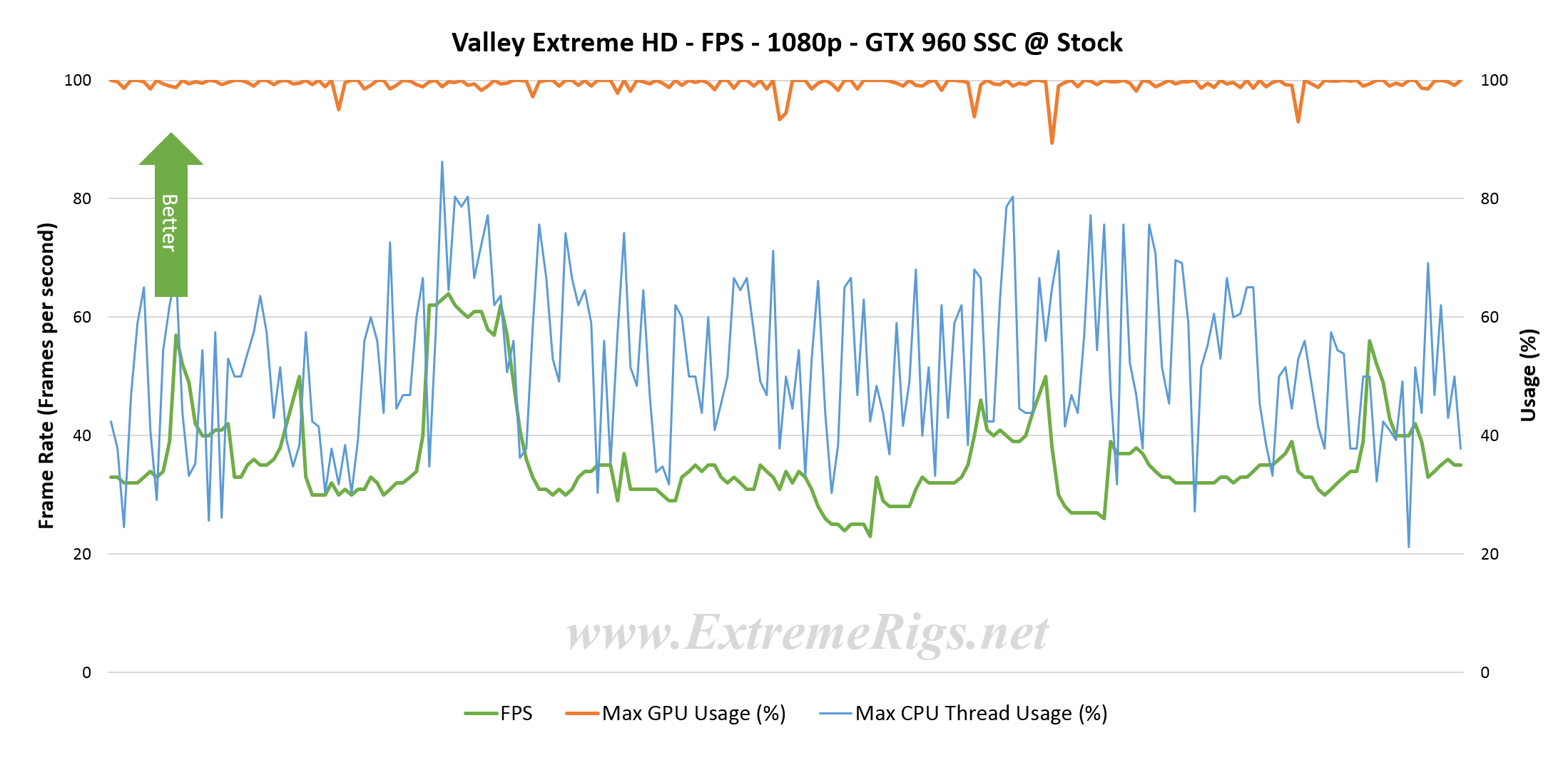
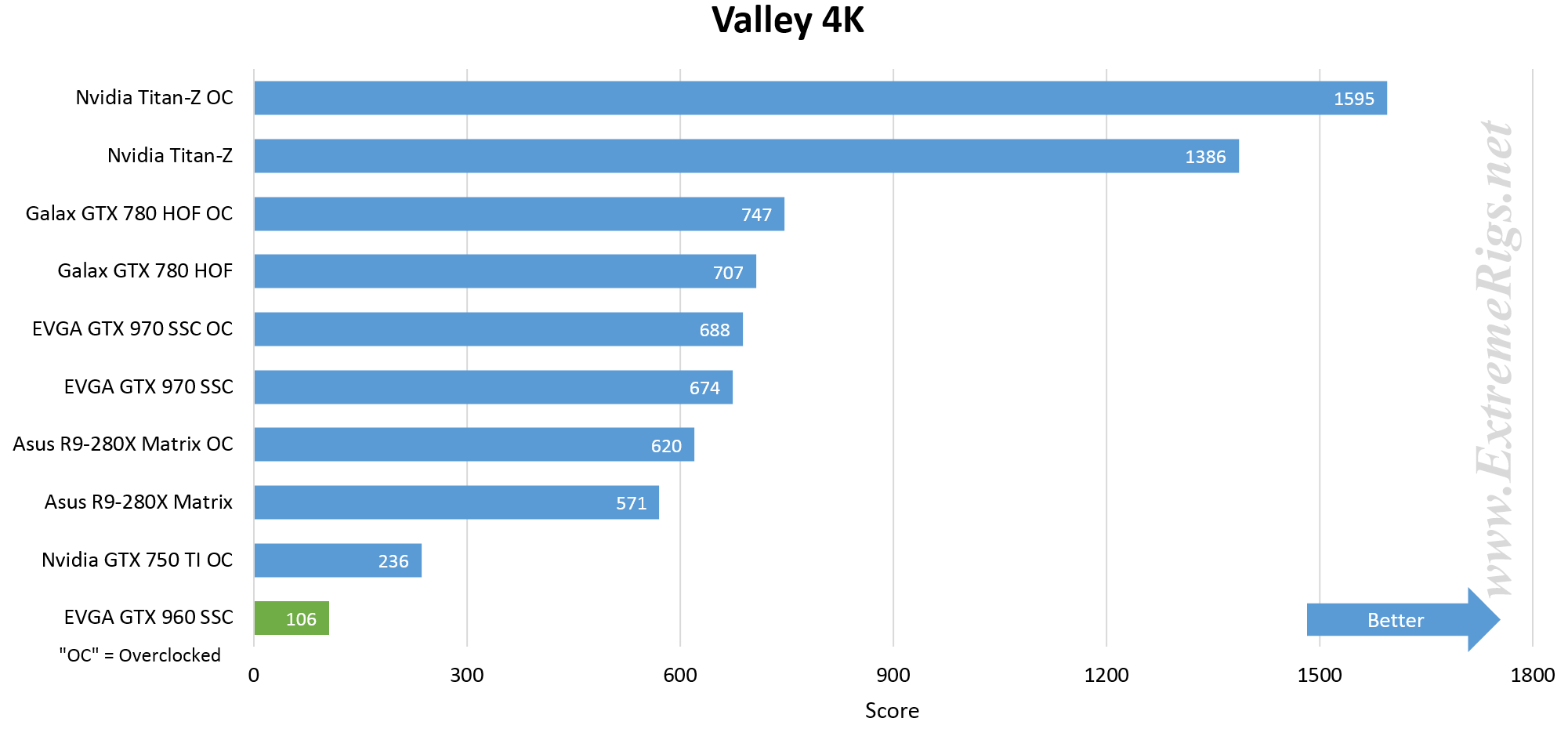
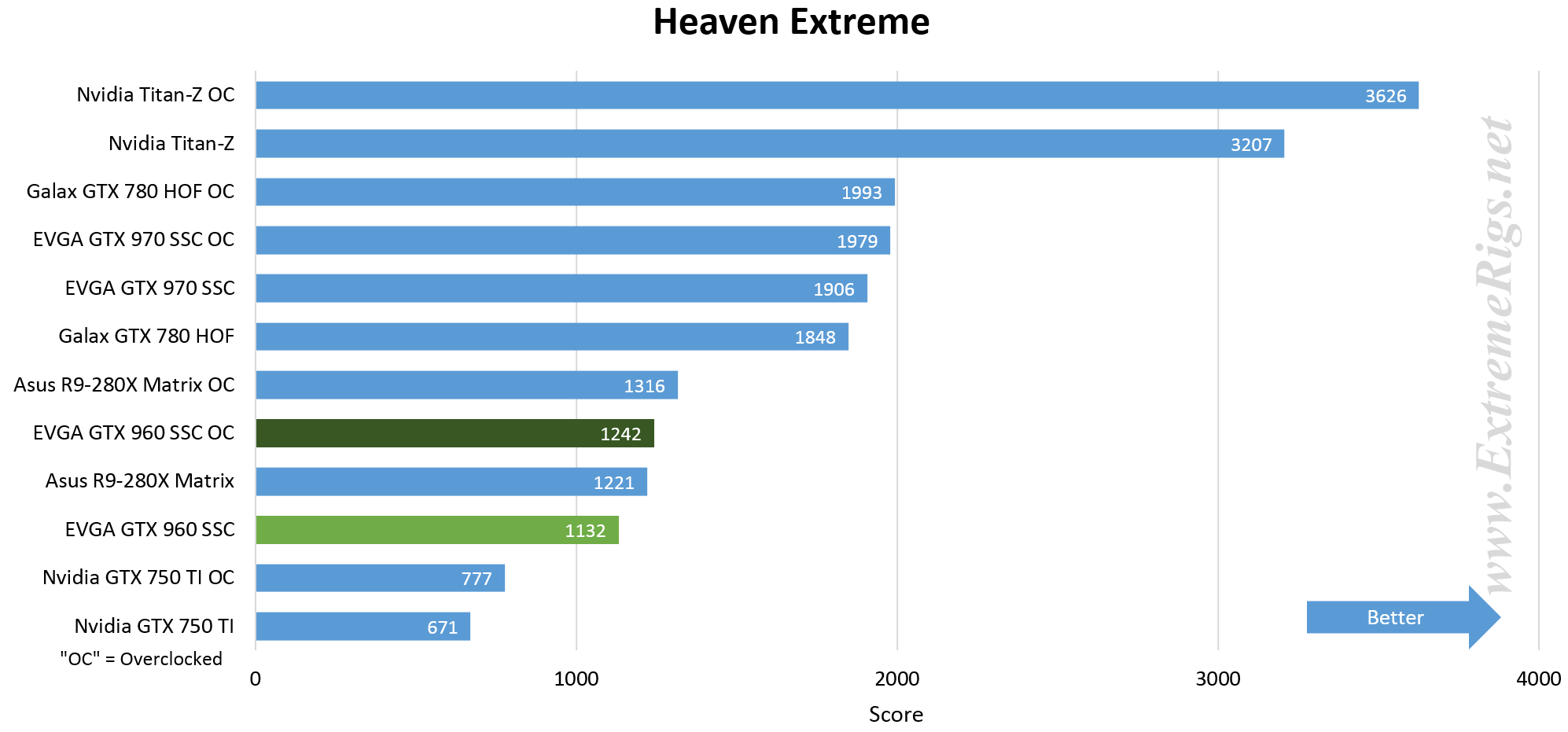
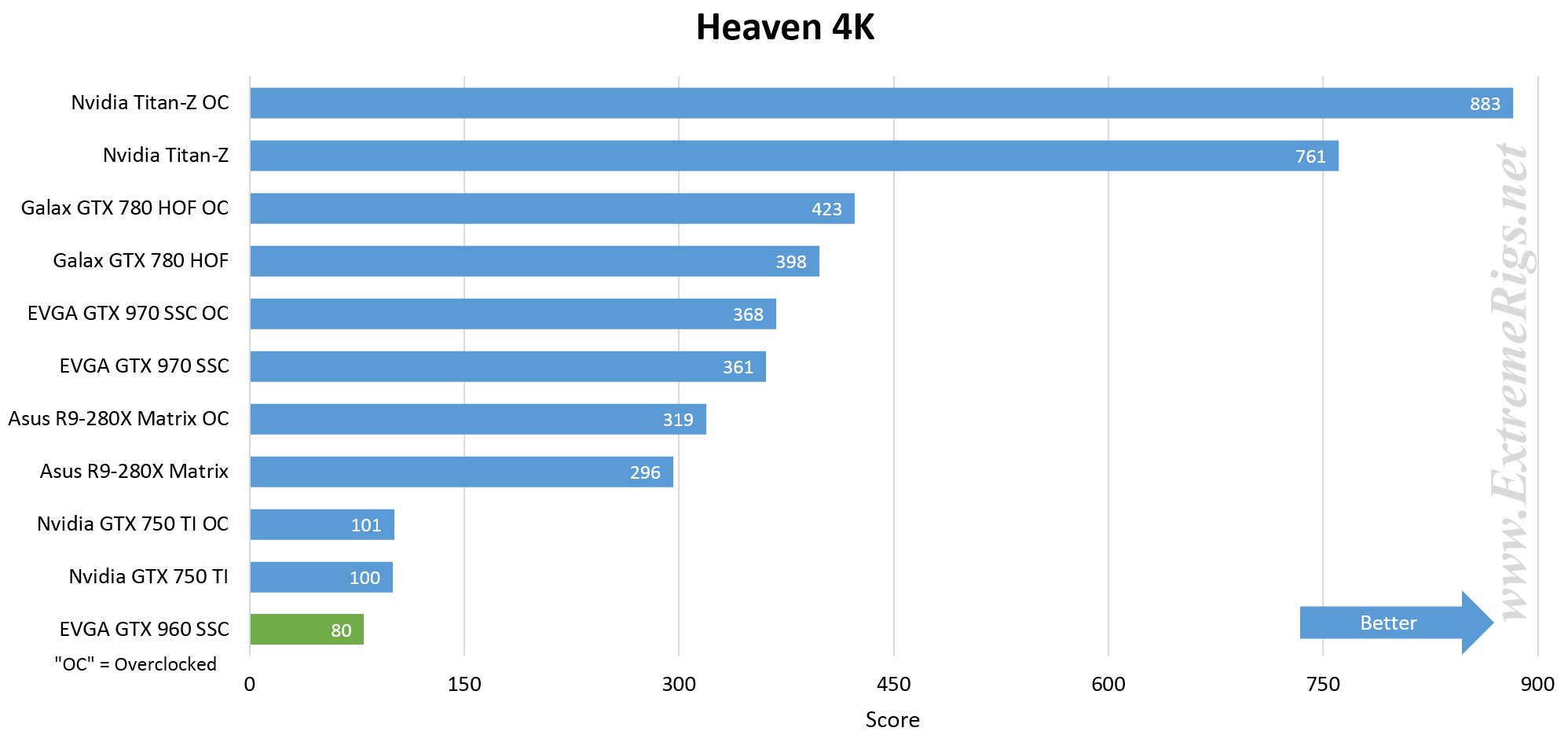
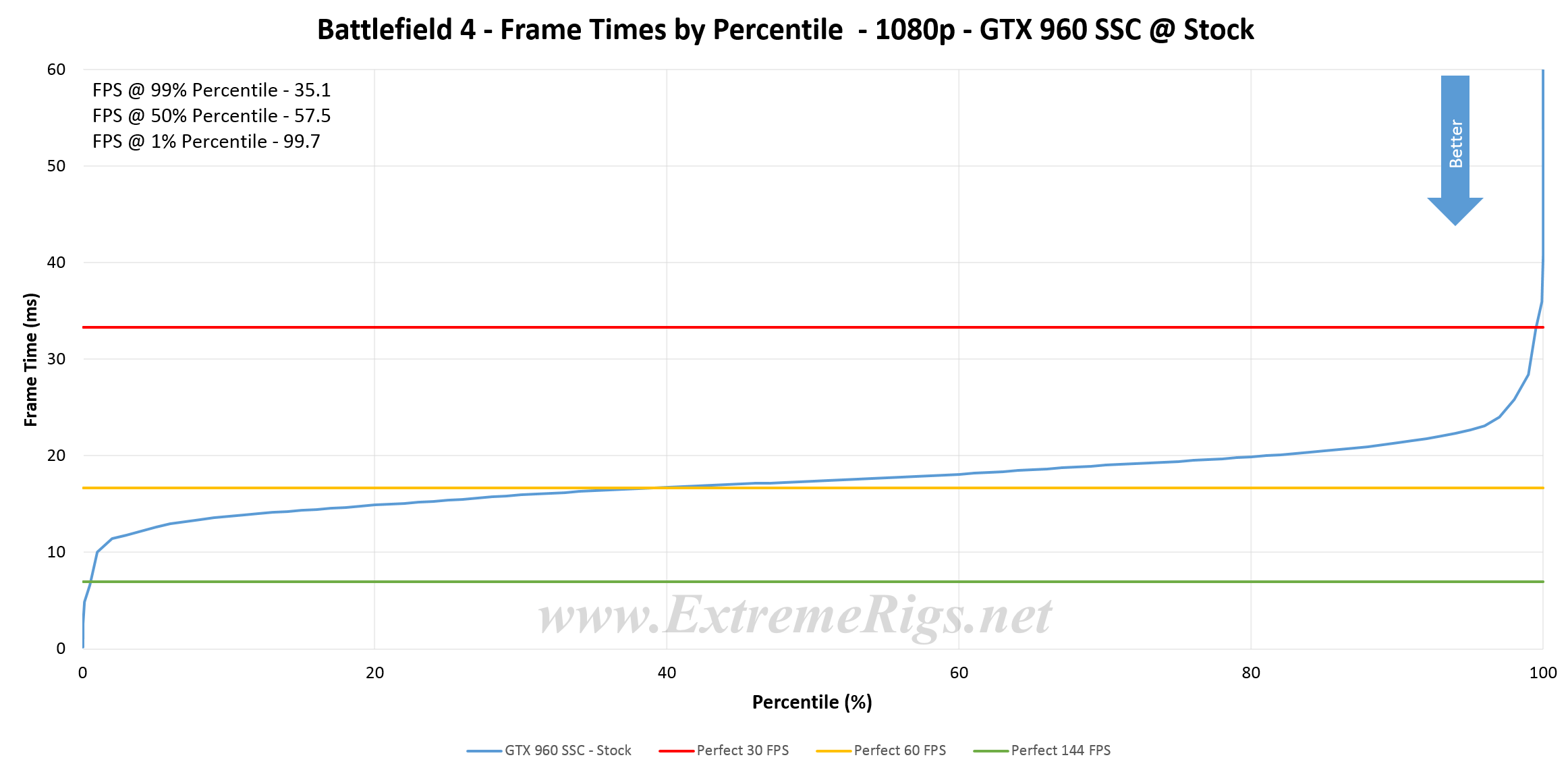
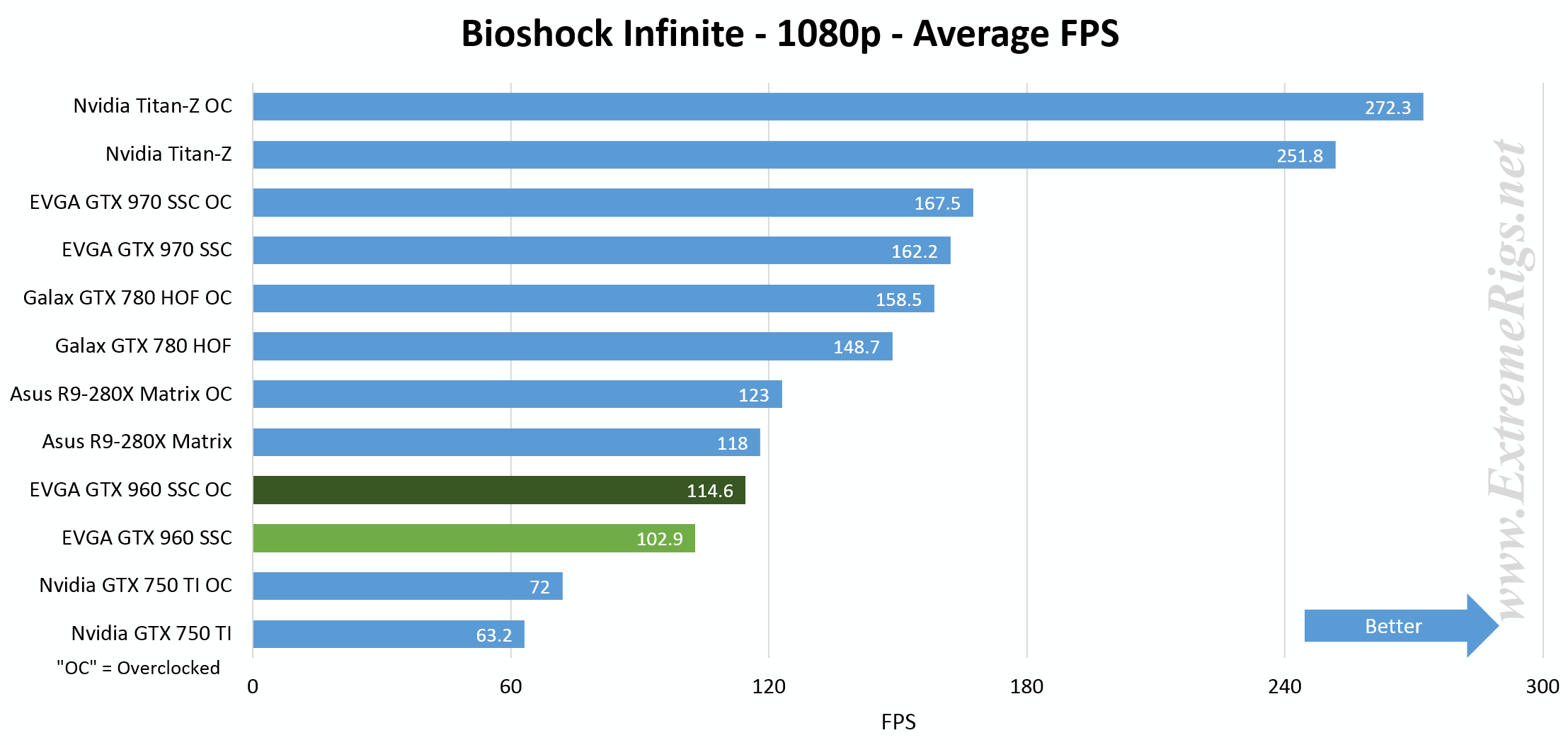
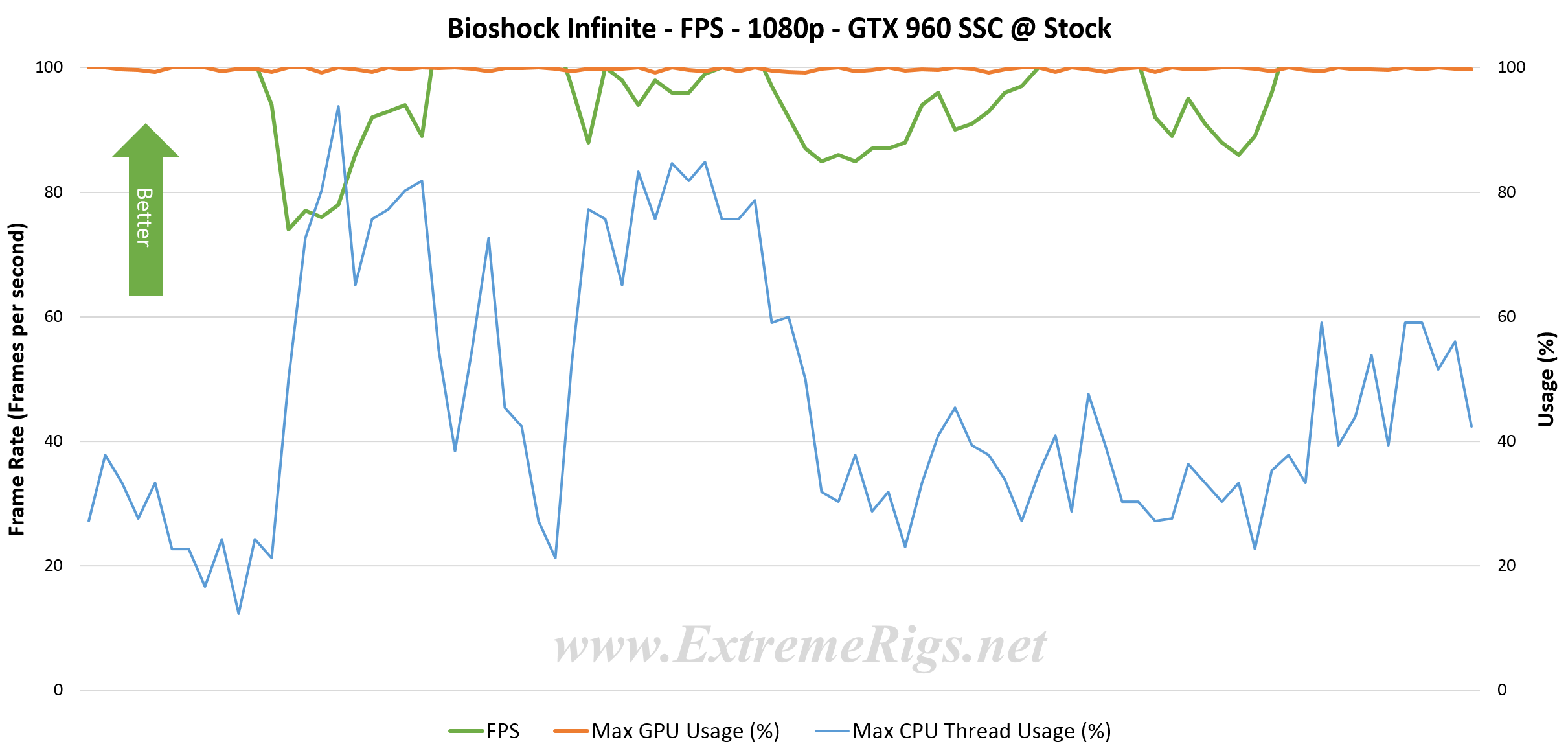
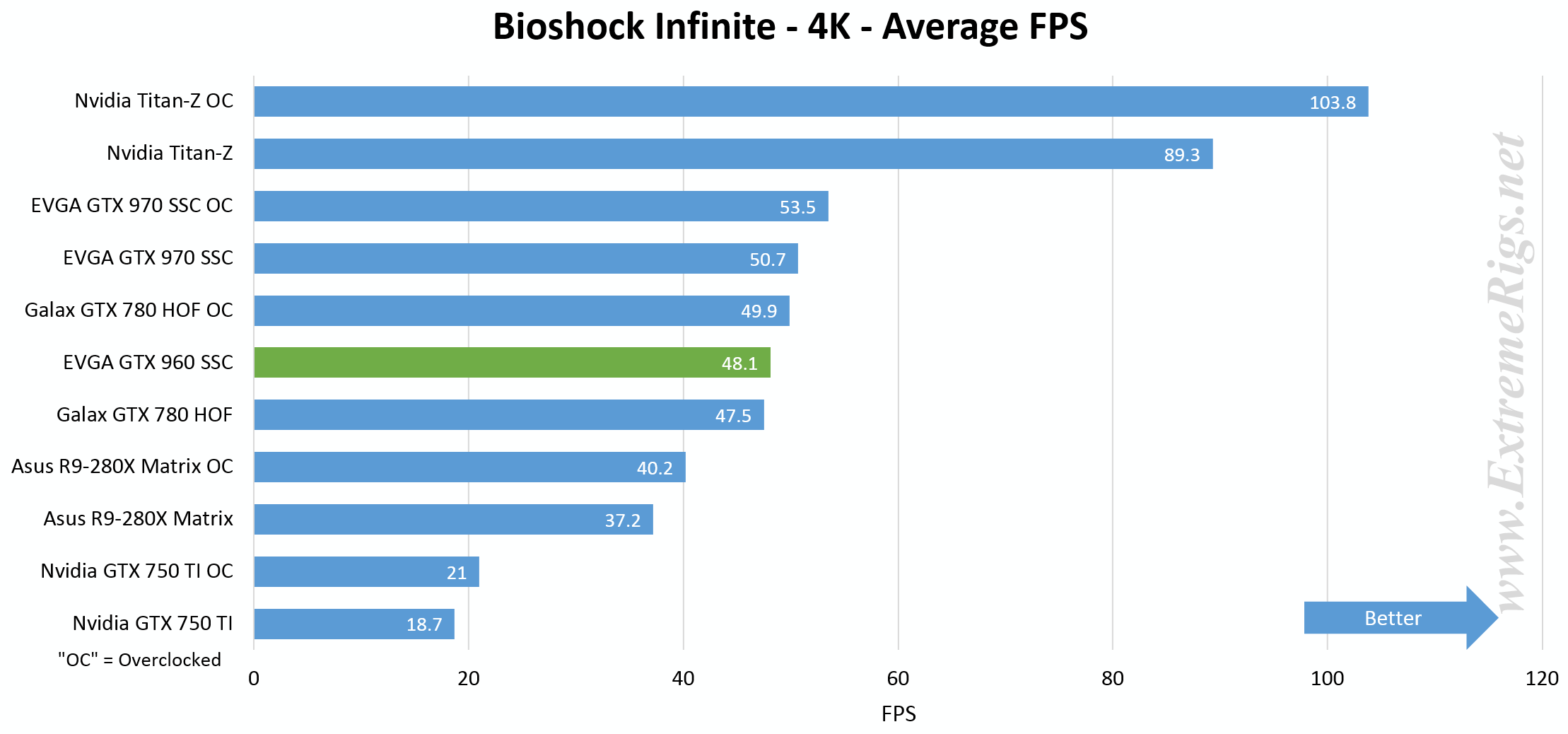
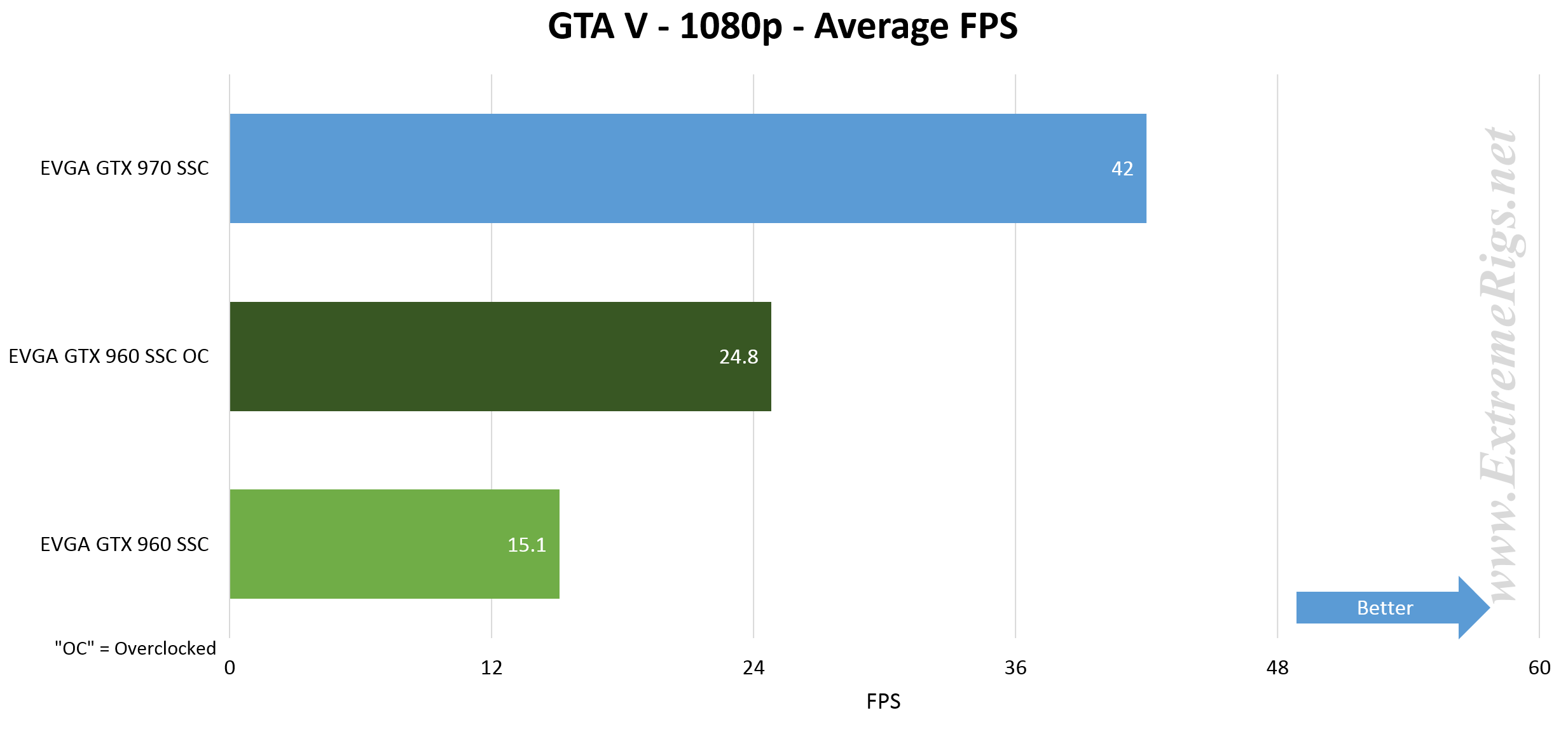
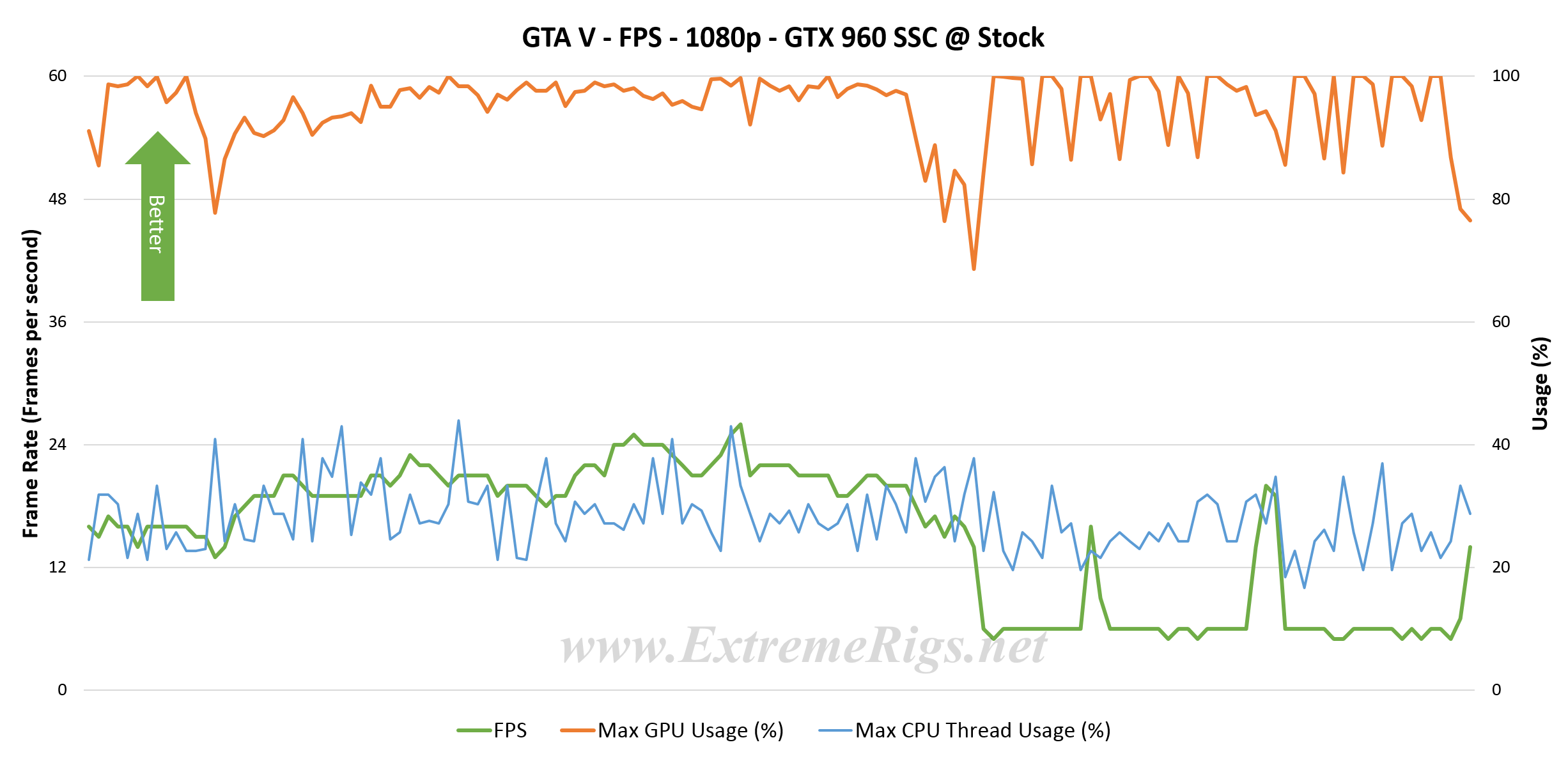
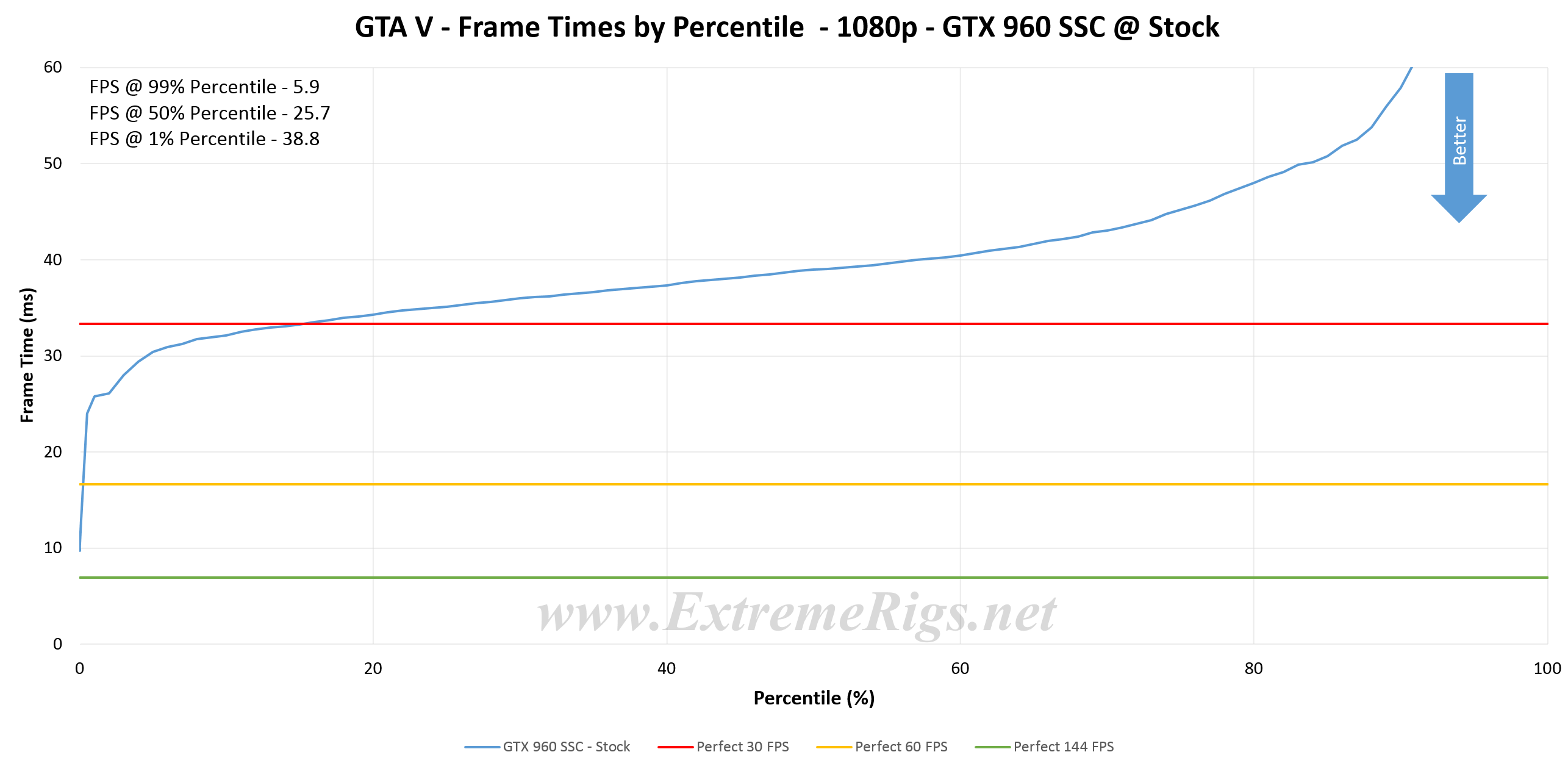
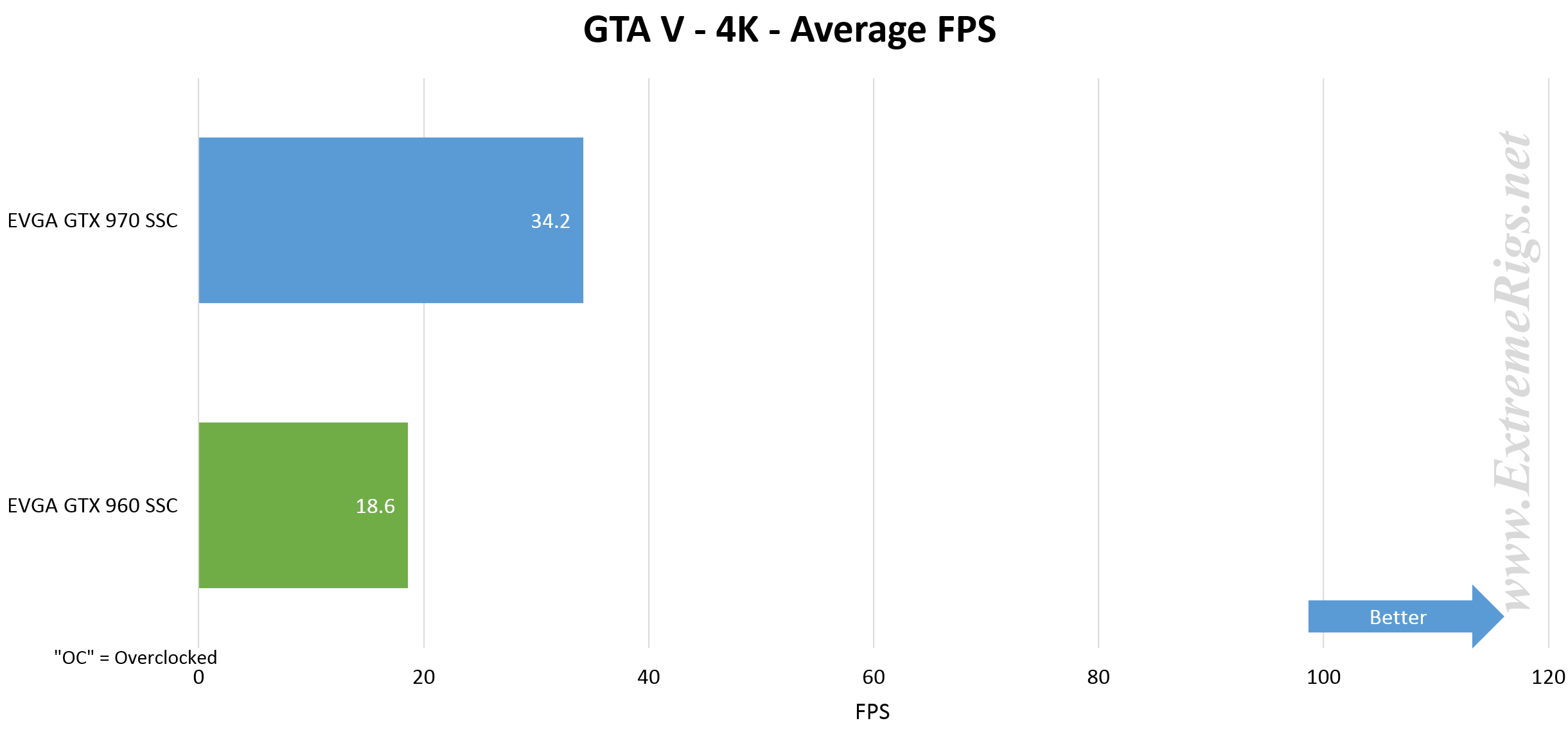
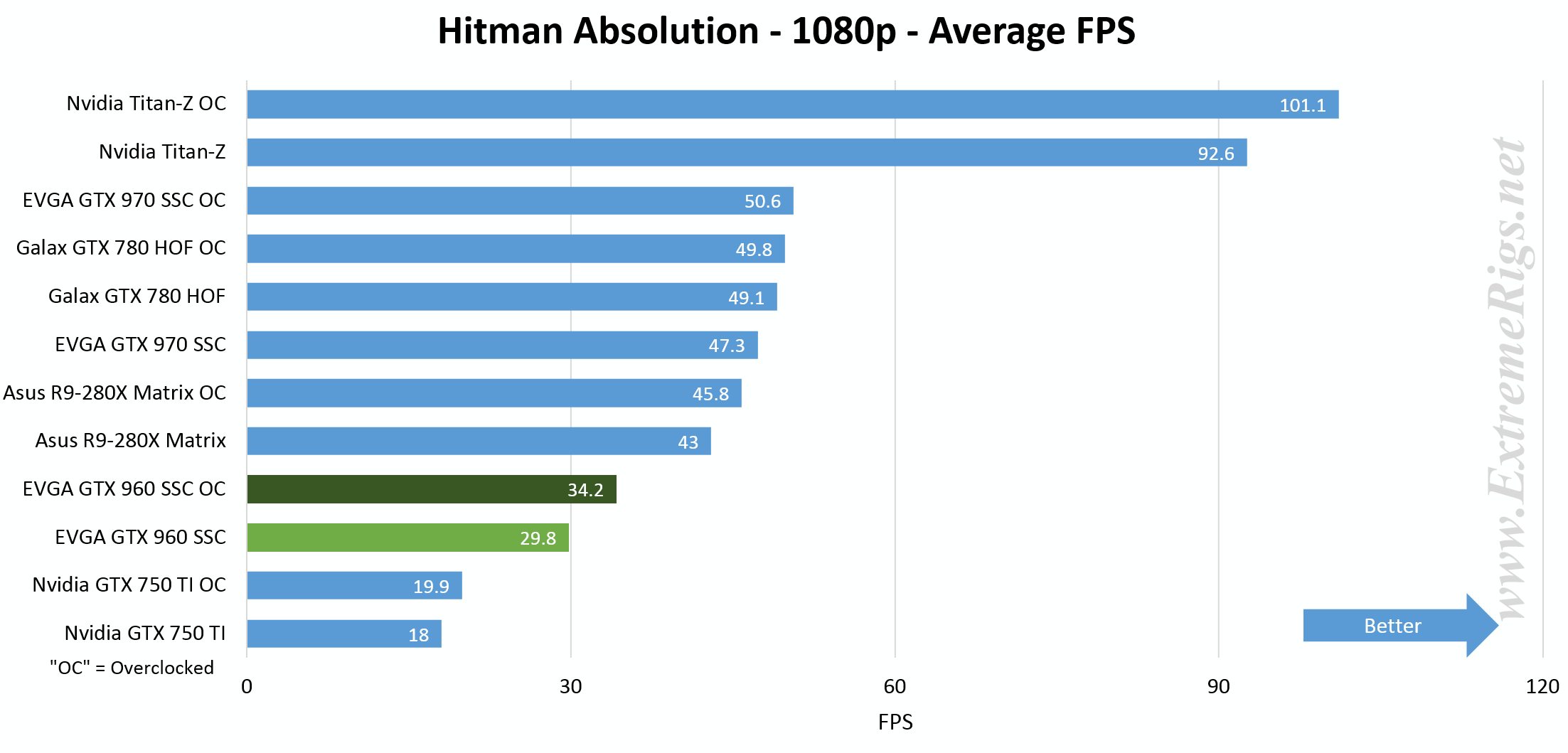
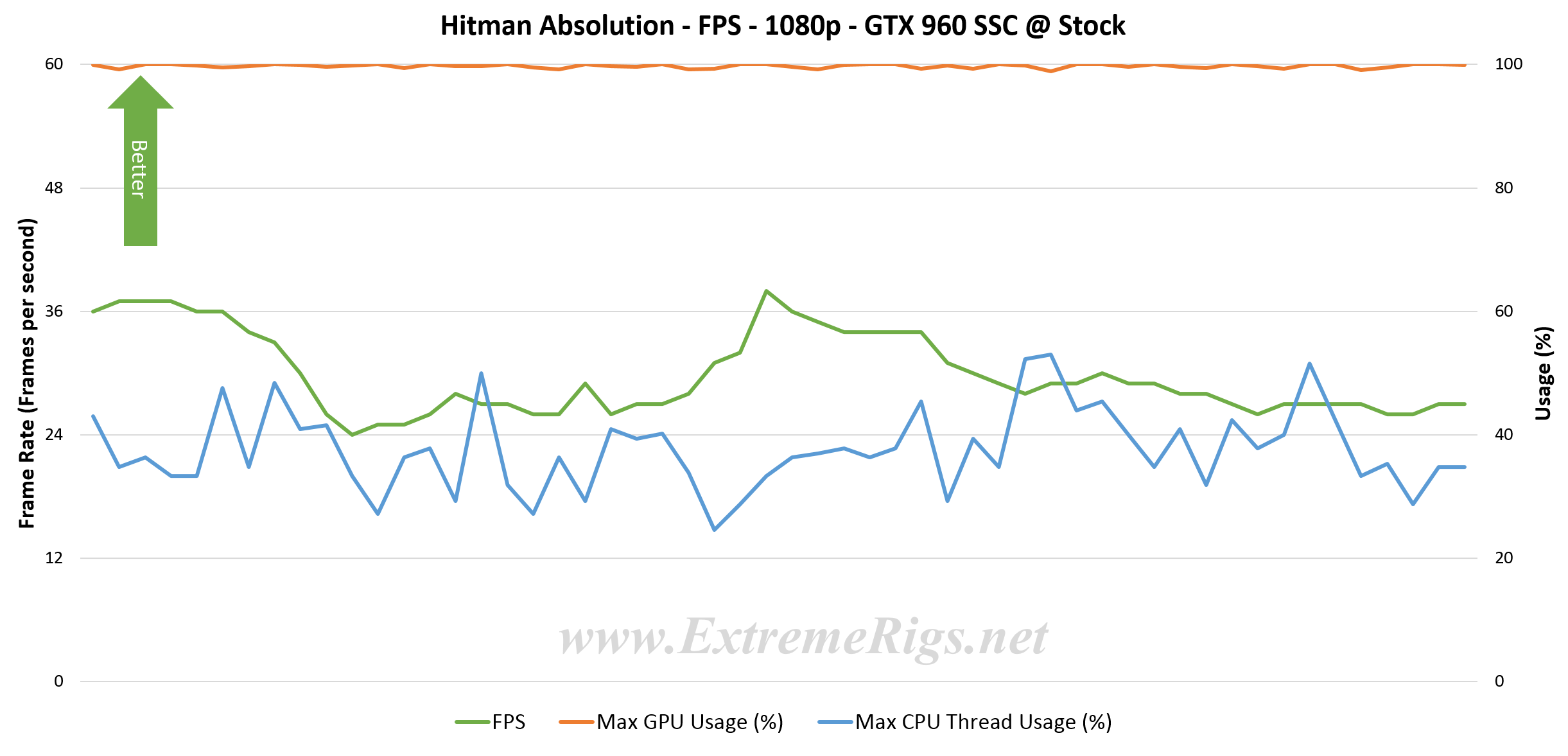
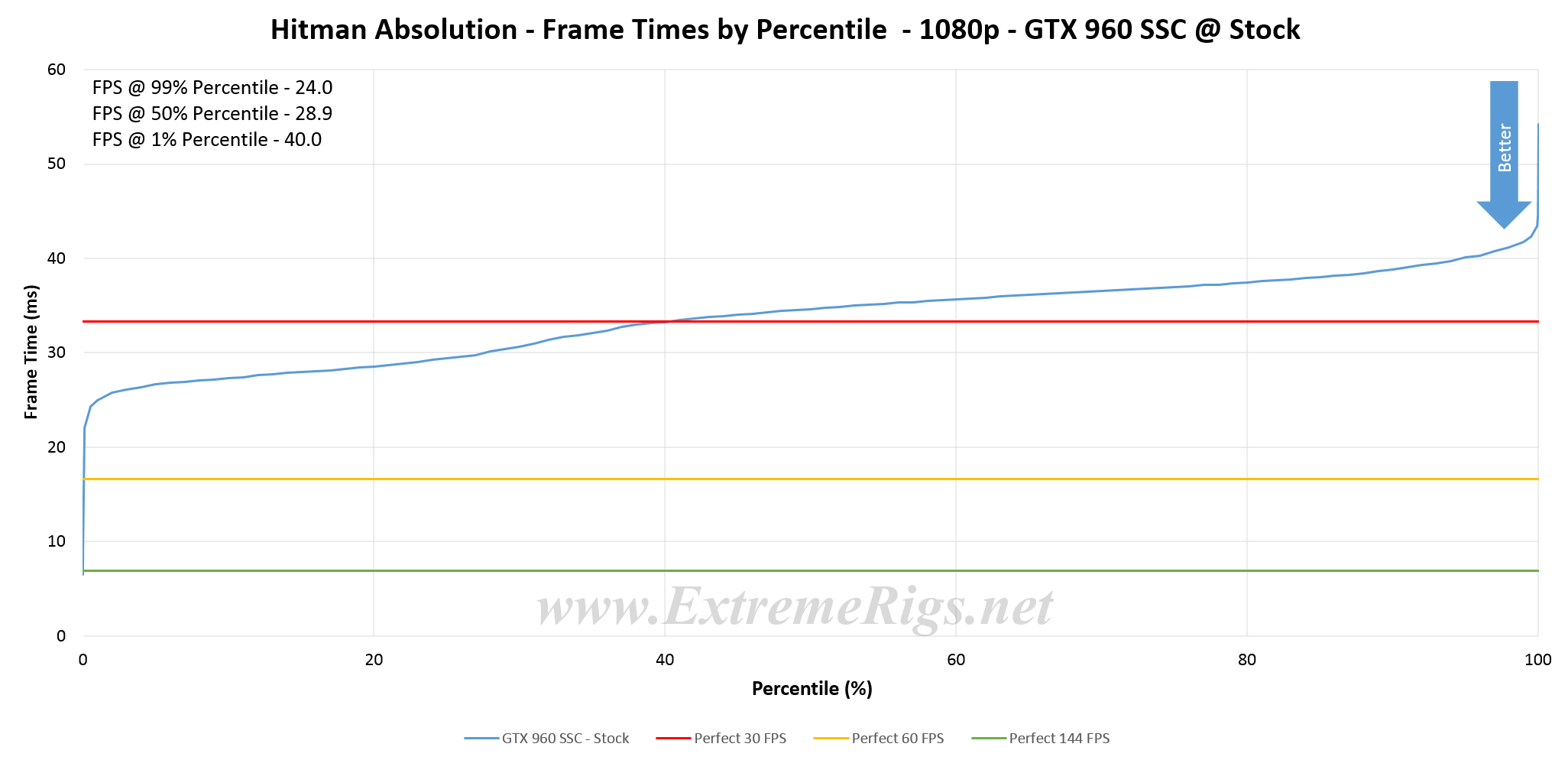
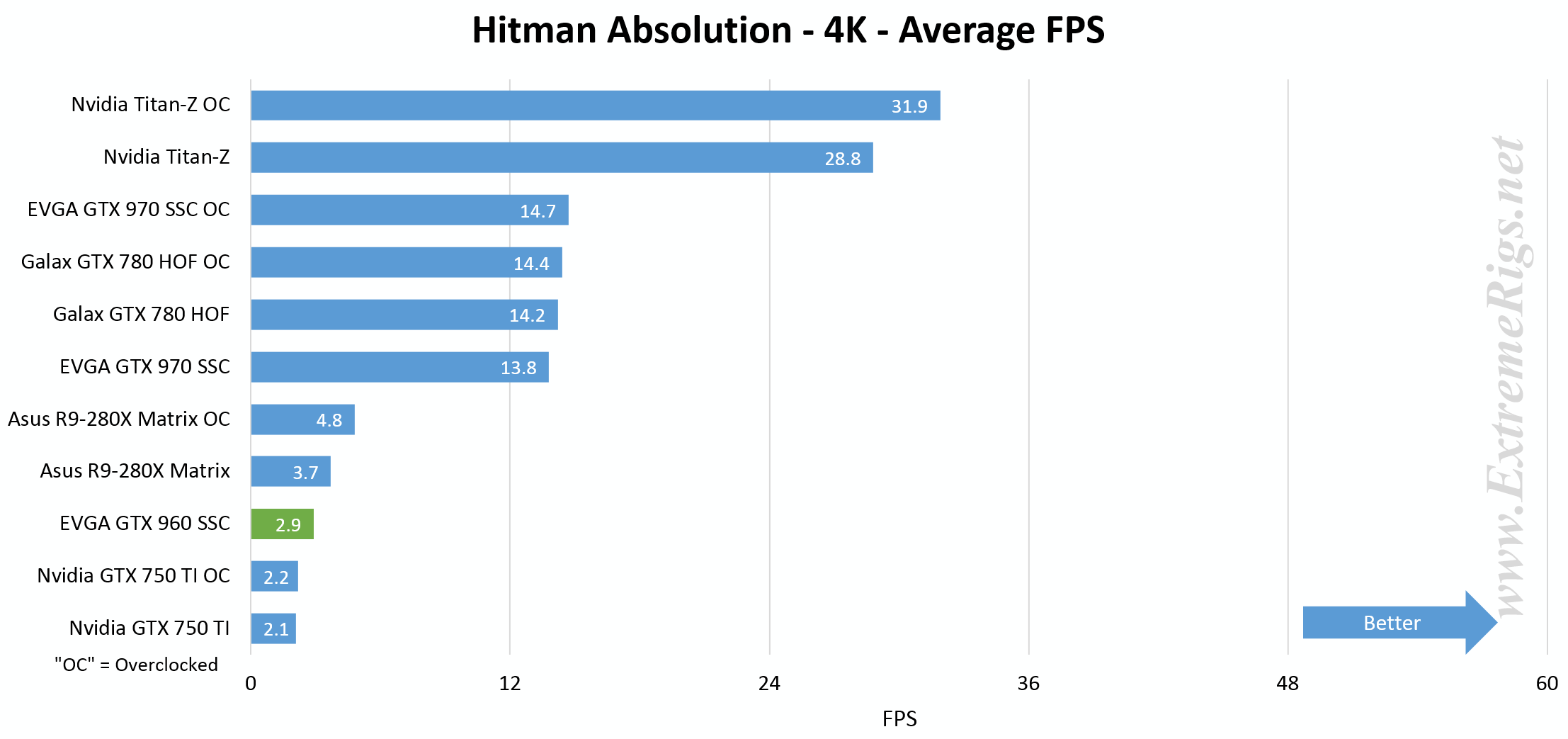
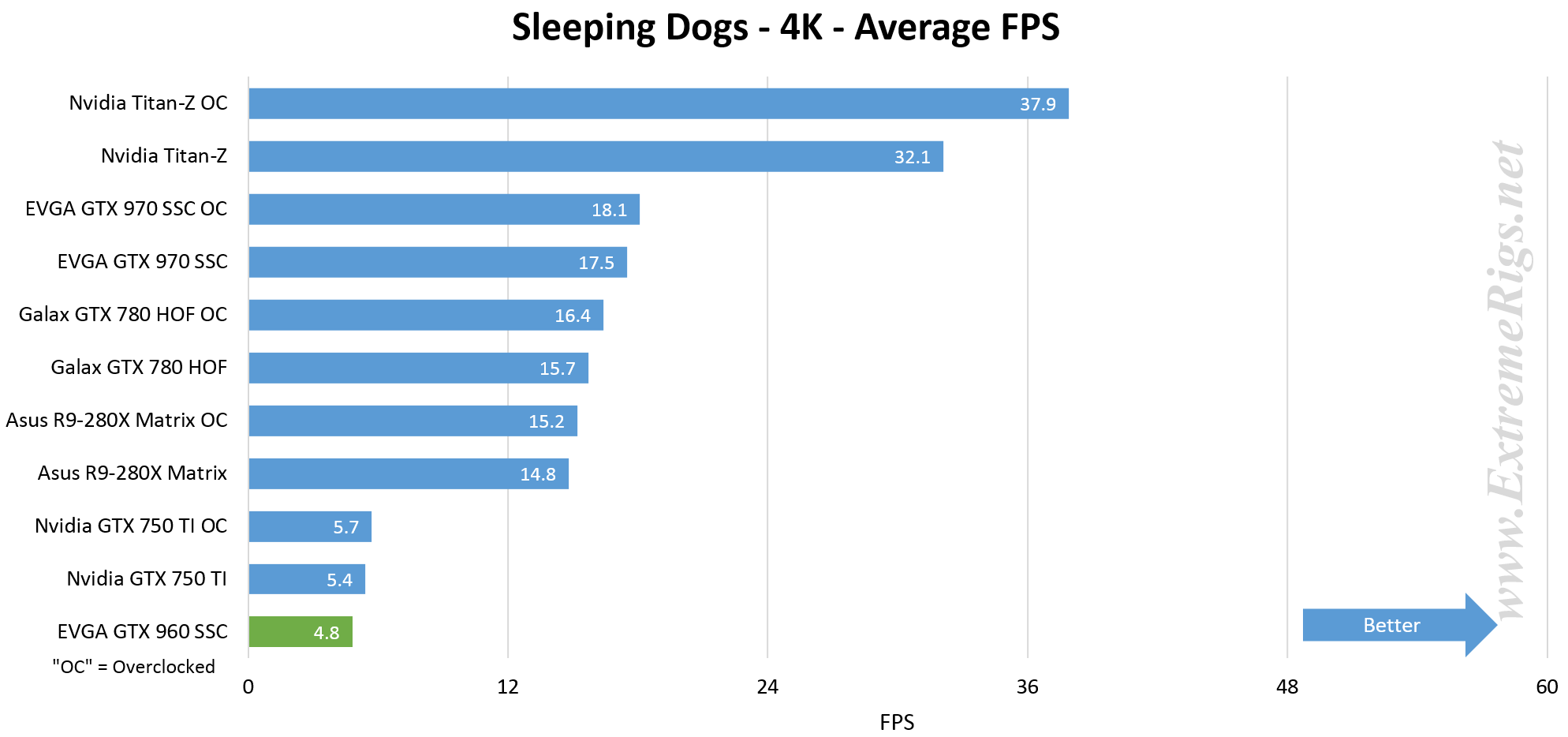
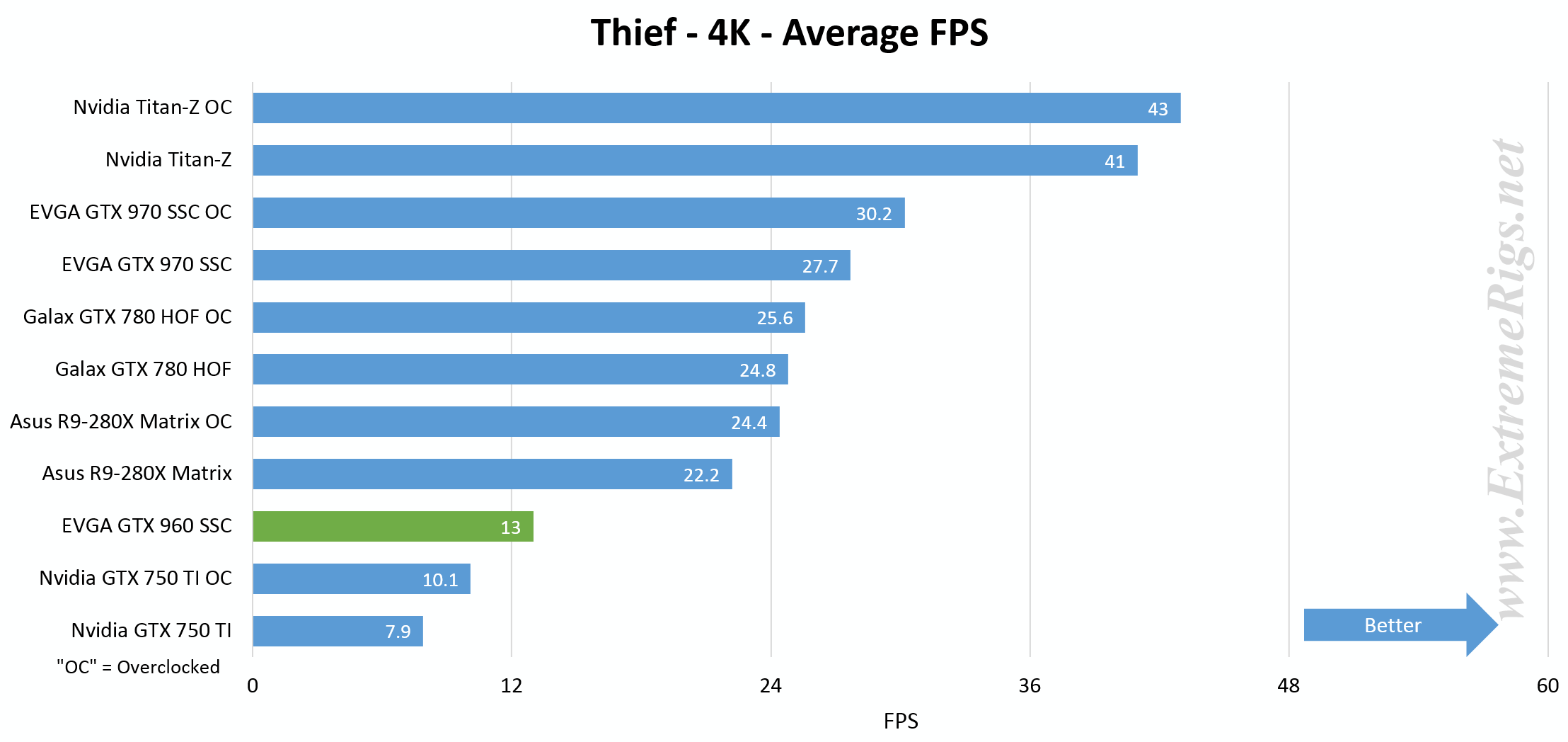
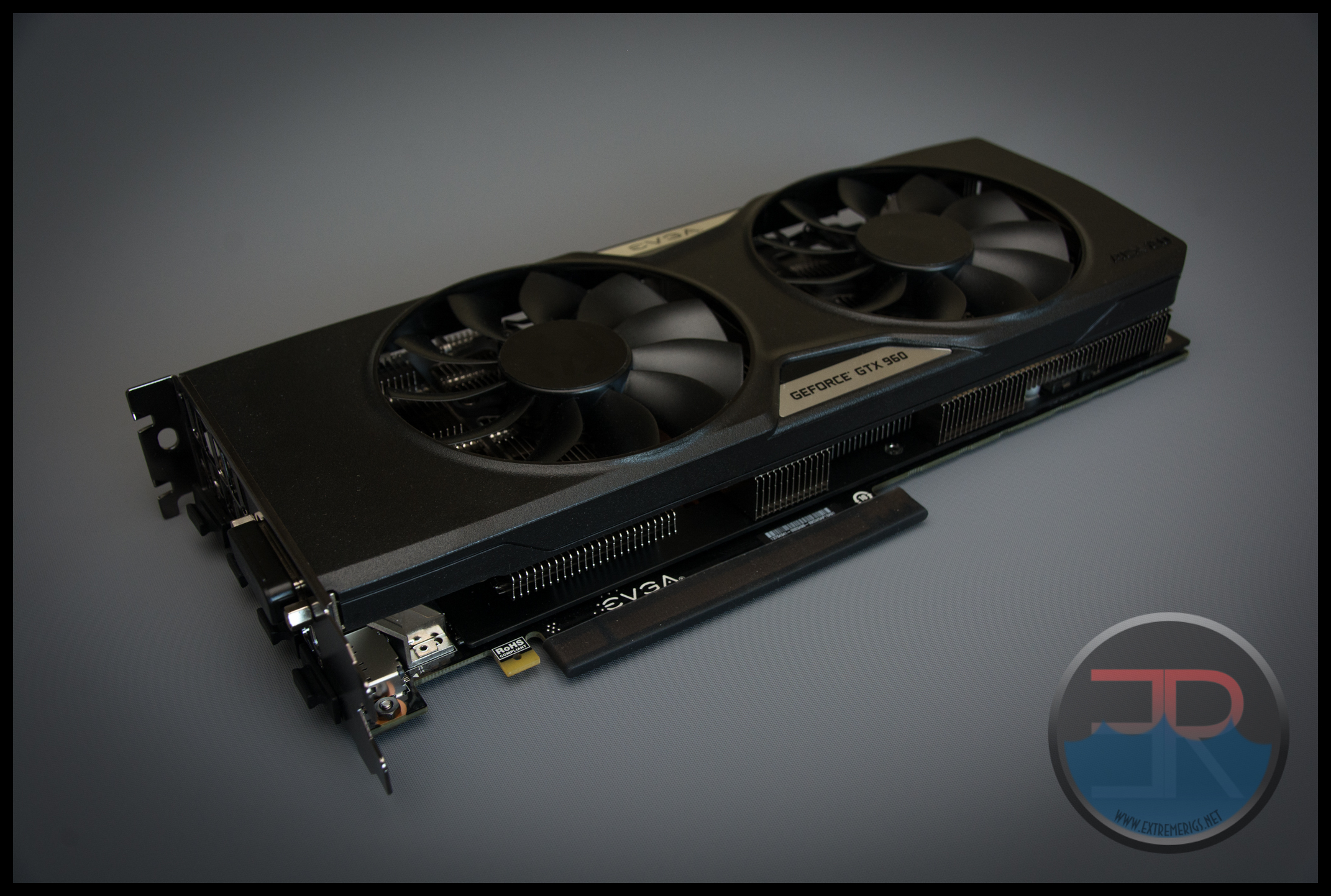
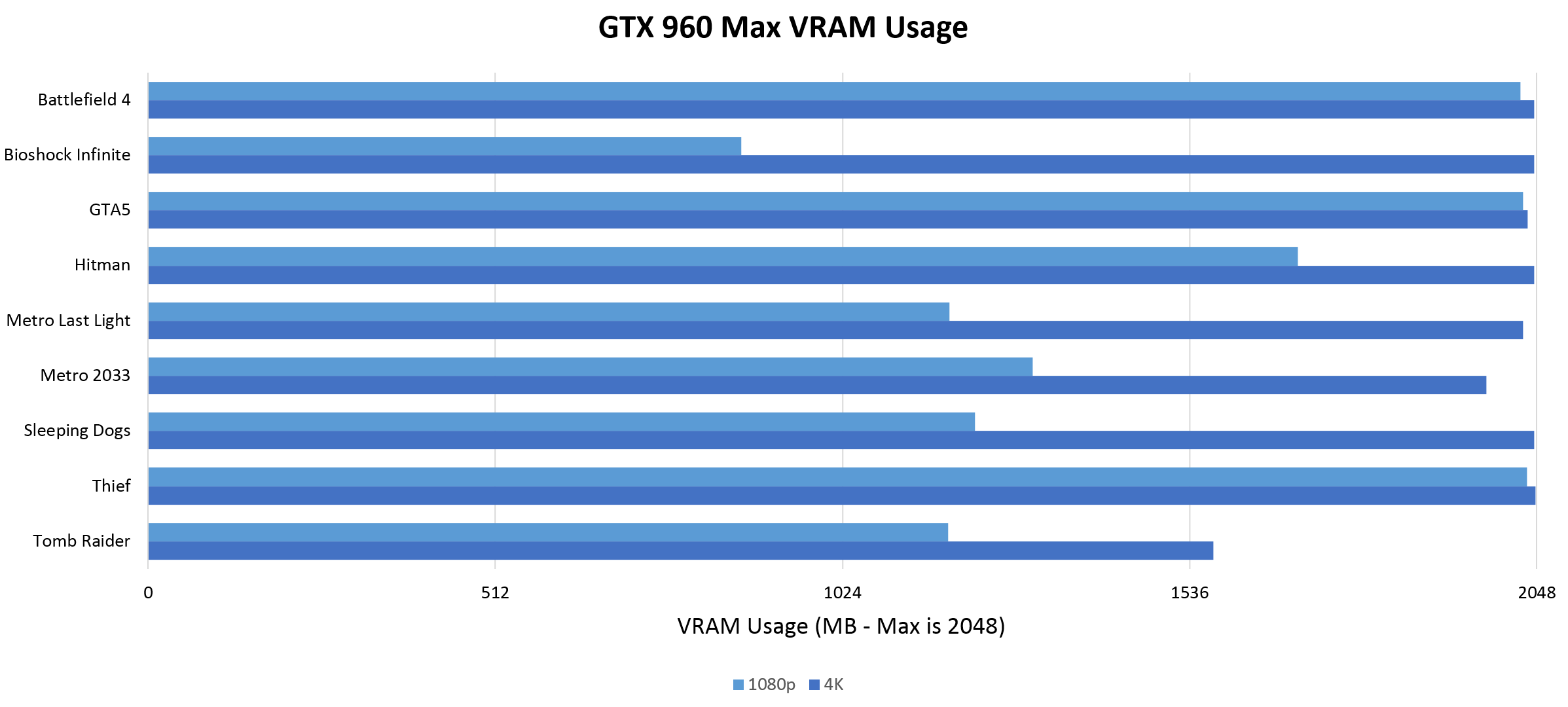
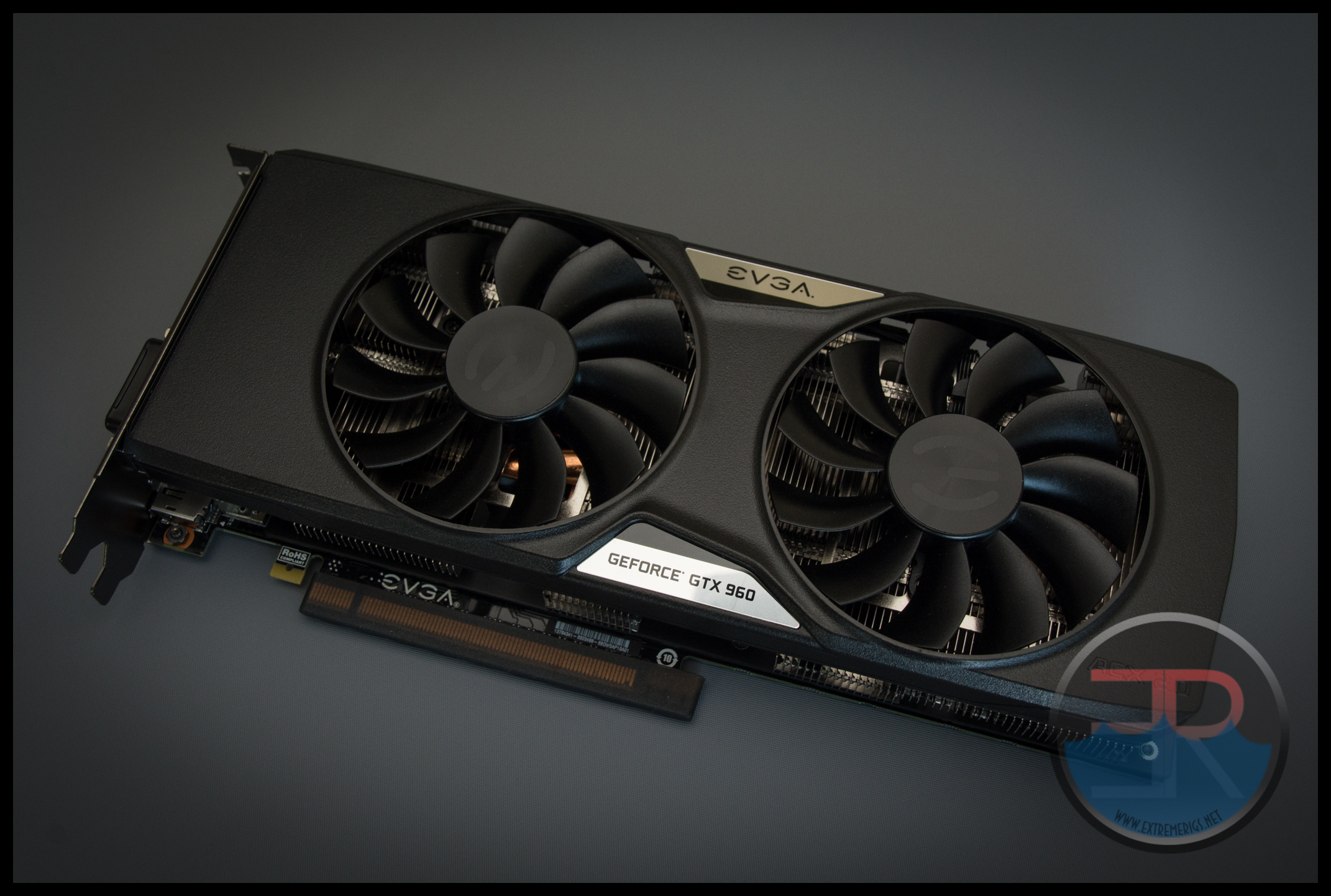

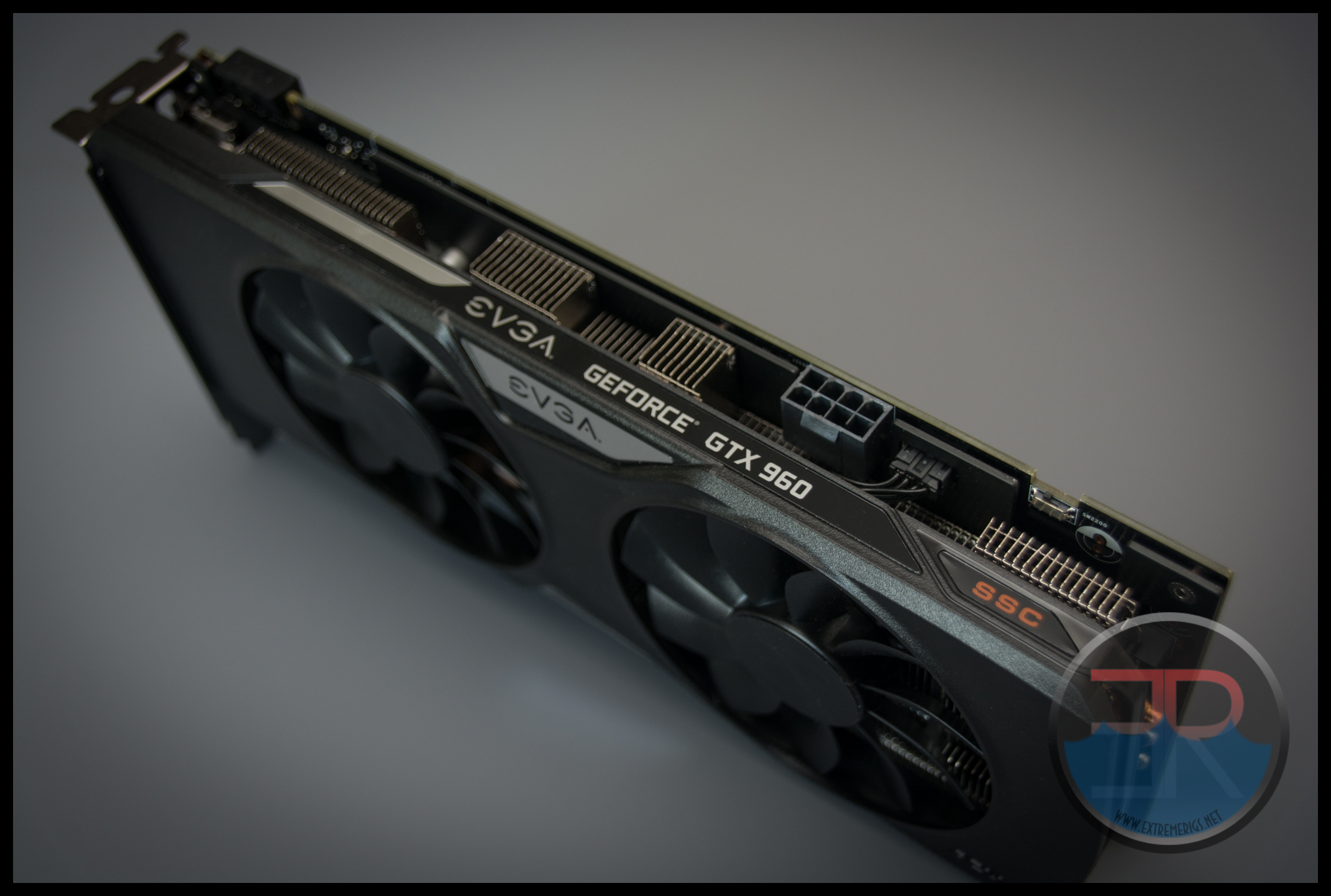



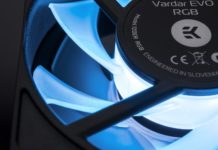

[…] EVGA GTX 960 SSC Review […]
Comments are closed.